It seems we can’t find what you’re looking for. Perhaps searching can help.




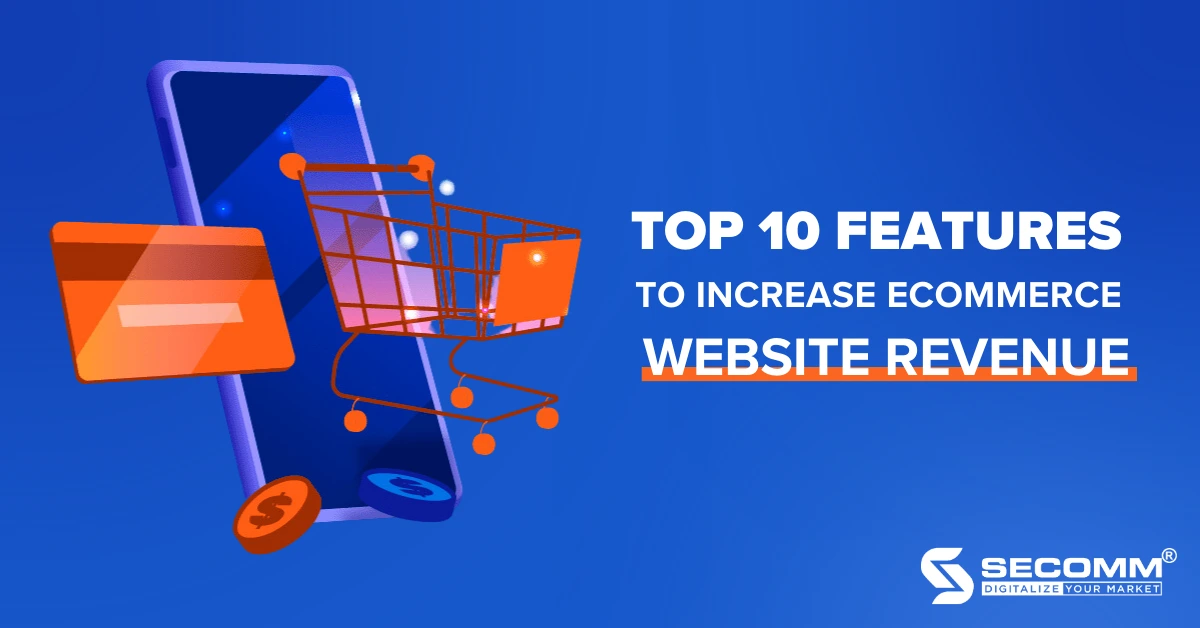
10 ECOMMERCE WEBSITE FEATURES FOR YOUR REVENUE INCREASE
eCommerce has become an essential trend for successful business in the Vietnamese market. According to a report from Facebook’s SYNC Southeast Asia and consulting firm Bain & Company, Vietnam is expected to be the fastest-growing eCommerce market in Southeast Asia by 2026, with a total eCommerce goods value reaching $56 billion, 4.5 times that of 2021, ranking second in the region.
To harness the advantages of this thriving market, businesses need an eCommerce website system with a full range of functionalities, from basic to advanced. Therefore, planning a step-by-step construction of the functional system is crucial to avoid situations where there are ‘missing essentials’ or ‘unnecessary features’ for the business.
Here are some specialized functionalities that any eCommerce website system for businesses in this lucrative market should have!
Display High-Resolution Images and Videos
Images and videos play a crucial role in allowing customers to evaluate the quality of products, especially high-involvement items like jewellery, watches, gemstones, etc.
Additionally, businesses can incorporate features such as 360-degree views, Augmented Reality (AR), or Virtual Reality (VR) to help customers get a comprehensive and realistic view of the product’s quality on the eCommerce website.
In today’s era where ‘good wood comes with good paint,’ investing in high-quality images or videos enhances the impression of a business’s products in the eyes of consumers and demonstrates the professionalism of the brand. Consequently, businesses can keep customers engaged on the website for longer periods, reduce bounce rates, and boost online sales.

Advanced Product Filtering and Search Functionality
One of the essential features of modern eCommerce systems is the ability to filter and search for products effectively, such as live search or ElasticSearch in Magento.
This feature plays a role in directing customers to the detailed product information they are looking to purchase, enhancing the overall customer experience and shortening the shopping journey.
As a result, businesses can improve customer satisfaction and streamline the purchasing process.

Wishlist
Sometimes, customers may be interested in a particular product but decide to purchase it later, or they might find an intriguing product and want to check detailed information before making a buying decision. In such cases, a wishlist allows customers to store these products for easy retrieval when they are ready to make a purchase decision.

Attractive promotions
Although promotional programs are not unfamiliar to consumers in the eCommerce market, this feature has never gone out of fashion for businesses. According to Google, up to 75% of customers view advertisements before making a purchase, and 84% of customers use information from ads to research product details.

Frequently displaying promotional programs/deals such as flash sales, D-Day promotions, festive season offers, etc., will stimulate customers’ ‘sale hunting’ desires, increase website traffic significantly, and boost sales for businesses.
Up-selling and Cross-selling
After leveraging and analyzing the collected data from customers, an advanced eCommerce website system can provide suggestions for similar or related products, aiming to increase the quantity and value of orders. This, in turn, contributes to the growth of online sales revenue for the business.

Up-selling is a technique aimed at selling a more expensive version of a product that a customer already has or intends to purchase by adding new features or accessories to that product. Meanwhile, Cross-selling is a technique aimed at selling complementary products, items that may be related to the product a customer has purchased or intends to buy.
In addition to suggestions for similar and related products on the homepage, product category page, product detail page, and search results page, Up-selling and Cross-selling are also designed to appear on the checkout page to encourage customers to spend more.
Quick order
The quick order placement feature is an essential function for an eCommerce website. To expedite the shopping process, it’s not enough to have a step-by-step ordering process. Businesses need to design a ‘quick order’ function that allows customers to add products to the checkout page immediately. This will be a significant advantage for businesses to expedite the customer’s ‘order confirmation’ process, thereby generating a surge in online sales.

One-step Checkout
Typically, the default checkout process on an eCommerce website is a step-by-step procedure, meaning that each step is completed automatically only after the customer finishes the previous one until the entire process is completed.
According to a report from Adobe, 88% of customers abandon their purchases simply because the checkout process takes too much time and is complicated. To streamline this cumbersome payment process, the One Step Checkout feature has been introduced. This feature provides essential information to customers in just one step, facilitating faster transactions and creating a smoother payment process.

Various payment methods
Diverse payment methods, including card payments (local cards, VISA, Mastercard), e-wallets (MOMO, Zalopay), payment gateways (OnePay, VNPay, PayPal, Stripe), and Cash on Delivery (COD), will enhance the shopping experience for customers. Additionally, businesses should stay updated on emerging payment trends in the eCommerce market, such as creating their digital wallets, implementing Buy Now – Pay Later options, etc., to build a Loyalty Program and provide more payment choices for customers.

However, to diversify payment methods, businesses should choose open-source eCommerce platforms such as Magento, WooCommerce, and OpenCart to have high integration capabilities and ensure compatibility between payment software and the company’s website.
Product reviews
According to a report from Customer Gauge, 92% of customers will read product reviews from other users before making a purchasing decision. Therefore, the product review feature is always prioritized by businesses to be included in the functionality system from the beginning to enhance the brand’s credibility.
A website with many positive comments from previous users will attract attention and trust from potential new customers, laying the foundation for revenue growth for the business. In addition, negative reviews will help businesses identify the weaknesses of the product, thereby motivating them to improve product quality and services for the future.

Compatible on multiple devices
In addition to a visually appealing interface and standard UI/UX, the ability to be compatible across multiple devices such as desktops, smartphones, and tablets is a mandatory feature that must be present on the interface of an eCommerce website. This is not only a factor affecting the Omnichannel experience of customers but also a criterion that influences SEO and rankings from Google.

Furthermore, many other features need to be considered for integration into the functional system of the eCommerce website of the business. This will depend on the strategy and business model of each enterprise, as well as the eCommerce platform the business is using.
With SaaS platforms, businesses will not have many options for features since these systems are pre-built, making it difficult to modify the source code and potentially causing instability if there are automatic edits or additions/removals of features.
In contrast, with open-source platforms, businesses have the freedom to choose features to build at each stage of brand development, as well as the ability to integrate with third-party utilities more easily than SaaS platforms.
With deep expertise and experience in developing complex eCommerce systems across multiple countries such as Vietnam, Australia, the US, and New Zealand, SECOMM understands the challenges in the process of building and deploying eCommerce functions that businesses are currently facing.
Contact SECOMM now for a free consultation on detailed eCommerce system development solutions!
 2
2

 8,583
8,583

 0
0

 1
1
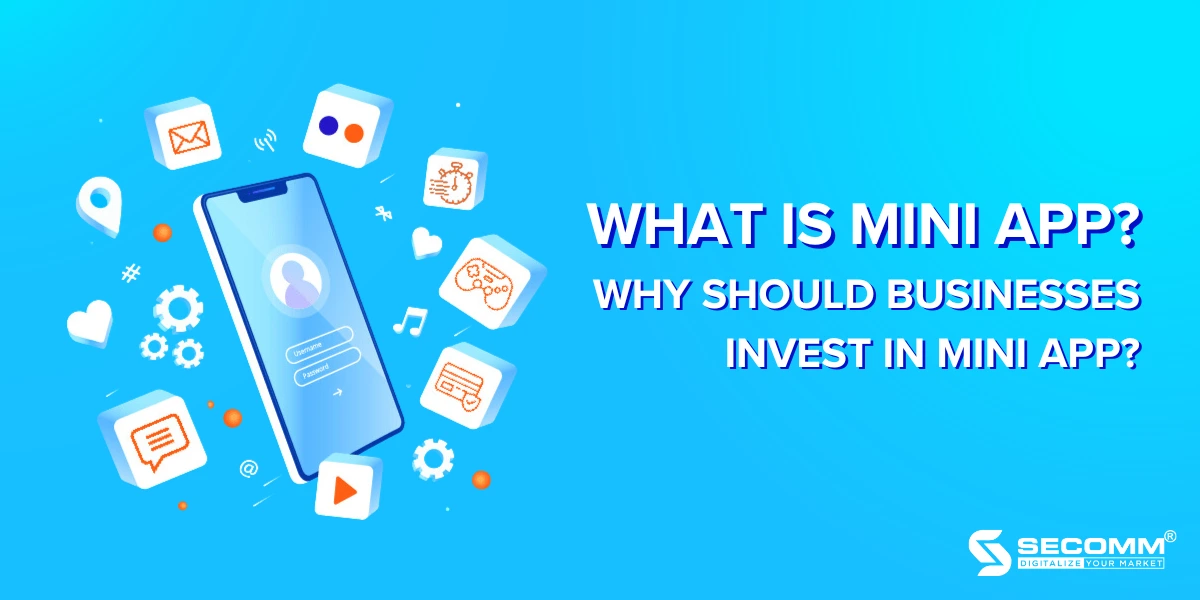
WHAT IS MINI APP? WHY YOU SHOULD CREATE YOUR FIRST ONE?
Mini Apps or Mini Programs are small applications developed within Super Apps, allowing users to access them without the need for frequent downloads or updates like Native Apps (applications for Android and iOS) or Hybrid Apps (cross-platform applications)
Currently, there are various types of these apps, but the most popular ones include:
- On social media Super Apps: Facebook, Zalo
- On eCommerce Super Apps: Shopee, Tiki, Lazada
- On financial Super Apps: MoMo
For example: Mini App on Momo
In addition to internal apps like ‘Heo Đất Momo’ or ‘Đi bộ cùng MoMo,’ MoMo has ambitious plans to expand its ecosystem by integrating these apps from partner brands. This e-wallet has allowed the integration of these apps from various brands in different sectors such as 7Eleven, AhaMart, Highlands Coffee, etc.

Advantages
No registration fees
All Super Apps such as MoMo, Tiki, Shopee, Lazada, and Zalo allow other brands to register for free. However, businesses must pay for in-house IT teams or outsource to external units to develop these apps.
Save time
Compared to Native Apps or Hybrid Apps, Mini Apps have a simpler framework (pre-written code segments) and useful APIs (Application Programming Interfaces), enabling developers to deploy applications quickly within a cost-effective budget.
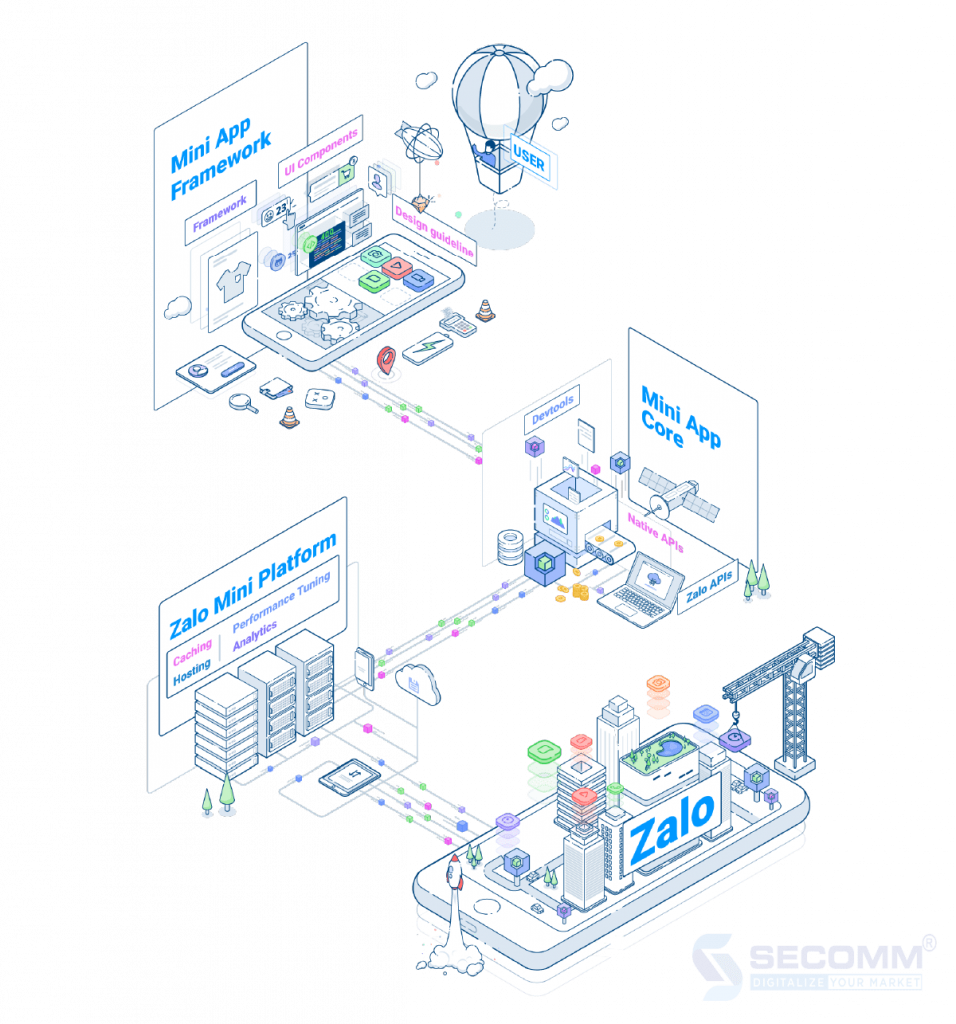
Leverage the ecosystem and users of Super Apps
When businesses release these apps on Super Apps such as MoMo, Zalo, Tiki, Lazada, and Shopee, these brands gain access to and leverage millions of existing users. Here are the user statistics for some of these platforms:
- MoMo: +25 million regular users (“Mobile App 2021” – Appota)
- Zalo: +64 million regular users (Zalo official announcement)
- Shopee: +77.8 million visits/month (iPrice)
- Lazada: +21.4 million visits/month (iPrice)
- Tiki: +17.5 million visits/month (iPrice)
Moreover, these apps can also take advantage of the existing utilities within the ecosystem of these “Giant” Apps, such as online payment, delivery services, marketing tools, etc.
Enhance user experience
These apps typically have very low file sizes, averaging around 10MB. This allows these applications to deliver a smooth user experience. By leveraging the ecosystem provided by “Giant” Apps, customers can have a seamless experience encompassing various activities such as shopping, payment, order tracking, customer support communication, voucher accumulation, etc., all within a single application.
Make a stepping stone in the process of creating your eCommerce website
During the eCommerce journey, businesses go through various stages: Social media commerce (Facebook, Zalo) → Selling on eCommerce platforms (Shopee, Lazada, Tiki, Sendo) → Mini App → Basic eCommerce website and app → Advanced eCommerce website and app.
Among these, these apps serves as a perfect stepping stone for businesses to adapt to technological infrastructure, navigate the eCommerce environment, and launch more effective online business campaigns.
Disadvantages
Scarcity of development units
While these apps are no longer unfamiliar globally, the term is still relatively new in Vietnam. Currently, in Vietnam, only Tiki has a dedicated team developing Mini Apps for businesses on the Tiki platform (Tini App). To develop these apps on other Super Apps, businesses must engage with development teams or agencies specialising in this area.
Not owning data
When releasing a Mini App, businesses must trade off the risk of customer data being in the hands of the ‘big players’ because all source code and data are stored on the servers of the “Giant” Apps.
Not expressing the full uniqueness of the business
Not expressing the full uniqueness of the business: Although each app is unique to individual businesses, it has to adhere to certain standards set by the “Giant” Apps, including frameworks, APIs, UI components, etc., to synchronize the interface with the ‘parent app.’ While this can provide a consistent user experience, it may not showcase the brand’s distinct personality.
In general, these apps serve as a perfect stepping stone for any business looking to enter the eCommerce market by leveraging the advantages of “Giant” Apps. However, limitations such as technical resources, user data, and brand positioning need to be carefully weighed before making a final decision.
 2
2

 14,577
14,577

 0
0

 1
1
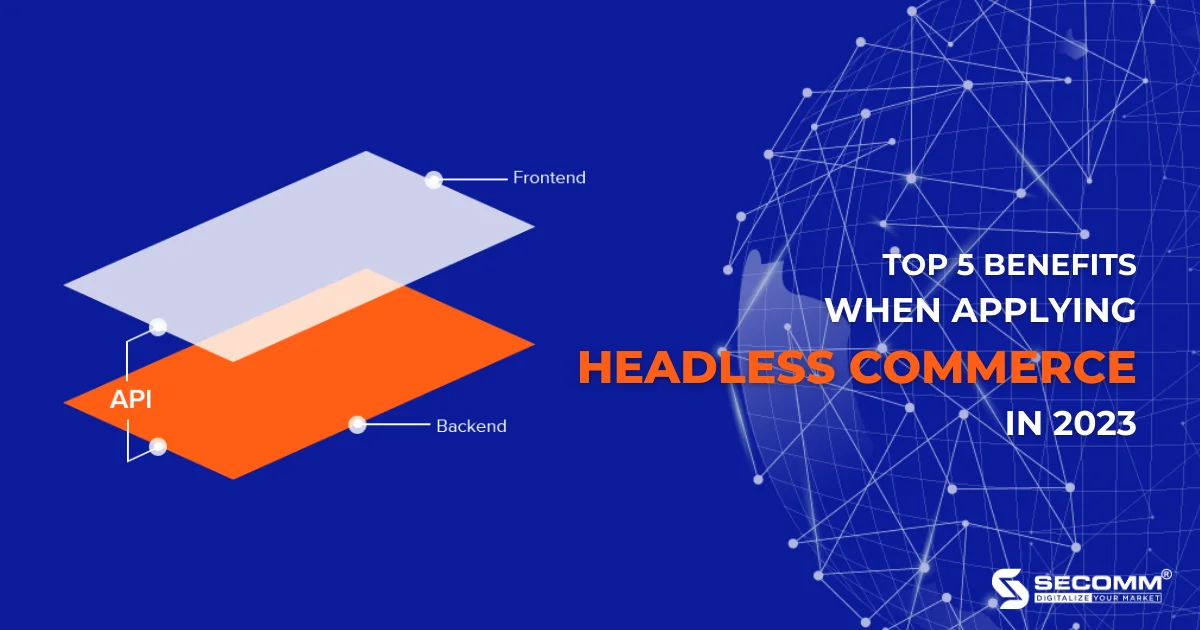
TOP 5 BENEFITS WHEN APPLYING HEADLESS COMMERCE
In just a decade, eCommerce has become the epicentre of the online business market, undergoing continuous and robust growth. This is evident in the explosion of mobile commerce (m-commerce), the emergence of social commerce, and shifts in consumer behaviour and expectations.
So, how can businesses adapt to the ceaseless changes in the market? The answer lies in embracing new eCommerce technologies, one of which is Headless Commerce.
What is Headless Commerce?
Today, businesses have many choices for building an eCommerce website, but fundamentally, the structure of a website includes the following main parts:
- Frontend: Everything that users see and interact with when accessing a website, including the interface, content, features, etc., is received from the backend.
- Backend: All the parts of a website or app that users cannot see, such as the database system, design tools, management tools, and custom functions.
In traditional eCommerce models, businesses often use the monolithic model, which was developed over two decades ago. At that time, the monolithic architecture was the only choice for eCommerce businesses because there were no alternatives other than building, continuously updating, and maintaining.
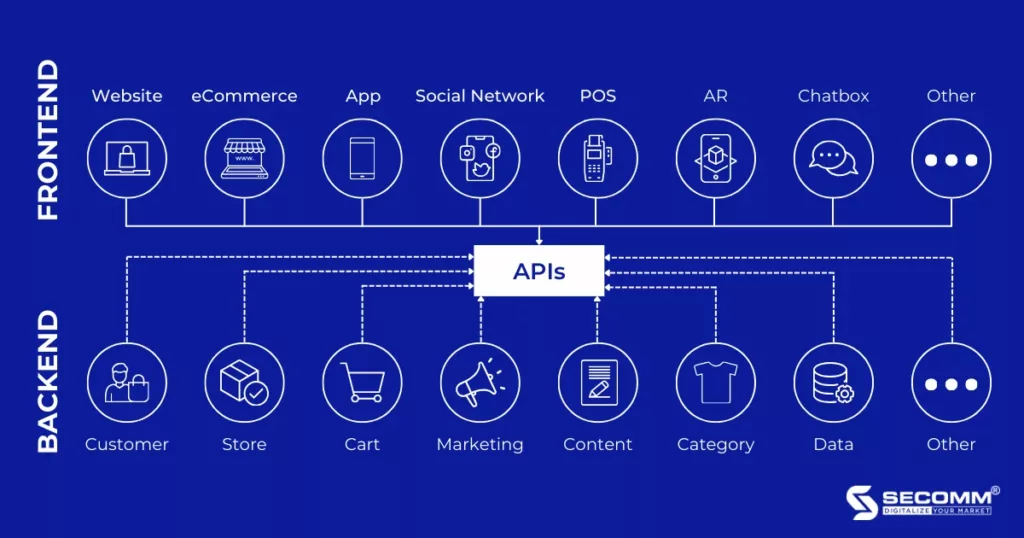
In the Monolithic Model, the frontend and backend are tightly connected, so any changes to the website require improvements in both. Therefore, every frontend change leads to a change in the backend structure and vice versa. Hence, every technology decision becomes riskier, and more complex, directly impacting the entire eCommerce website system.
On the other hand, Headless Commerce is an eCommerce architecture in which the frontend is separated from the backend, and connected through APIs. This allows businesses to easily customize and update functionality without interfering with the user interface or CMS pages.
For that reason, Headless Commerce has many competitive advantages compared to Monolithic Model:
| Headless Commerce | Monolithic Model |
| Separate frontend and backend but still “connect” seamlessly with API | Connect frontend and backend using common protocols (HTML, CSS, etc) |
| Enhance page loading speed | Page load times are slower due to multiple API calls from the platform in use |
| Flexible develop the frontend without needing to update or impact the backend | The backend is susceptible to frontend customization (especially unique designs) |
| Increase integration with third-party services/utilities | Although it is easy to integrate with services/utilities from third parties, it often leads to code bloat (too much source code) slowing down the website system |
| Adapting quickly to new channels enhances seamless customer experiences | Most are difficult to adapt to new sales channels |
Comparison table between Headless Commerce and Monolithic Model
According to Forbes, more than $1.65 billion in funding has been raised for Headless Commerce technologies during the 2020-2021 period.
Several platforms support Headless Commerce technology, including Magento Commerce (or Adobe Commerce), Shopify Plus, BigCommerce Enterprise, SAP, etc.
Benefits when applying Headless Commerce
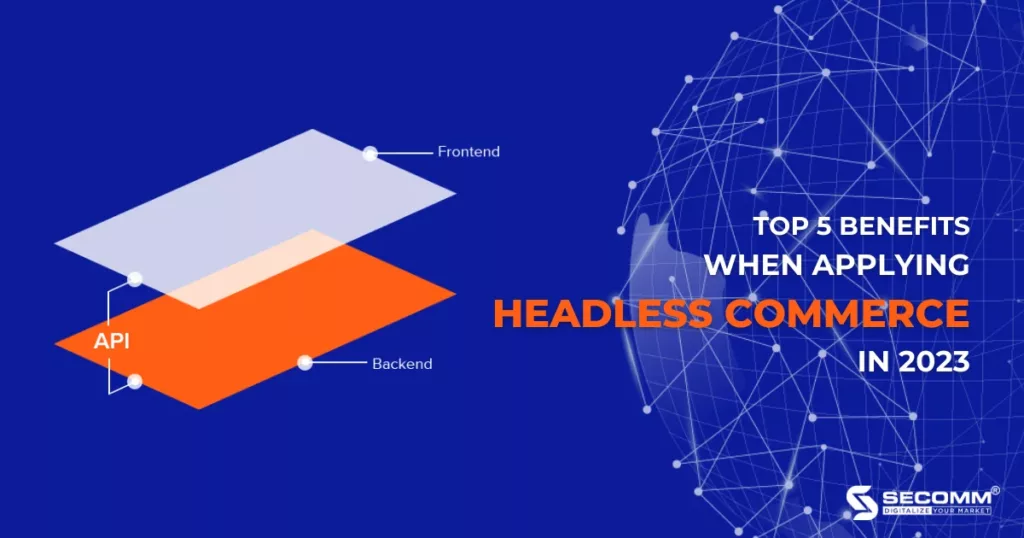
Increase customization
In Headless Commerce application platforms, separating frontend and backend into distinct components allows businesses to achieve limitless customization for designing an eCommerce system. For example, optimizing eCommerce functionalities and customizing the user interface can be done independently without impacting the overall system’s operation. As a result, businesses can better seize new opportunities in this competitive market.
Increase scalability
Another crucial aspect of the Headless Commerce architecture is the connections between the frontend and backend through APIs. Thanks to these API connections, businesses can easily modify existing functionalities and develop new features when expanding the system and business model.
Increase page loading speed
In platforms applying Headless Commerce technology, the frontend and backend are no longer tightly integrated into a unified entity. This separation allows for more independent and centralized data storage through API connections. This approach significantly accelerates the processing of API calls compared to traditional eCommerce platforms.
This enhancement reduces the amount of user data to be received and downloaded, thereby improving page loading speed. Given that page loading speed is a component of SEO (Search Engine Optimization), improving this aspect helps boost the website’s ranking on search engines such as Google, Safari, Cốc Cốc, and others.
Seamless integration
Another notable advantage of API connections is the seamless integration they offer for eCommerce systems. This is particularly evident in the integration with various third-party services and utilities, such as CRM, ERP, PIM, BI, or other pre-integrated tools. Additionally, this architecture enables businesses to rapidly test services, and utilities, and measure their suitability for eCommerce campaigns.
This flexibility in integration allows businesses to adapt their technology stack to evolving needs and take advantage of the latest tools and services in the market, fostering innovation and efficiency.
Omnichannel sales
In the Headless Commerce structure, API connections facilitate seamless integration with various sales channels, including eCommerce platforms, websites, mobile apps, social media, or any future channels with available APIs.
Simultaneously, Headless CMS (Headless Content Management System) aids in optimizing content across devices such as desktop, tablet, and mobile, connected through the Internet of Things (IoT), to provide a seamless shopping experience for customers. This approach ensures that content is consistently delivered and tailored for diverse devices, enhancing the overall customer journey.
Headless Commerce application
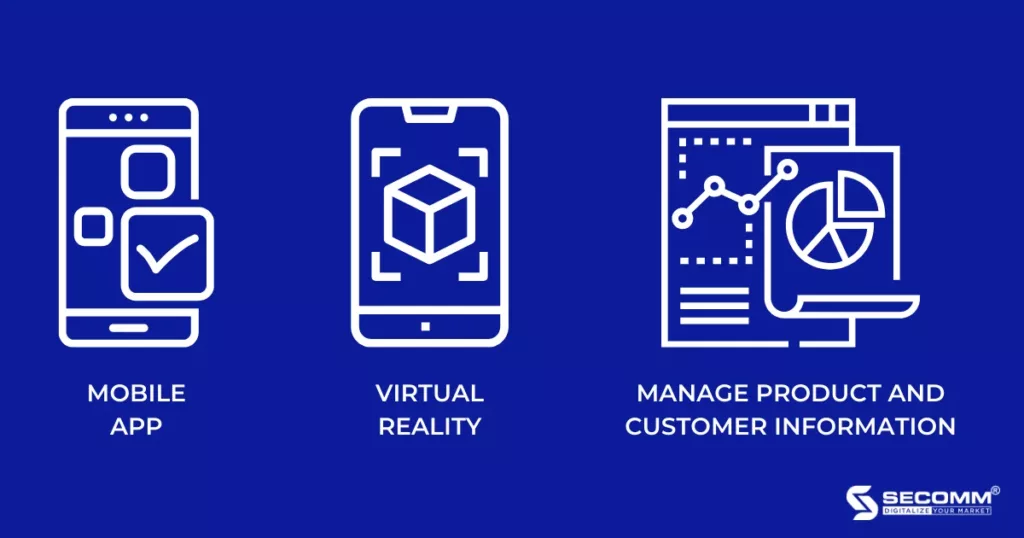
Headless Commerce finds widespread applications in eCommerce implementation. Some common use cases include:
Backend System Management
Allows administrators to manage products, marketing campaigns, and inventory through the eCommerce website’s backend system.
Changes in the backend system do not impact the frontend user interface, and APIs can be controlled to display information on the user’s mobile app frontend.
Augmented Reality (AR) Integration
Utilized by eCommerce businesses to implement AR technology.
Users can view dynamic simulated images of products through augmented reality devices, acting as a frontend linked to the backend through APIs in a Headless Commerce application.
PIM & CRM
PIM (Product Information Management) and CRM (Customer Relationship Management) function as back-office software for processing product information and customer data in the backend system.
In a Headless Commerce structure, backend data can be controlled and displayed on various frontend interfaces through API links, such as eCommerce platforms, websites, mobile apps, and social media.
Parallel eCommerce Deployment
Enables businesses to deploy eCommerce concurrently with Headless Commerce, offering various advantages.
The decision to adopt Headless Commerce depends on the long-term eCommerce business strategies of a company.
In summary, the implementation of Headless Commerce alongside eCommerce is becoming a realistic option for businesses with long-term market strategies, thanks to the numerous benefits it offers. Whether or not to adopt Headless Commerce and when depends on various eCommerce business strategies.
With over 8 years of experience designing complex eCommerce systems for companies like An Nam Gourmet, Laybyland, Jasnor, etc., SECOMM understands the challenges that businesses face when exploring new eCommerce technologies.
Contact SECOMM now for a free consultation on detailed eCommerce system development solutions!
 2
2

 9,372
9,372

 0
0

 1
1
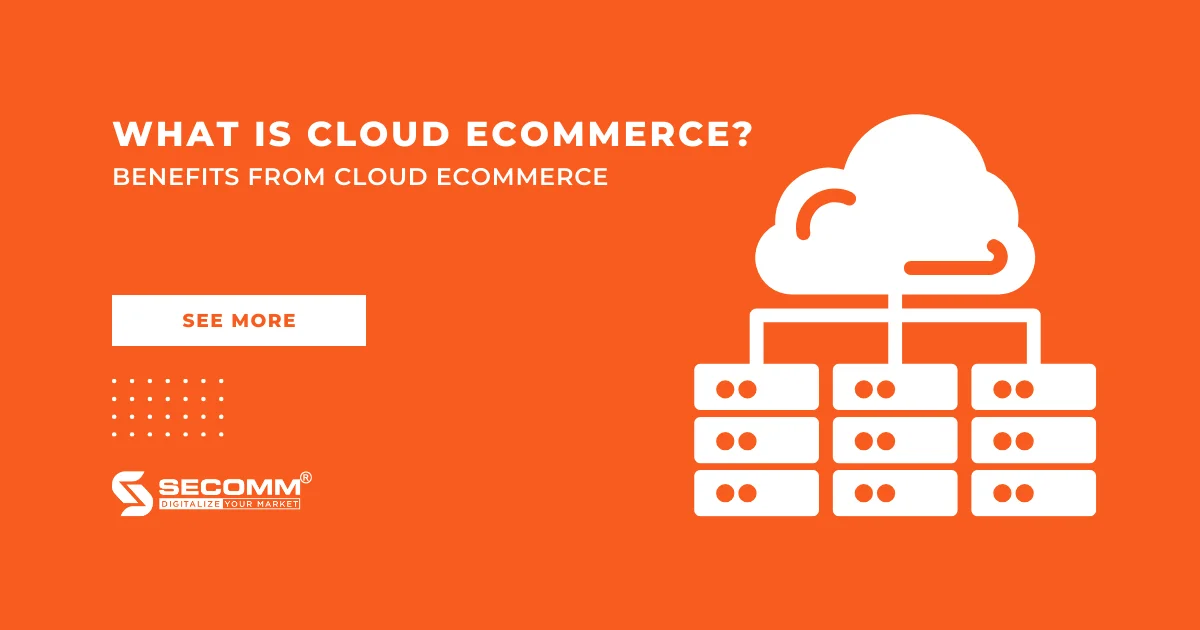
WHAT IS CLOUD ECOMMERCE? 4 KEY BENEFITS OF CLOUD ECOMMERCE
eCommerce has been booming more than ever, driving the demand for new technologies to adapt to the continuous growth of the market. Some emerging eCommerce technologies include VR/AR, MSI (Multi-Source Inventory), PWA (Progressive Web Apps), Headless Commerce, etc. However, among these, the technology that developers and businesses are currently paying the most attention to is Cloud eCommerce.
What is Cloud eCommerce?
Cloud eCommerce utilizes server clusters and cloud computing systems from cloud service providers to process large transaction volumes and online sales channel traffic. In simpler terms, Cloud eCommerce involves renting Internet servers based on cloud platforms to process, store, or use applications for various eCommerce business purposes.
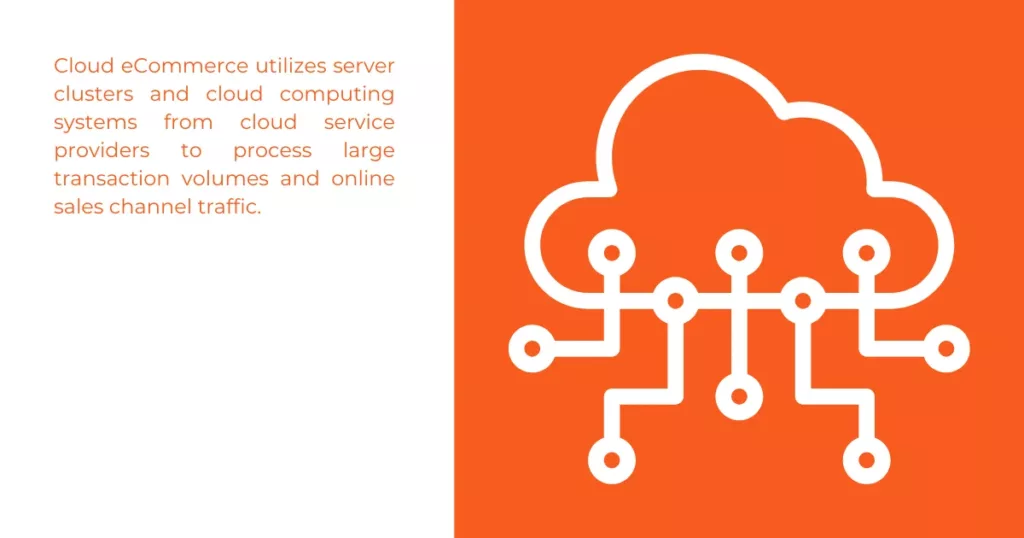
Before cloud-based eCommerce platforms and other solutions emerged, traditional eCommerce platforms like IBM WebSphere and Oracle ATG required on-premise server setups and continuous maintenance. Unlike those “on-premise” eCommerce solutions, cloud-based eCommerce allows companies to outsource their IT infrastructure without the need to invest in equipment and continuous maintenance as before.
This solution helps businesses adapt to the increasing demands of customers, enhance security, simplify maintenance, and integrate new eCommerce applications as needed. For these reasons, Cloud eCommerce is often combined with eCommerce platforms such as Shopify Plus, Salesforce, Magento, etc.
Cloud eCommerce Solutions
There are several cloud eCommerce solutions to choose from, including IaaS, PaaS, and SaaS, each with different resource requirements.
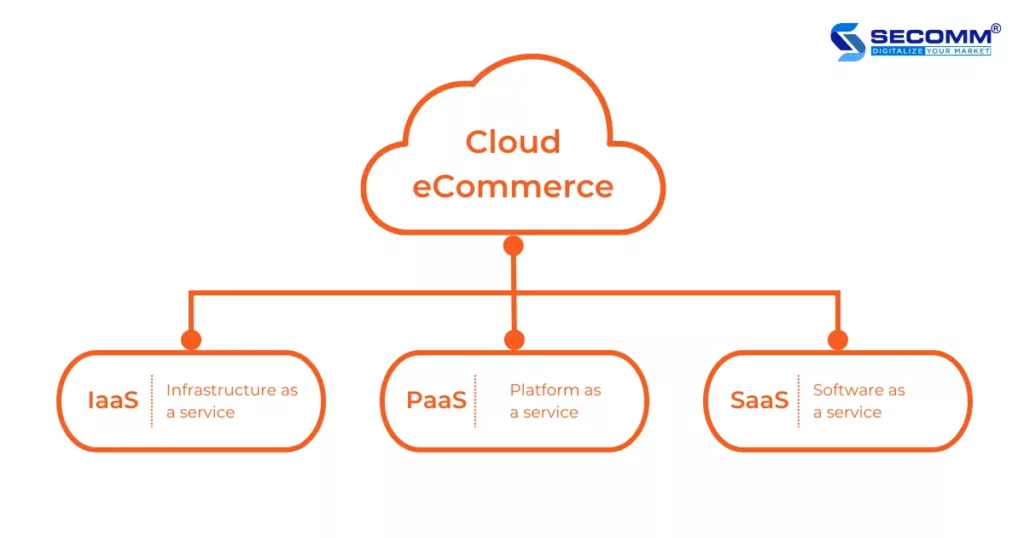
IaaS eCommerce
Infrastructure as a Service (IaaS) is where businesses rent physical resources such as servers, databases, and network equipment to build a sustainable eCommerce architecture. IaaS eCommerce focuses on providing on-demand data storage on disks and virtual servers, making it easy for businesses to use database services rather than dealing with hardware. However, businesses are responsible for managing applications, data, runtime, middleware, and the operating system on this infrastructure.
Notable IaaS providers include Amazon AWS, Microsoft Azure, and Digital Ocean. IaaS is suitable for businesses wanting full control over the system without the complexity of on-premise eCommerce.
PaaS eCommerce
Platform as a Service (PaaS) is similar to IaaS but requires less infrastructure management, allowing more time to build eCommerce applications using predefined infrastructure with pre-defined operating systems and processes to handle resources, planning, and error correction.
For example, Google App Engine provides a PaaS environment for developers to build web applications without worrying about infrastructure. PaaS eCommerce is suitable for businesses needing to build specialized eCommerce applications and are willing to eliminate infrastructure-related factors in their technology stack.
SaaS eCommerce
Software as a Service (SaaS) provides ready-made eCommerce services, including complete eCommerce solutions or individual eCommerce applications like Product Information Management (PIM) software, Order Management System (OMS), etc. SaaS eCommerce providers are responsible for managing both the infrastructure and software and businesses only need to configure the desired software. Additionally, SaaS eCommerce developers can work outside the user interface with APIs to develop custom solutions without the need for custom software development.
SaaS eCommerce is suitable for businesses that want to quickly deploy eCommerce solutions without significant involvement in infrastructure and software management.
Cloud eCommerce benefits
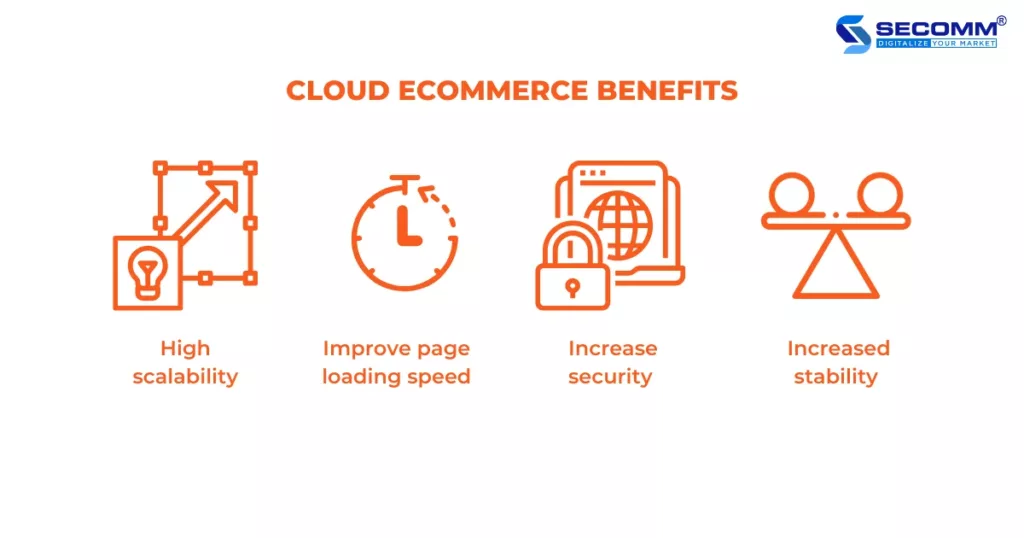
High scalability
Cloud eCommerce inherits features from PaaS, making it easier to expand system functionality.
Typically, when fashion businesses start, they may not initially focus on scalability. However, from a strategic perspective, investing in technologies with scalability capabilities, such as Cloud eCommerce, can help businesses expand system functionality in each stage of eCommerce website development to foster business growth.
Improve page loading speed
According to Think with Google, if a website takes up to 6 seconds to load, the probability of users bouncing increases by 106%. That’s why businesses need to focus on page load speed.
When an eCommerce website leverages Cloud eCommerce with data stored on a cloud platform, the speed of processing queries and API calls is significantly faster.
Increase security
In the current era of the 4.0 technological revolution, the concern for data loss is a major focus for business leaders. As a response to this, numerous new technologies have emerged to address this goal.
According to PC Magazine, Cloud eCommerce provides control over data and storage locations, along with options such as physical backups and file synchronization to ensure data safety. Additionally, Cloud eCommerce supports businesses in obtaining PCI-DSS (Payment Card Industry Data Security Standard) certification, enhancing the credibility of their website.
Increased stability
Typically, businesses struggle to optimize storage capacity on their websites, especially when facing a massive surge in traffic during peak seasons, such as the “sale hunting” period. This sudden increase in workload poses a significant challenge to storage operations.
Cloud eCommerce offers a flexible solution to meet the demands of unpredictable spikes in traffic, whether seasonal or even hourly. It can dynamically scale up or down to support the real-time needs of a business. Overall, Cloud eCommerce is becoming a widely adopted technology in the digital transformation journey, helping businesses expand their functionality, improve page loading speeds, and enhance the security and stability of their websites.
However, mastering these new technologies requires programmers to possess a significant amount of specialized knowledge and hands-on experience with various complex projects. As a result, the costs associated with implementing Cloud eCommerce can be relatively high.
With over 9 years of experience designing complex eCommerce systems for companies like An Nam Gourmet, Laybyland, Jasnor, etc., SECOMM understands the challenges that businesses face when exploring new eCommerce technologies.
Contact SECOMM today for a free consultation on detailed eCommerce system development solutions!
 3
3

 9,043
9,043

 0
0

 2
2
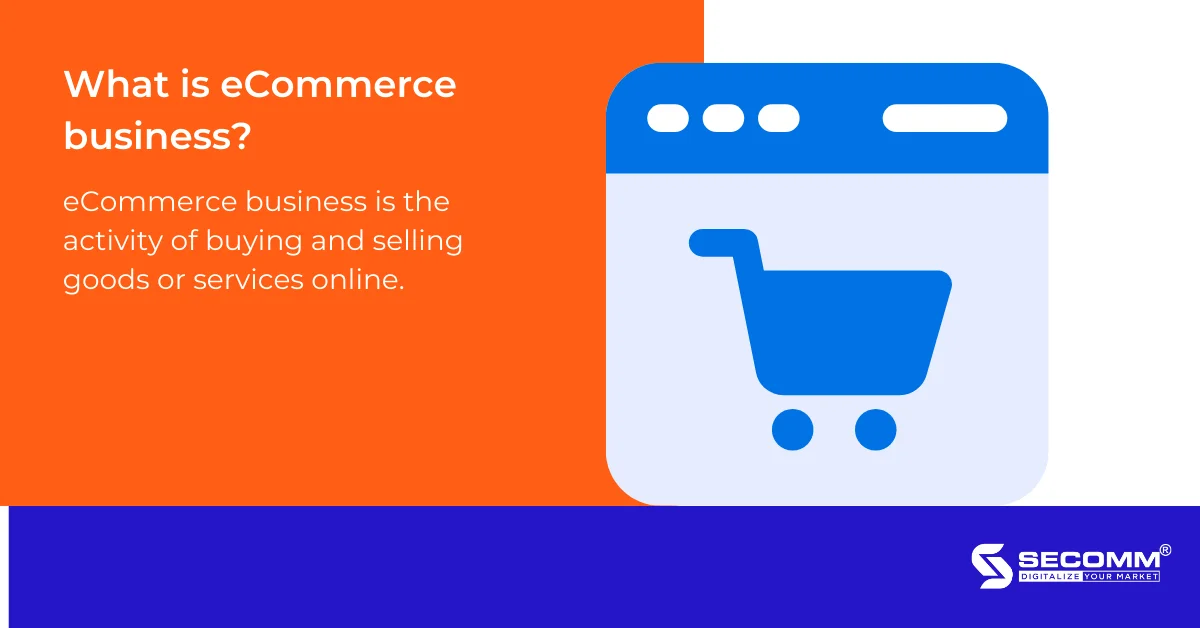
8 STEPS TO START A SUSTAINABLE ECOMMERCE BUSINESS
For businesses that are just entering the market, the term “eCommerce” is often recognized through eCommerce marketplaces. Most managers are often unsure of where to start, including which systems to use, which eCommerce platform to choose for development, and what steps to take next.
Therefore, in this article, SECOMM will share comprehensive information from basics to advanced levels to kickstart eCommerce business in Vietnam.
Learn about eCommerce business
According to Decree No. 52/2013/ND-CP on eCommerce: “eCommerce activities involve conducting all or part of the commercial process through electronic means connected to the Internet, mobile telecommunications networks, or other open networks.”
In simpler terms, eCommerce business is the activity of buying and selling goods or services online.
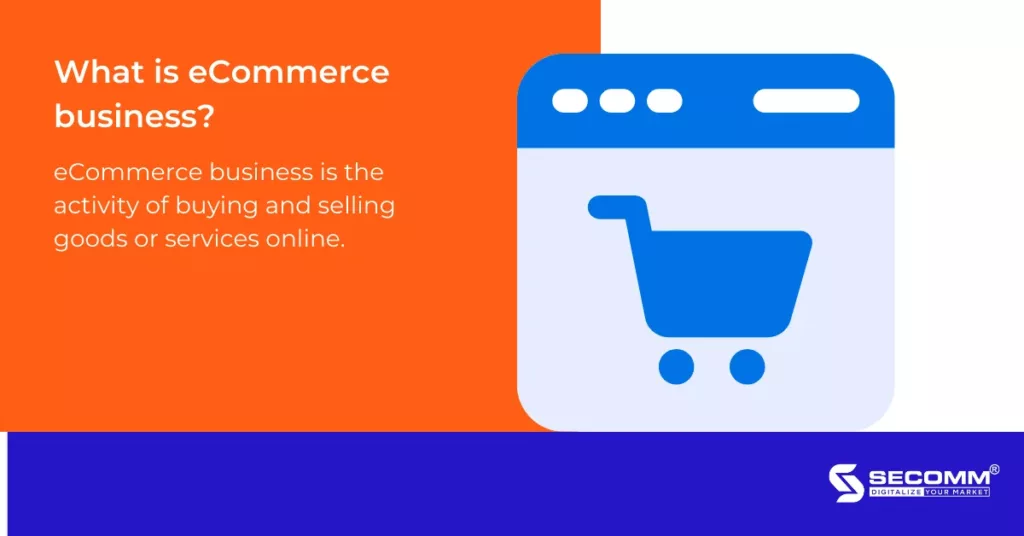
Popular eCommerce models
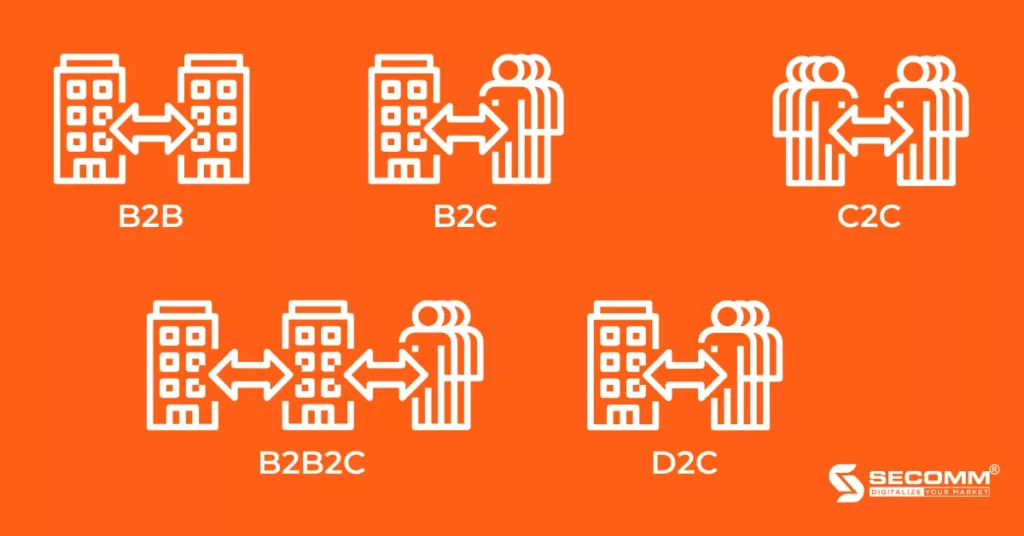
B2C
B2C (Business to Customer) involves transactions between businesses and customers. This is also the most common model in the Vietnamese market.
Example: Thế Giới Di Động is the number one retail model in Vietnam’s eCommerce market for devices such as phones, laptops, tablets, and accessories.

- Website: https://www.thegioididong.com/
- Monthly traffic: 62.23 million
- Website ranking: #19 (Vietnam), #758 (Global)
B2B
B2B (Business to Business) involves commercial transactions between two businesses.
Example: TELIO is Vietnam’s first B2B eCommerce platform, facilitating the connection between small-scale traditional retailers and brands by aggregating demand, providing more choices, better prices, and more efficient logistics support.

- Website: https://www.telio.vn/
- Monthly traffic: 5 million
- Website ranking: #112,909 (Vietnam), #6,105,937 (Global)
B2B2C
B2B2C (Business to Business to Customer) is a business model that involves collaboration between two businesses (B2B) to create and deliver products or services to end consumers (B2C).
Example: Shopee is the most popular eCommerce platform in Vietnam. Shopee Vietnam initially operated under a C2C model, serving as an intermediary in the buying and selling process between individuals. However, Shopee Vietnam has evolved into a B2B2C hybrid model by offering various services and conveniences to support the shopping process for both businesses and consumers.
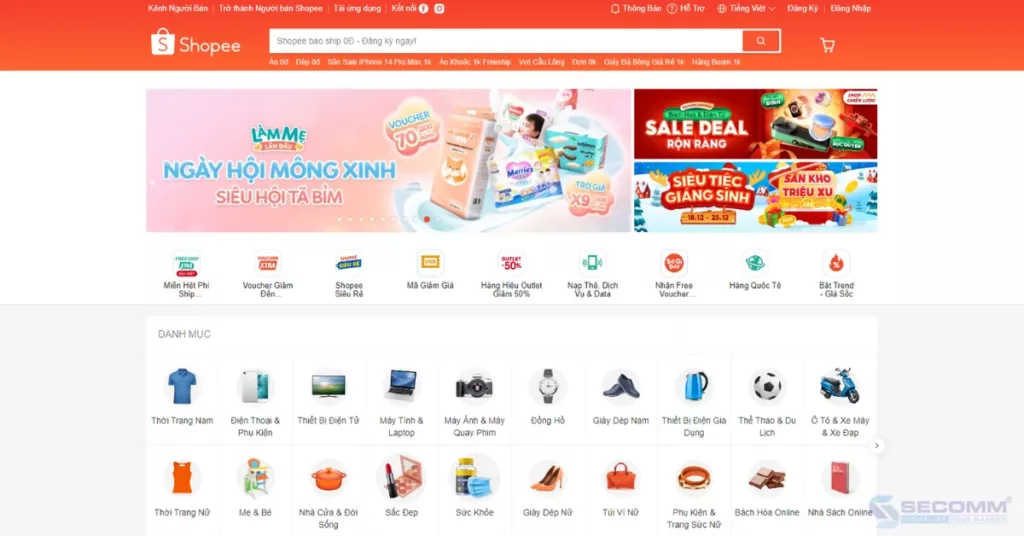
- Website: https://shopee.vn/
- Monthly traffic: 105.5 million
- Website ranking: #6 (Vietnam), #295 (Global)
C2C
C2C (Consumer to Consumer) is a form of business where transactions occur directly between two individuals rather than involving businesses.
Example: Chợ Tốt is an eCommerce website that facilitates transactions between individual sellers and buyers for items such as real estate, cars, job postings, used electronics, pets, and various home services.

- Website: https://www.chotot.com/
- Monthly traffic: 13.19 million
- Website ranking: #54 (Vietnam), #2,980 (Global)
D2C
D2C (Direct to Customer) is a business model that delivers products directly from the business to the customer, bypassing intermediary distribution channels.
Example: Coolmate is a men’s fashion startup established in 2019. Within just 2 years of operation, the brand raised a rapid $500,000 in funding for Sharktank.
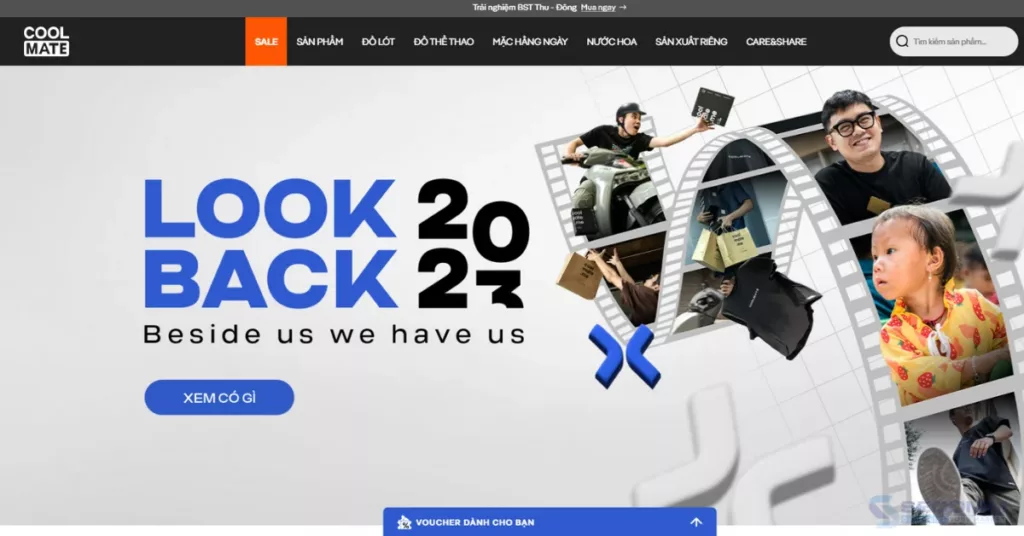
- Website: https://www.coolmate.me/
- Monthly traffic: 1.204 million
- Website ranking: #861 (Vietnam), #46,051 (Global)
Steps to start a sustainable eCommerce business
Step 1. Make an eCommerce business plan
When starting to plan a business, the first step that managers should take is market research to understand the overall market situation, details about competitors, trends, and consumer behaviour. Some free and reputable sources businesses can refer to include the White Paper on eCommerce in Vietnam by IDEA, the e-Conomy SEA report by Google & Temasek, the eCommerce Index report by Vecom, etc.
After conducting market research, the next thing businesses should pay attention to is defining objectives, such as adding sales channels to increase revenue, positioning the brand in the eCommerce market, supporting marketing campaigns, enhancing user experience and interaction, etc.
Following market research and goal setting, businesses should also budget and plan the implementation timeline for each stage of eCommerce operations. Depending on the goals and strategies, each business will set budgets and timelines for the most effective eCommerce operations.
Step 2. Build an eCommerce system
Next, businesses need to choose an eCommerce platform to build a system that aligns with the brand’s scale and strategy. The components of an eCommerce system typically include a website and an eCommerce website application.
There are two main types of platforms nowadays: SaaS (Software as a Service) and Open Source.
For Open Source platforms:
- Advantages: Full ownership of source code and data, the ability to build advanced features, flexible customization, easy integration, and scalability.
- Disadvantages: High initial development costs and specialized expertise required, often requiring experienced professionals for implementation.
- Popular Open Source platforms: Magento, WooCommerce, OpenCart, PrestaShop, etc.
- Target users: Suitable for businesses looking for a long-term investment, aiming to save costs in the future.
For SaaS platforms:
- Advantages: User-friendly, many pre-built interfaces and features, low initial costs.
- Disadvantages: Increasing usage fees over time, limited customization and scalability, and challenging integration with external tools.
- Popular SaaS platforms: Haravan, Shopify Plus, BigCommerce, Squarespace, Wix, etc.
- Target users: Suitable for businesses needing a simple website with minimal customization.
Once the eCommerce platform is selected, businesses have two options for resources to build the website: building an in-house team or using services from developers.
For building an in-house team, businesses need to recruit and train IT and eCommerce professionals with expertise and experience on the chosen platform. This process may take time and budget to build a suitable team but provides better control over resources, allowing adjustments or developments according to specific requirements.
For collaborating with development firms, businesses should seek developers based on criteria such as deep experience in eCommerce, an experienced team, a clear process, quick handling and support, and commitments to warranty and maintenance. This approach helps businesses gain professional expertise, enhance experience, and develop a suitable website.
Step 3. Set up eCommerce payment methods
In the eCommerce market, there are various payment methods, with Cash on Delivery (COD) being the most common. However, due to the rise of “cashless” payment trends amid the Covid-19 pandemic, electronic payment methods are gaining more prominence.
Some payment methods chosen by eCommerce businesses include:
- Bank Transfer: Transferring money from the buyer’s bank account to the seller’s bank account to pay for products or services. Internet Banking and Mobile Banking are gradually replacing traditional ATM transfers.
- Online Payment Gateways: Systems connecting banks, buyers, and sellers, allowing the seller to receive funds immediately when online transactions are completed. Some popular gateways in Vietnam such as VNPay, ZaloPay, Payoo, Paypal, Onepay, etc.
- E-wallets: Payment through e-wallets involves linking a bank account, depositing money into the wallet, and making simple and convenient payments for linked services. Some popular E-wallets in Vietnam such as Momo, ZaloPay, VNPay.
- Scratch Cards: Allowing users to pay or top up their electronic accounts by purchasing scratch cards from mobile network providers such as Viettel, Mobifone, Vinaphone, etc. However, this payment method is often limited to certain eCommerce platforms and specific websites.
- Brand-Specific Cards/Wallets: Payment methods designed and allowed for use within the system of a specific brand or business. Some popular wallets such as Shopee Wallet, Lazada’s eM Wallet, Starbucks Card, VinID by VinGroup.
- E-vouchers: Also known as online discount vouchers/codes provided by eCommerce businesses like Shopee, Lazada, Tiki, etc.
Step 4. Build a fulfilment process
Usually, a fulfilment process includes the following steps: Importing goods or manufacturing → Shipping to warehouse/distribution centre → Warehousing → Processing goods upon request (Shipping, invoicing, packaging, labelling) → Delivery → Handling post-sale requests (Returns, refunds, exchanges).
Therefore, a comprehensive eCommerce system needs to build or integrate functionalities such as eLogistics, blockchain, QR codes, etc., to automate the shipping process, track orders, and thereby enhance the quality of delivery to end consumers.
Step 5. Improve customer care system
A Customer Relationship Management (CRM) system is an essential component in the operation of eCommerce businesses. Building and continuously improving the CRM system, as well as implementing a multi-channel customer care centre, helps expedite the processing of complaints, returns, and refunds. Additionally, a CRM system assists businesses in gaining insights into customer needs, facilitating the establishment of interactions between the brand and its customers.
Step 6: eCommerce System Maintenance
Maintaining the eCommerce system 24/7, continually updating and upgrading it helps businesses promptly address arising issues, achieve sustainable sales growth, and adapt quickly to the ever-changing market. Simultaneously, continuous monitoring and maintaining eCommerce operations aim to prevent risks from hackers, data breaches, etc.
Step 7: eCommerce Growth Strategy
One of the crucial strategies in current eCommerce operations is omnichannel selling. By following customers’ “footprints” across eCommerce platforms (Shopee, Lazada, Tiki, Sendo), social media (Facebook, TikTok, Instagram, Zalo), websites, and eCommerce apps, this strategy centralizes customer data, reaches diverse shopping behaviours, and optimizes personalized experiences in the eCommerce system. Additionally, various eCommerce marketing campaigns are being developed, such as Affiliate Marketing, Shoppertainment, SEO, Email Marketing, etc. This strategy optimizes brand visibility and boosts online sales.
Step 8: Optimization of eCommerce Business Operations
Building reporting functions to exploit the efficiency of data, including reports on Sales, Marketing, Customers, Inventory, and Operational Performance, to improve and enhance business efficiency. Integrating analytical tools such as Google Analytics, Facebook Pixels, Microsoft Power BI, etc., supports tracking and measuring system performance to provide detailed reports on business results in eCommerce.
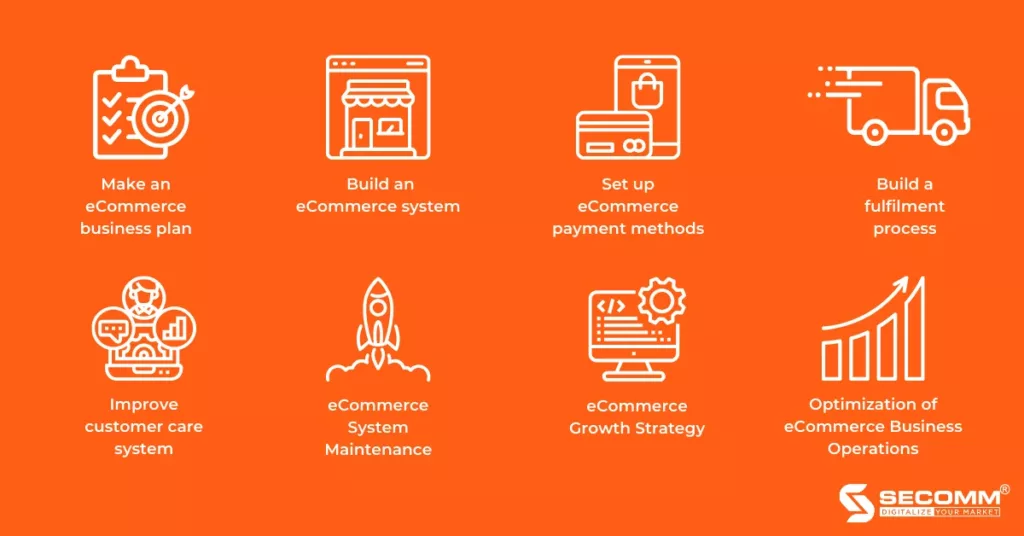
In summary, conducting eCommerce based on the above 8 steps is not an easy task for business managers. To stay competitive in the eCommerce race, various factors come into play, including financial strength, human resources, the general economic situation, changes in consumer behaviour, etc. Therefore, managers need to be cautious when making critical decisions to bring business efficiency.
With over 9 years of experience in designing complex eCommerce systems for companies like Annam Gourmet, Laybyland, and Jasnor, SECOMM understands the challenges businesses face in researching and efficiently implementing eCommerce.
Contact SECOMM now for free consultation on detailed eCommerce system development solutions!
 2
2

 14,862
14,862

 0
0

 1
1
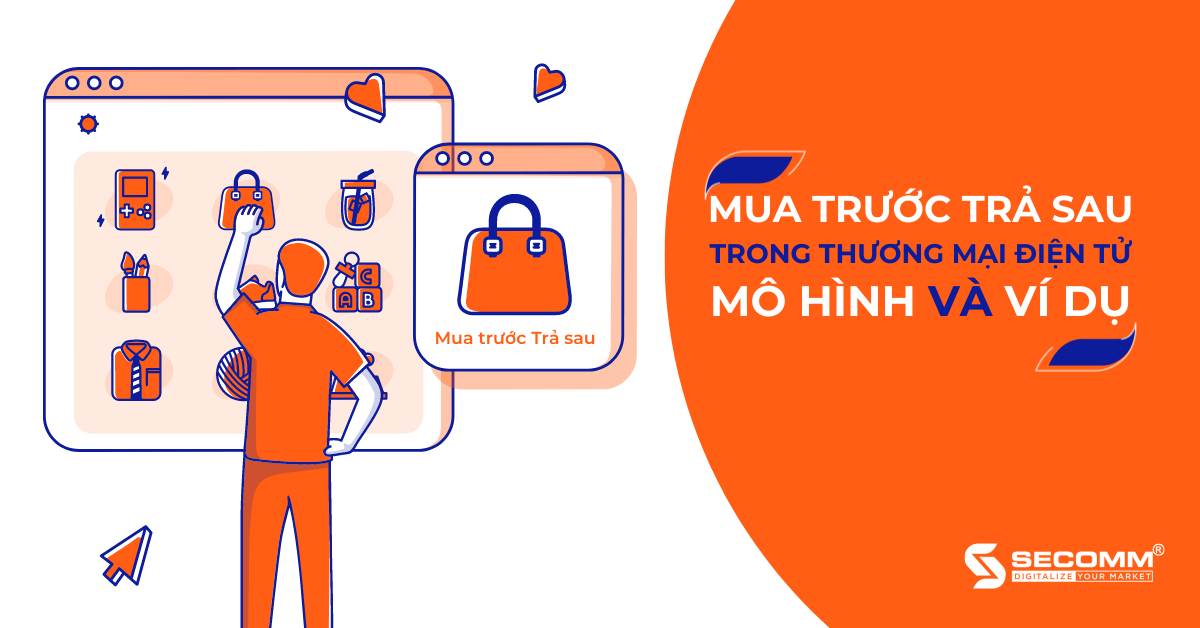
BUY NOW PAY LATER IN ECOMMERCE: MODELS AND EXAMPLES
The Juniper Research report titled “Buy Now Pay Later: Regulatory Framework, Competitive Landscape & Market Forecasts 2022-2027” predicts that the global user base for Buy Now Pay Later (BNPL) will exceed 900 million by 2027. In Vietnam, the BNPL payment method is expected to experience an annual growth of 126.4%, reaching 1,123.9 million USD in 2022.
What is Buy Now Pay Later (BNPL)?
Buy Now Pay Later (BNPL) is a short-term financial arrangement that allows consumers to make immediate purchases and defer the payment to a future date, typically without accruing interest.
How it works
In BNPL, the financial technology (Fintech) organization facilitating the service directly pays the purchase amount to the seller on behalf of the customer. The customer then repays this amount gradually to these organizations over a period, often extending from one to several months.
When using BNPL, customers can make payments through bank transfers or have the amount automatically deducted from their debit card, bank account, or credit card. While the specific terms and conditions may vary between companies offering BNPL services, the general operational mechanism is similar to credit card instalment plans. However, BNPL is often considered much simpler, and additionally, it typically does not involve interest charges; instead, late payment fees are calculated as a percentage of the product or service value.
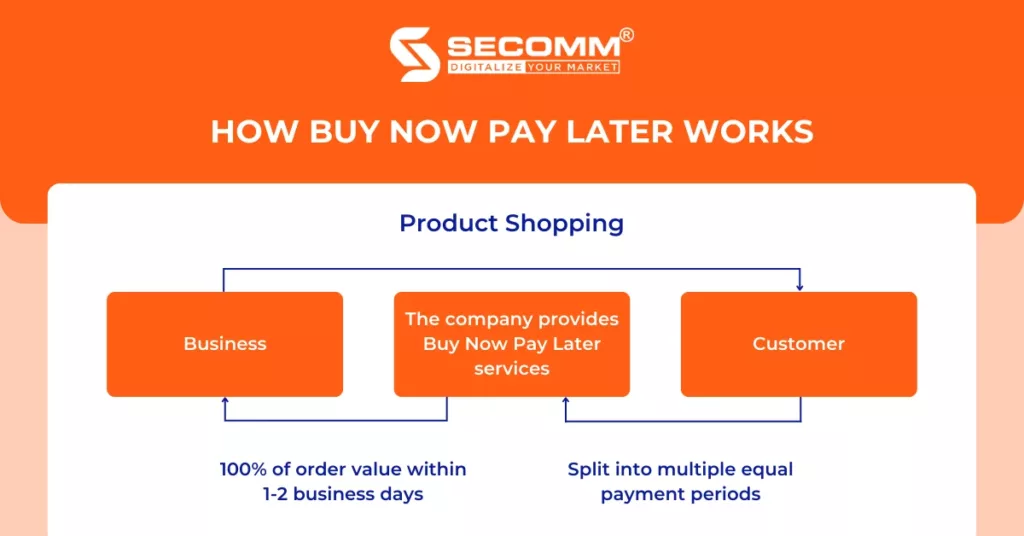
Pros and Cons
For customers
With the BNPL model, consumers can make immediate purchases even if they don’t have the financial capacity to pay the entire shopping cost upfront. This payment is divided into shorter instalment periods, corresponding to smaller amounts, reducing financial pressure on consumers. Additionally, BNPL typically does not entail annual fees or hidden charges, and the registration process is simple and quick, averaging less than 15 minutes. In general, BNPL companies usually only require customers to be at least 18 years old and own a bank card, without specifying a minimum personal income.
However, BNPL often comes with a relatively low consumer spending limit, typically ranging from 20 to 30 million VND, to meet the needs of purchasing items such as fashion, cosmetics, phones, laptops, electronic components, etc. If consumers do not know how to control their spending, they may easily engage in excessive shopping as there is no immediate need to pay the full amount at the time of purchase. This can lead to late payments for the instalment periods and additional penalty fees.
For businesses
Collaborating with BNPL organizations to launch BNPL programs with 0% interest can help businesses attract more customers without incurring excessive marketing costs. With this approach, businesses can encourage customers to make purchasing decisions more quickly without extensive financial consideration, thereby significantly boosting revenue. Moreover, instead of offering discounts or freebies, the ability to pay gradually without urgency and without incurring interest aligns with customer psychology and needs.
However, many businesses still hesitate to implement BNPL models due to concerns about not being able to control the debt of individual customers. Additionally, this potential model is relatively new to the Vietnamese market, so there are not many payment service providers offering BNPL services, and there is a scarcity of experienced eCommerce website development units capable of efficiently integrating this functionality.
Compare Buy Now Pay Later with Credit Cards
The BNPL model is revolutionizing the global consumer credit sector, but many people still confuse BNPL with credit card instalment plans offered by banks.
So, what are the differences between Buy Now Pay Later and credit cards?
| Format | Buy Now Pay Later | Credit Card |
| Unit accepting payment | The seller allows BNPL payment method | Banks issue credit cards |
| Registration process | Register quickly, completely online | The procedure requires a lot of paperwork |
| Time | 1 to 3 minutes | Have to wait for censorship, which can take up to several days, even weeks |
| Credit limit | Depends on buyer profile | Depends on buyer profile |
| Card maintenance fee | All free | Average 299,000 VND/year |
| Registration fee | All free | Average 50,000 VND/card |
| Conversion fee in instalments | All free | Average 200,000 VND/transaction, or calculated as a percentage of transaction value |
Comparison table of Buy Now Pay Later with Credit Card
Despite trailing behind the global trend, the BNPL model in Vietnam is forecasted to explode due to the market falling into a favourable timeframe. This is influenced by the impact of the Covid-19 pandemic, which has significantly propelled the development of online shopping and eCommerce. Additionally, the BNPL model aligns more with the preferences of Generation Z than traditional credit cards.
Case studies
Tiki and Sendo – Two of the four kings of eCommerce participating in BNPL
Two out of the four largest eCommerce platforms in Vietnam have begun implementing BNPL, affirming the tremendous potential of this model in the online shopping market.
In 2020, Sendo was a pioneer in eCommerce by early adoption of BNPL through collaboration with financial solution provider Atome, offering Buy Now Pay Later services. With BNPL, Sendo aims to make shopping more convenient for customers, removing concerns about financial issues often associated with credit cards, such as increasing interest rates for late payments over an extended period.

Since the beginning of 2022, Tiki has collaborated with two financial service providers, Home Credit and Lotte Finance, to launch the ‘Buy Now Pay Later’ project, enhancing smart payment solutions directly within the Tiki app. This initiative not only supplements intelligent payment options for Tiki users but also empowers customers to manage their personal finances better when engaging in online shopping, thereby further enriching the overall eCommerce experience for consumers.
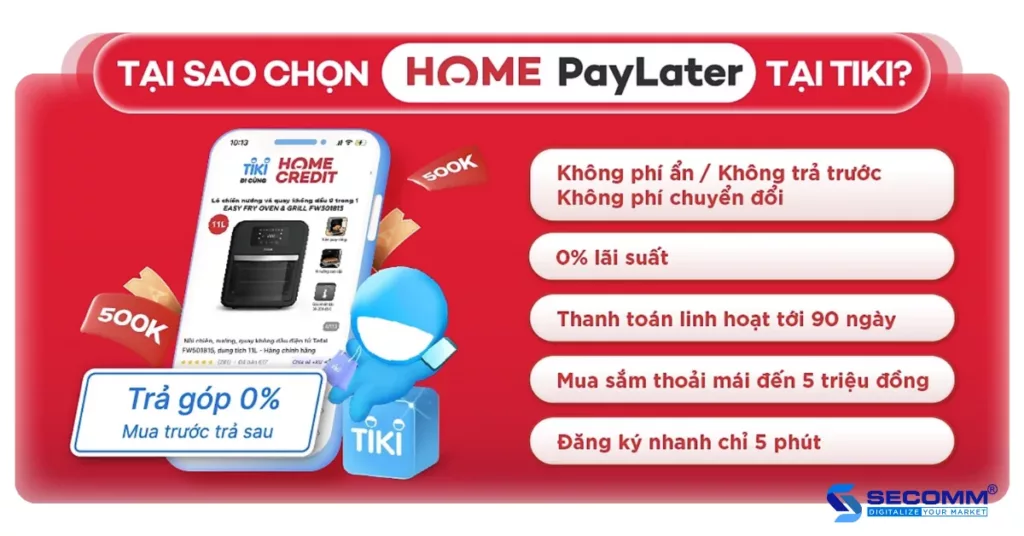
Laybyland – The leading brand in the Buy Now Pay Later model in Australia
Laybyland was established in 2012 in Australia with two key eCommerce business models: Layby (Pay Later) and Shop Now Pay Later (Shopzero). Over its 10 years of eCommerce operations in the Australian market, the business has witnessed remarkable growth. Starting with +10,000 products across two initial websites, it has expanded to offer over +400,000 products daily across five online stores, including Laybyland, Shopzero, Mylayby, and Layawayland.
Shopzero, a part of Laybyland, provides BNPL services through seven main partners: Afterpay, Zip, Openpay, Humm, Latitude, Klarna, and Wizpay. Notably, Shopzero maintains complete control and operation over all BNPL activities and payment processes within its system. Pioneering the BNPL market has brought Shopzero significant success, especially in the electronics, office supplies, fashion, cosmetics, furniture, gardening tools, children’s toys, and travel sectors.
It is evident that BNPL is contributing to a significant revolution in consumer payment habits, shifting from a payment method choice to a crucial factor in customer purchasing decisions.
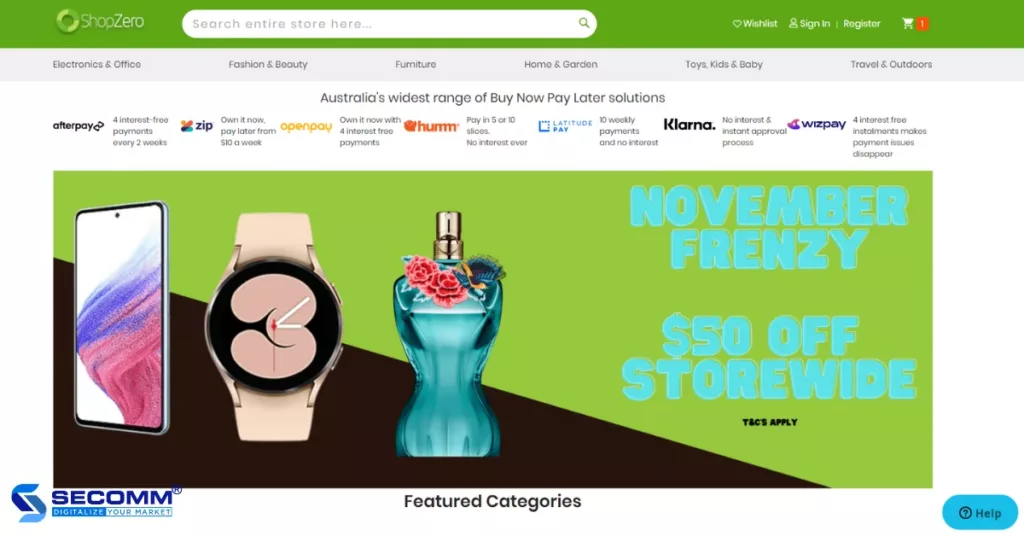
With extensive experience in implementing eCommerce solutions in various countries, especially in the Buy Now Pay Later market, SECOMM understands the challenges businesses face when exploring how to establish Buy Now Pay Later systems.
Contact SECOMM now or call us via hotline (+84)28 7108 9908 for a free consultation on detailed eCommerce system development solutions!
 2
2

 10,218
10,218

 0
0

 1
1
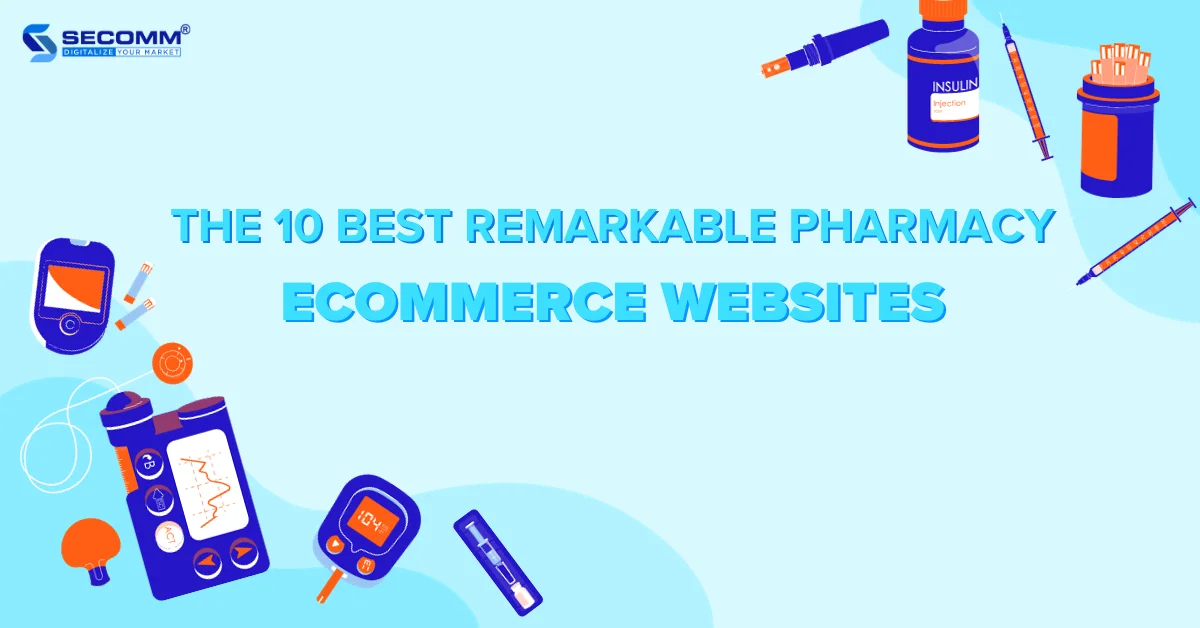
THE 10 BEST REMARKABLE PHARMACY ECOMMERCE WEBSITE
The eCommerce trend has quickly extended to various sectors of the economy. The explosion of online pharmacies, both domestically and internationally, demonstrates the significant impact this trend is having on the pharmaceutical industry.
Typically, the first step in the online presence strategy of these pharmacies is the professional establishment of an eCommerce website.
Here are 10 pharmaceutical brands in Vietnam and on the global stage that have effectively launched eCommerce websites and swiftly captured a significant share of this market.
CVS Health (USA)
CVS Health is a major player in the U.S. healthcare sector and stands as the largest retail pharmacy chain in the country, boasting over 9,900 physical stores. CVS also offers an array of healthcare services, encompassing general health check-ups, diagnostics, and dental care.
The CVS pharmacy eCommerce website is built upon the Oracle Commerce platform, equipped with numerous features to ensure an optimal user experience and scalability for the future. Notably, it includes a prescription management feature that empowers customers to oversee their prescriptions through their CVS accounts, request prescription refills, and receive medication deliveries at their doorstep. Furthermore, the online drugstore allows customers to schedule appointments with two options: in-person clinic visits or remote telehealth consultations via video calls.
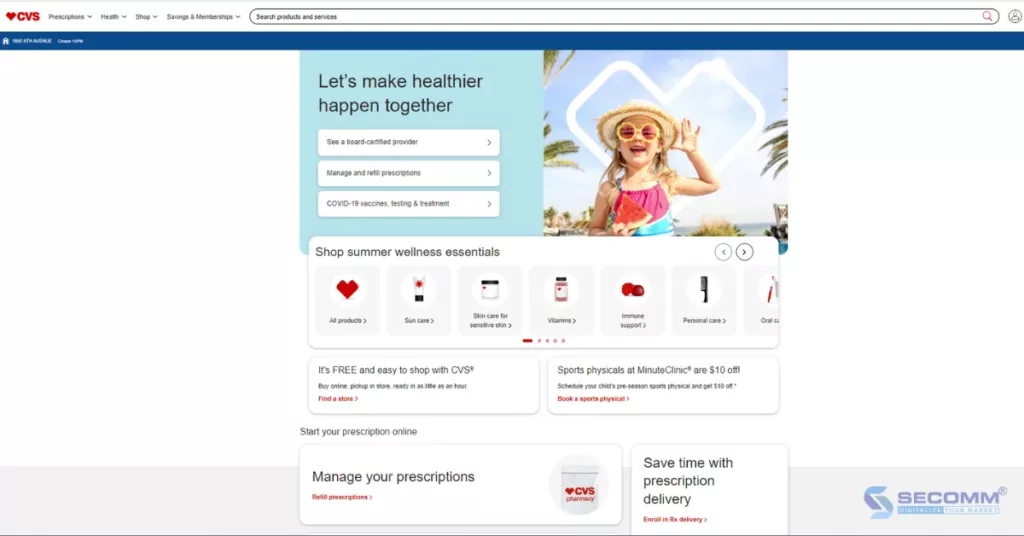
- Website: https://www.cvs.com/
- Platform: Oracle Commerce
- Traffic: 72.2M/month
- Ranking: 112 (USA) & 494 (Worldwide)
Droga Raia (Brazil)
Established in 1890, Droga Raia has continually grown and, over the years, has become one of the foremost pharmacy chains in Brazil. Despite its long-standing legacy, Droga Raia hasn’t lagged in the eCommerce trend.
With an average monthly website traffic of 19.8 million, Droga Raia opted for Magento to facilitate its pharmacy eCommerce website. This choice was well-founded, given the platform’s superior flexibility for customization and scalability, ensuring the capability to manage high traffic volumes and cater to future system expansion needs.
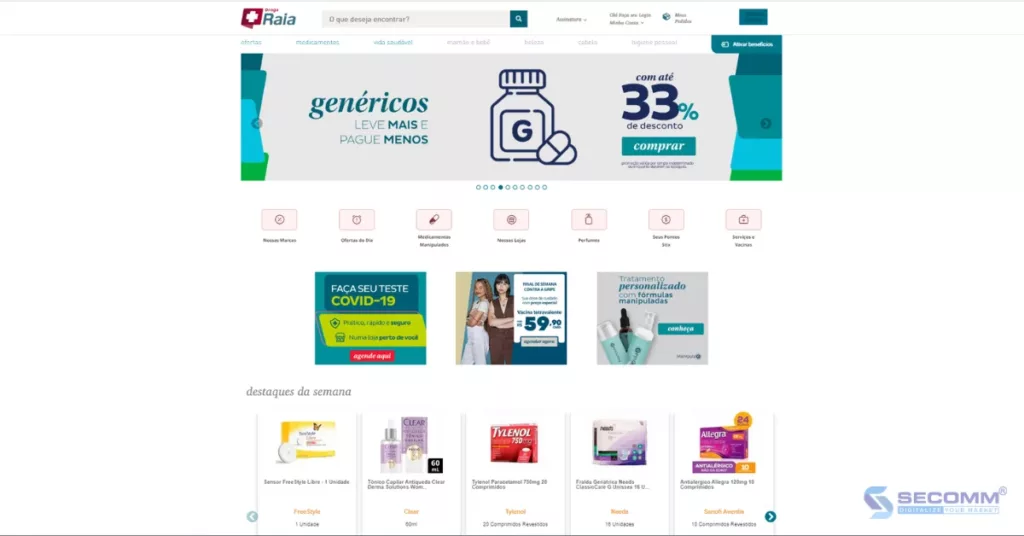
- Website: https://www.drogaraia.com.br/
- Platform: Magento
- Traffic: 19.8M/month
- Ranking: 138 (Brazil) & 3,304 (Worldwide)
Apollo Pharmacy (India)
Apollo Pharmacy, a well-known retail pharmacy chain in India, operates as a subsidiary of Apollo Hospital. Over the years, Apollo has expanded its chain of stores to thousands, serving cities and towns across India.
Apollo built its online pharmacy on the Magento platform, equipped to manage a vast product portfolio. In addition to offering both prescription and non-prescription medications, as well as healthcare products, Apollo provides various related services. These services encompass online consultations, health check-up appointment scheduling, vaccination bookings, and insurance sales. Currently, the website garners 12.7 million monthly visits.
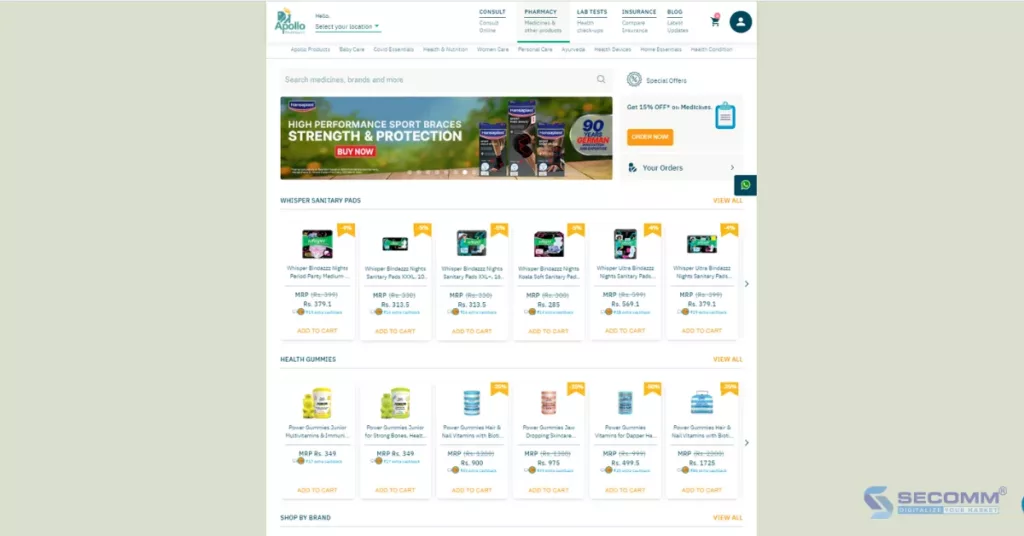
- Website: https://www.apollopharmacy.in/
- Platform: Magento
- Traffic: 12.7M/month
- Ranking: 434 (India) & 5,736 (Worldwide)
Netmeds (India)
Another well-known online drugstore in India is Netmeds. In addition to prescription and non-prescription drugs, this brand offers a diverse range of healthcare products, including items for maternity and baby care, medical equipment, and dietary supplements for fitness enthusiasts, vegetarians, and those with diabetes. Netmeds also relies on Magento to develop its pharmacy eCommerce website, featuring various capabilities to enhance the user experience. These include product categorization with accompanying images, non-prescription product search recommendations, real-time product availability checks at specific stores, prescription upload options, and home delivery requests. At present, Netmeds’ website averages around 10.4 million monthly visits.
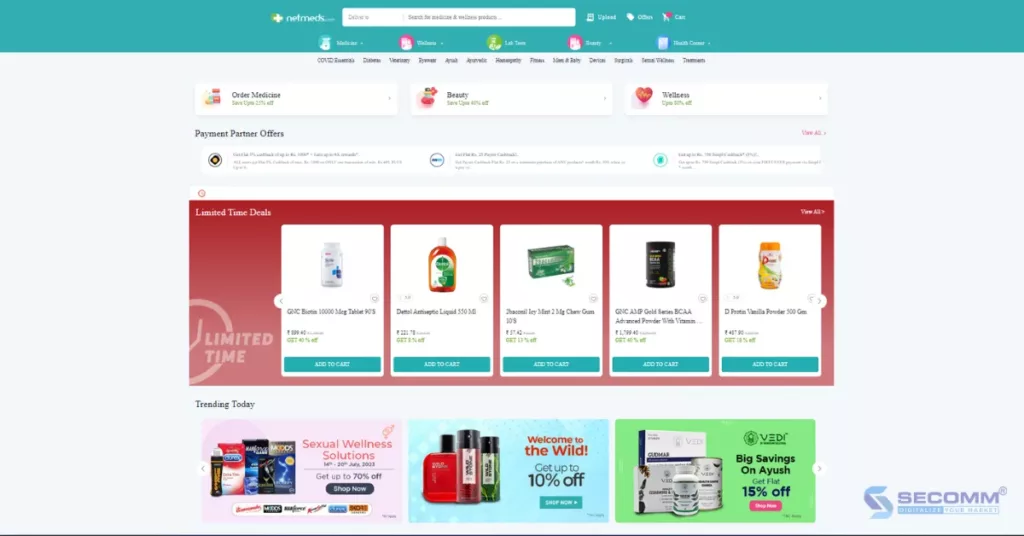
- Website: https://www.netmeds.com/
- Platform: Magento
- Traffic: 10.4M/month
- Ranking: 462 (India) & 5,864 (Worldwide)
Nahdi Online (Arab Saudi)
Nahdi Online is the leading pharmacy eCommerce website in Saudi Arabia and ranks among the region’s largest retail pharmacy chains. This marks the fourth pharmacy on the list utilizing the Magento platform to craft a user-friendly website enriched with advanced features, facilitating product-specific searches, in-depth product descriptions, and price comparisons for customers. Moreover, through Nahdi’s online pharmacy, users can access various online consultation and healthcare services or book appointments at the clinic.
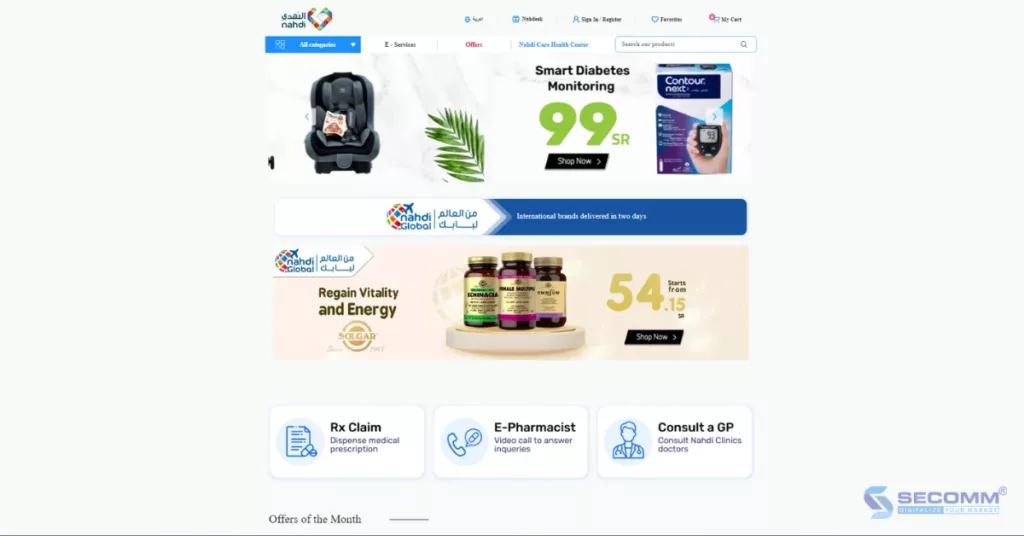
- Website: https://www.nahdionline.com/en/
- Platform: Magento
- Traffic: 9.8M/month
- Ranking: 30 (Arab Saudi) & 5,818 (Worldwide)
An Khang Pharmacy (Vietnam)
An Khang Pharmacy, one of the most trusted pharmacy chains in Vietnam, was established in 2012 and has since expanded to over 500 pharmacies nationwide. Additionally, the brand has introduced a pharmacy eCommerce website and a mobile app to cater to consumers’ online pharmaceutical needs, complete with a variety of enticing offers.
An Khang provides a wide array of products, including medications, dietary supplements, medical equipment, personal care items, and cosmetics. Moreover, the An Khang website features a dedicated section for disease lookup, allowing customers not only to make purchases but also to access information on various common diseases, including their causes, symptoms, treatment methods, and prevention.

- Website: https://www.nhathuocankhang.com/
- Platform: PHP Language
- Traffic: 5.8M/month
- Ranking: 213 (Vietnam) & 12,917 (Worldwide)
FPT Long Chau (Vietnam)
FPT Long Chau, established in 2015, has a presence in over 1,000 stores across all 63 provinces in Vietnam and is a pioneer in the modern online pharmacy model. Both its pharmacy eCommerce website and app have gained strong favor from consumers for their rich and seamless shopping experience.
Notably, Long Chau leads the way in offering a Buy Now, Pay Later service with 0% interest, helping to ease the financial burden on patients. Furthermore, customers can access guidance from Long Chau’s experienced pharmacists through a hotline or chat service. Currently, the Long Chau website attracts approximately 5.2 million monthly visitors.
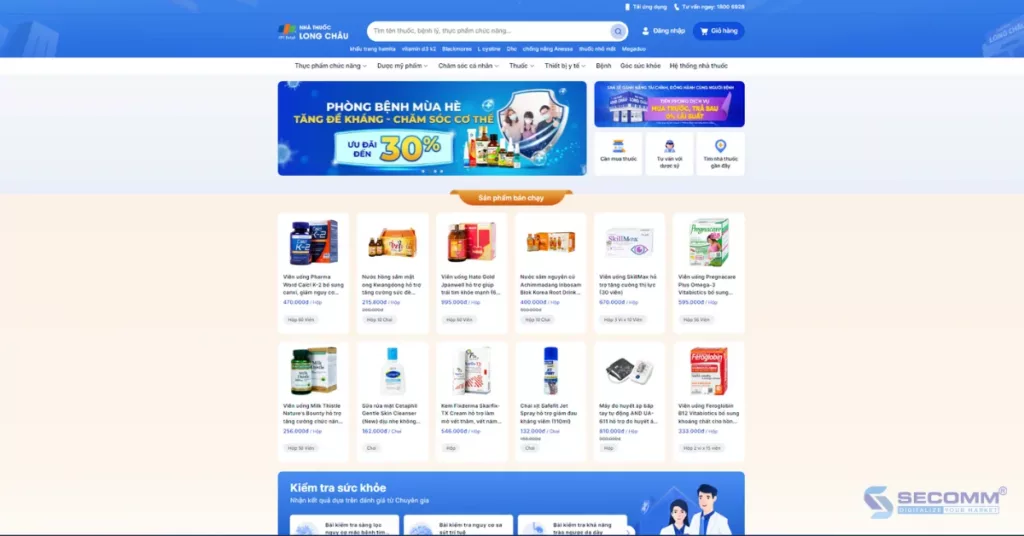
- Website: https://nhathuoclongchau.com.vn/
- Platform: PHP Language
- Traffic: 5.2M/month
- Ranking: 279 (Vietnam) & 15,056 (Worldwide)
Pharmacity (Vietnam)
In the pharmaceutical market of Vietnam, Pharmacity is the third name mentioned in the fierce “three-horse race” taking place in both the online and offline channels. This company was founded in 2011 and currently has over 1,000 stores nationwide. Similar to An Khang and Long Chau, Pharmacity has also launched an eCommerce website and app with various promotional programs to provide customers and patients with a convenient and quick shopping experience, along with online consultation services from a team of highly professional pharmacists. Currently, the Pharmacity website attracts an average of 2.7 million monthly visitors.
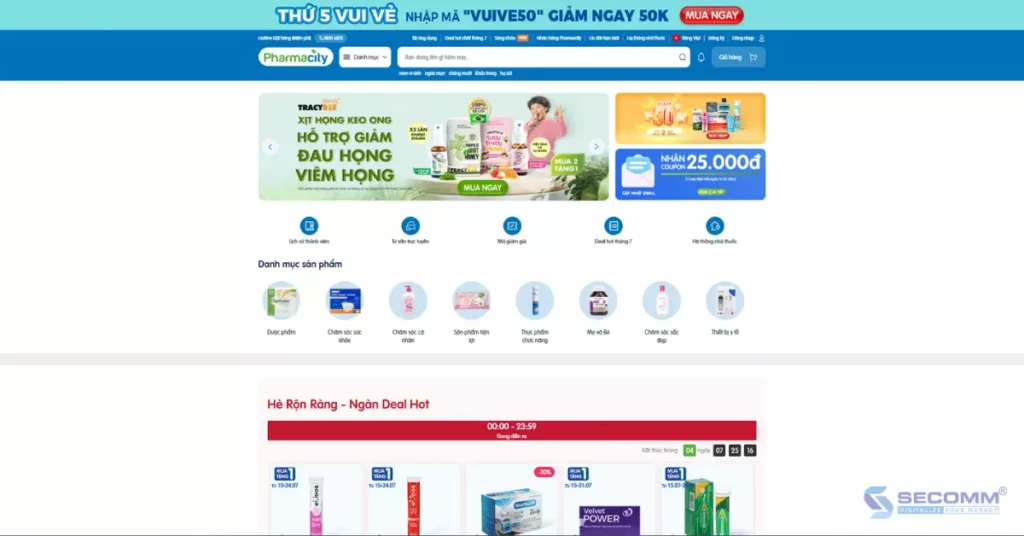
- Website: https://www.pharmacity.vn/
- Platform: WooCommerce
- Traffic: 2.7M/month
- Ranking: 511 (Vietnam) & 26,035 (Worldwide)
Central Pharmacy (Vietnam)
This is one of the most reputable and high-quality online pharmacy systems in Vietnam. The pharmacy offers a wide range of genuine pharmaceutical products, dietary supplements, health, and beauty care items from major global brands. Central Pharmacy’s drugstore provides various features to enhance the shopping experience for customers, such as search suggestions, search filters, and integration of messaging applications (FB Messenger and Zalo) on the website for customer support, prescription uploads, and home delivery requests. To date, the website has attracted more than 587,000 monthly visitors.
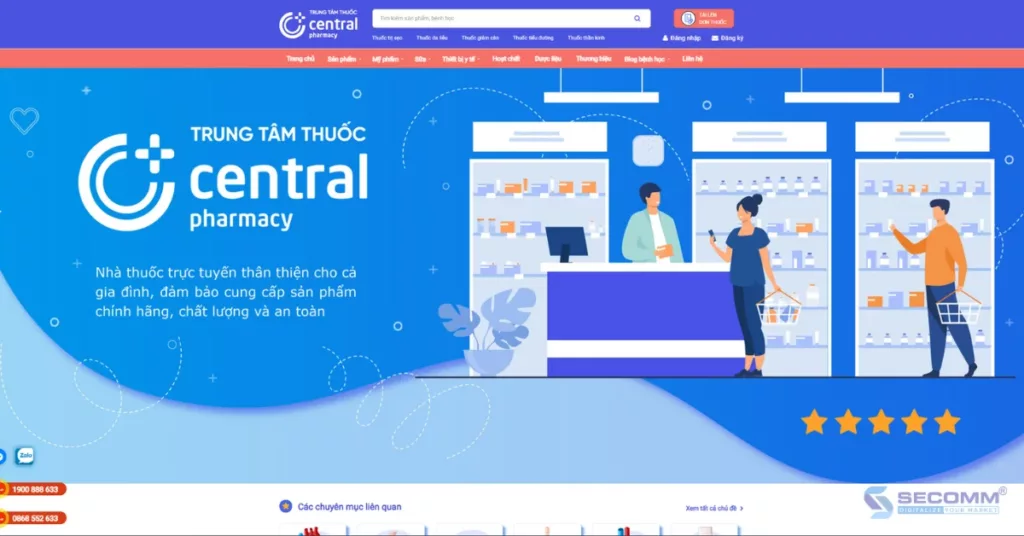
- Website: https://trungtamthuoc.com/
- Platform: Ngôn ngữ PHP
- Traffic: 587.1K/month
- Ranking: 2,484 (Vietnam) & 118,022 (Worldwide)
Nha Thuoc Than Thien (Vietnam)
Nha Thuoc Than Thien is a retail chain that meets GPP standards in Vietnam. Specializing in prescription and over-the-counter medications, as well as various healthcare products, this establishment has embraced a hybrid model, combining both offline and online pharmacy services. The primary sales channel is its user-friendly eCommerce website, developed using WooCommerce. The website is intuitively designed, incorporating essential features to facilitate customer product searches, seamless transactions, and order tracking. With around 410 thousand monthly visits, the website continues to serve a significant audience.
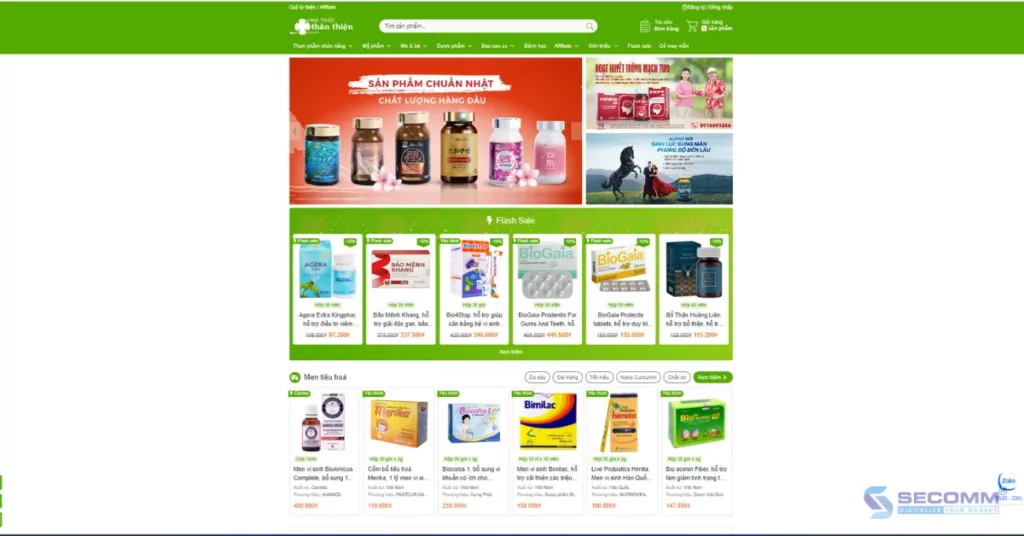
- Website: https://nhathuocthanthien.com.vn/
- Platform: WooCommerce
- Traffic: 410K/month
- Ranking: 3,391 (Vietnam) & 155,687 (Worldwide)
Here are the top 10 eCommerce websites, including leading online pharmacies, in both the Vietnamese and international markets. These brands demonstrate their adaptability to consumer trends and their efforts in developing technological infrastructure to compete in the multibillion-dollar market.
With a wealth of experience in successfully implementing eCommerce solutions for numerous clients across various countries in recent years, SECOMM specializes in providing consulting services with professional eCommerce deployment solutions tailored to the specific needs of each industry.
Feel free to contact or call SECOMM’s hotline directly at (02871089908) for a free consultation.
 2
2

 9,019
9,019

 0
0

 1
1
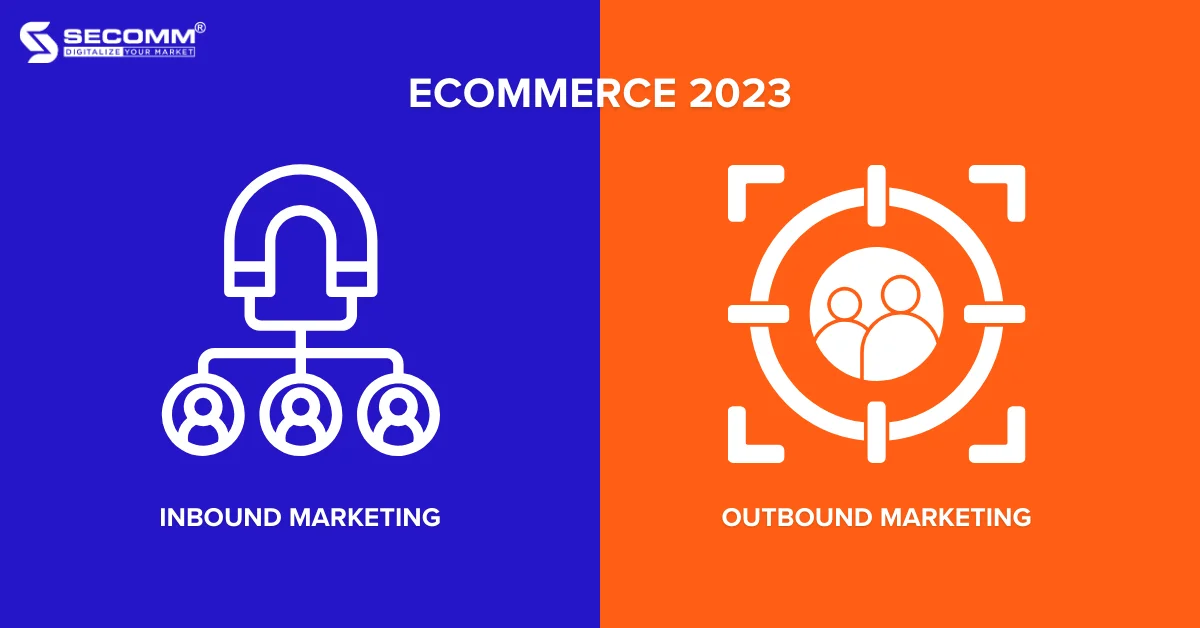
ECOMMERCE 2023: INBOUND MARKETING VS OUTBOUND MARKETING
Inbound Marketing and Outbound Marketing are two widely used marketing approaches that businesses often mix. Although they are common, many businesses still need to distinguish between these two types of marketing. Which is the most suitable strategy for businesses to implement Inbound Marketing and Outbound Marketing in the eCommerce world?
What is Inbound Marketing?
Inbound Marketing is a marketing approach that focuses on engaging customers by offering valuable content and delivering a meaningful customer experience.
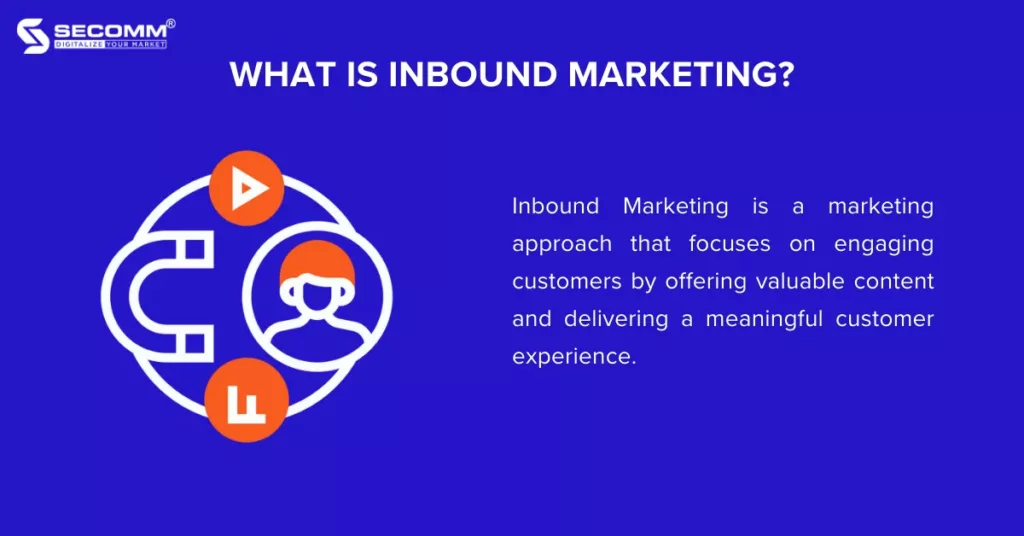
Key strategies employed in Inbound Marketing include:
- Blogging: Creating informative content to provide valuable insights to potential customers.
- Social Media Marketing: Using popular social media platforms like Facebook, TikTok, Instagram, Twitter, etc., for customer engagement through the sharing of valuable content.
- Search Engine Optimization (SEO): Optimizing websites and content to achieve higher rankings in search engine results, such as Google, Cốc Cốc, Safari, Firefox, and others, facilitating the discovery of the business by potential customers on the Internet.
- Email Marketing: Building email sequences tailored to customer needs and personalized to enhance customer care.
- YouTube Marketing: Developing marketing strategies on the YouTube platform to provide useful knowledge alongside marketing messages to specific potential customers.
- Audio Marketing (Podcast): Creating and broadcasting podcast programs related to the business or its products, allowing the brand to share information, stories, and other valuable content with potential customers through audio.
- Lead Generation: Offering valuable content like ebooks, guidelines, webinars, etc., to gather contact information and build a database of potential customers.
What is Outbound Marketing?
Outbound Marketing is a conventional marketing approach where businesses proactively reach out to customers by sending marketing messages to a broad targeted audience.
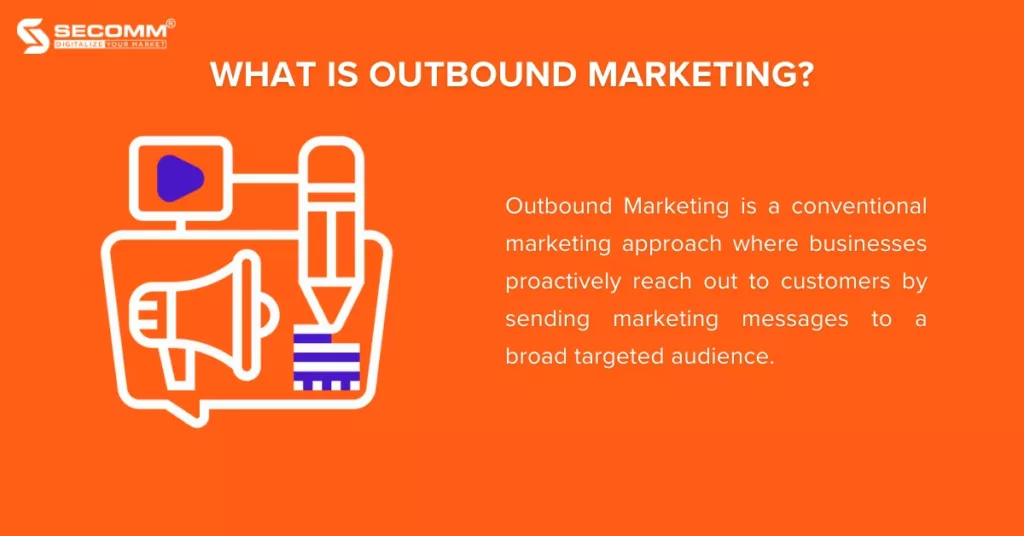
Here are some primary methods employed in Outbound Marketing:
- Cold calling: Making phone calls to various phone numbers collected from diverse sources, without any prior relationship, such as potential customer lists, or business databases, to introduce products/services.
- Cold email outreach: Sending direct mail or parcels to customer lists, much like cold calling, to announce products, services, or upcoming promotional programs.
- Events and exhibitions: Participating in and organizing events and exhibitions to have direct contact with potential customers and promote the business’s products/services.
- Traditional advertising: Using traditional advertising channels such as television, radio, print media, magazines, and outdoor advertising (billboards) to convey marketing messages to a large number of customers.
- PPC (Pay Per Click) advertising: Utilizing paid online advertising forms like Google Ads, social media advertising (Facebook Ads, Instagram Ads, TikTok Ads, etc.), or various display advertising techniques to reach a diverse consumer audience.
- Telemarketing: Making direct phone calls to potential customers to advertise products or services and generate sales.
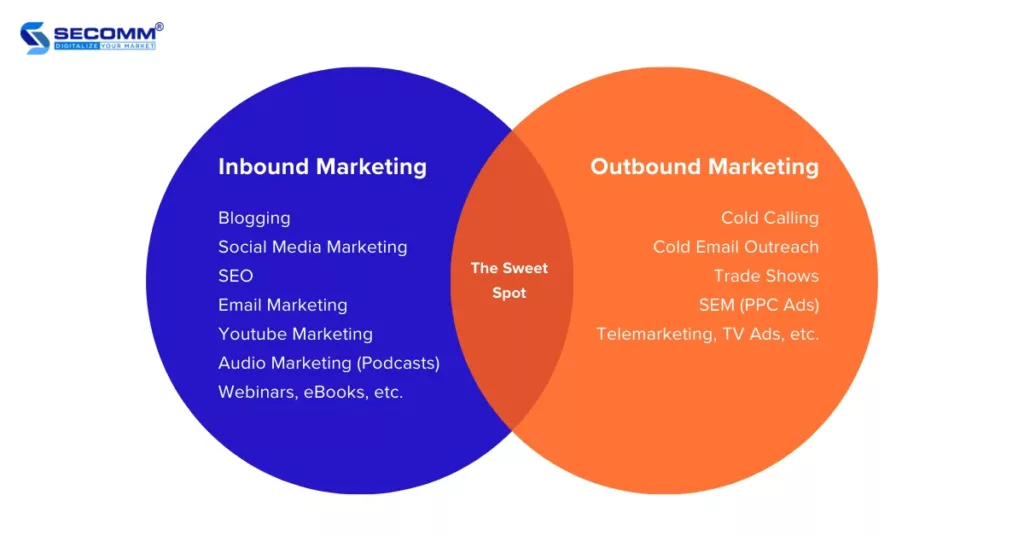
Inbound Marketing vs Outbound Marketing: Basic Comparison
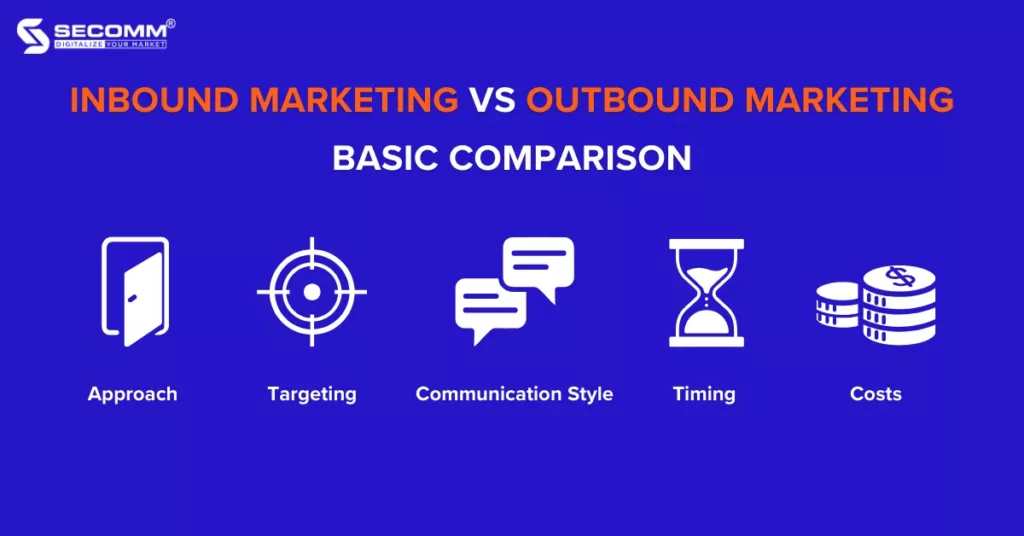
Approach
Inbound Marketing centers around the customer, prioritizing the attraction of potential customers through valuable content and experiences. In the realm of eCommerce, Inbound Marketing primarily revolves around establishing relationships and engaging with customers through the business’s website or eCommerce app.
Conversely, Outbound Marketing takes a product-centric approach, aiming to send marketing messages to a wider audience. Outbound Marketing involves reaching potential customers through diverse channels like advertising, direct mail, or telemarketing.
Targeting
Inbound Marketing focuses on attracting and connecting with specific, targeted audiences through the creation of relevant and valuable content. Its goal is to draw in potential customers actively seeking information or solutions related to the business’s products or services.
On the other hand, Outbound Marketing establishes a broader network and targets a wider audience, typically relying on demographics or general interests. The goal of Outbound Marketing is to reach a large number of people with the hope of grabbing the attention of potential customers.
Communication Style
Inbound Marketing promotes two-way communication, where businesses actively participate in conversations with potential customers, giving priority to listening, understanding customer needs, and offering valuable information or solutions.
Outbound Marketing typically involves one-way communication, with businesses delivering marketing messages to the audience without immediate interaction. The primary objective is to raise awareness and generate interest in the business’s products or services.
Timing
Inbound Marketing tends to have a long-term orientation as it revolves around building trust and credibility over time, nurturing potential customers until they are ready to make a purchase. However, it may require some time to see results.
On the other hand, Outbound Marketing is typically linked to immediate outcomes or short-term goals. Its primary focus is on generating potential customers or immediate sales by actively promoting products and services through channels such as paid advertising or telemarketing.
Costs
Inbound Marketing can offer long-term cost savings as this strategy relies on creating valuable content, optimizing online presence, and leveraging channels that the business controls, such as optimizing the eCommerce website/app, SEO, and managing social media pages. While it may require an initial investment of resources and time, the returns on this investment can be significant over time.
Conversely, Outbound Marketing often entails upfront expenses, such as advertising costs. The expenses can vary depending on the selected channels and the scale of the target audience.
Inbound Marketing vs Outbound Marketing: eCommerce Tactics
Inbound Marketing Tactics
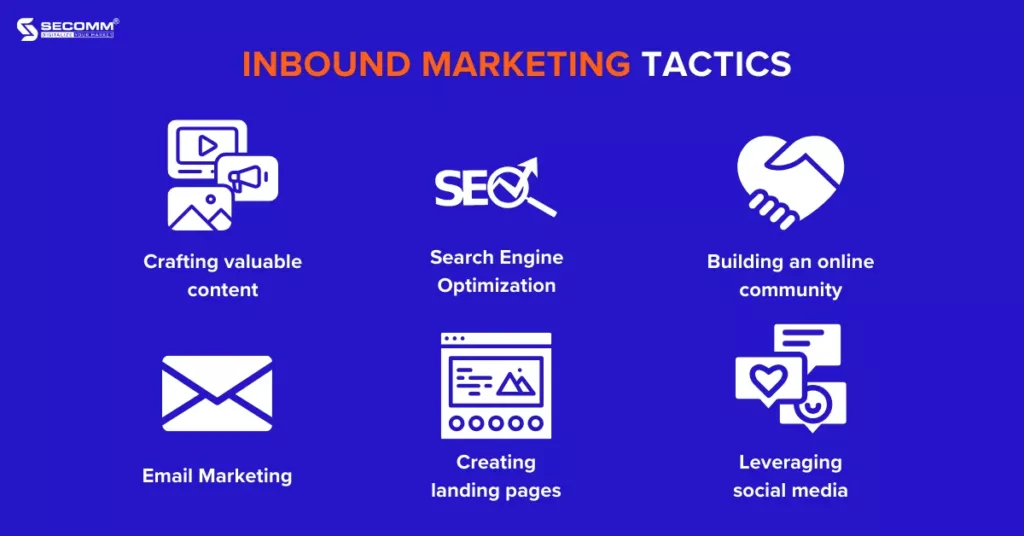
In the world of eCommerce, Inbound Marketing employs the principles and strategies of Inbound Marketing to attract and engage potential customers. Here are several common Inbound Marketing methods applied in eCommerce:
- Crafting valuable content: Generating useful content relevant to the business’s products or services, such as blogs, user guides, instructional videos, infographics, and other content formats.
- Search Engine Optimization (SEO): Optimizing the website and content to improve search engine rankings.
- Building an online community: Using social media, blogs, forums, or other platforms to interact with potential customers and foster an online community centered around the brand and its products.
- Email Marketing: Building an email list from potential customers and executing email marketing campaigns to deliver information, updates, promotions, and customer-specific content.
- Creating landing pages: Creating landing pages to establish a potential customer database and engage with them through marketing campaigns.
- Leveraging social media: Using social media platforms like Facebook, TikTok, Instagram, Twitter, and more to share content, interact with potential customers, and enhance brand recognition.
Outbound Marketing Tactics
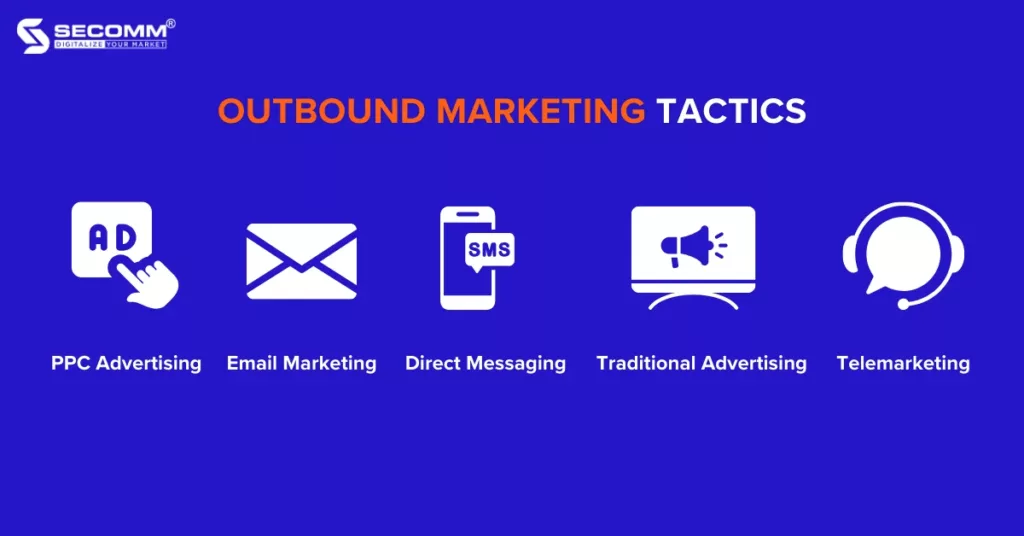
In the eCommerce world, Outbound Marketing employs the methods and strategies of Outbound Marketing to build brand recognition among a broad customer base with the objective of boosting online sales. Here are some common Outbound Marketing techniques typically utilized in eCommerce:
- PPC Advertising: Using paid online advertising channels such as Google Ads, Facebook Ads, or other online advertising formats to deliver marketing messages to potential customers.
- Email Marketing: Sending direct advertising emails to potential customers or existing customers to announce products, promotional programs, or relevant news.
- Direct Messaging (SMS Marketing): Sending direct messages to potential customers’ mobile phones to inform them about products, offers, or promotional programs.
- Traditional Advertising: Using traditional advertising forms like television, radio, print media, magazines, and billboards to drive a large customer base to the eCommerce website/app for purchasing.
- Telemarketing: Making direct phone calls to potential customers to introduce products or services, provide advice, or make sales.
In essence, Outbound Marketing in eCommerce can rapidly establish brand recognition and reach a large online audience, but it also necessitates consideration of effectiveness and the response of potential customers, with the ultimate goal of increasing online sales.
Here is a summary of the basic information about Inbound Marketing and Outbound Marketing in eCommerce. Depending on their individual needs, businesses will allocate time and budget for Inbound Marketing and Outbound Marketing accordingly.
Contact or call the SECOMM hotline at 02871089908 today for a free consultation on the implementation of eCommerce Marketing.
 2
2

 9,120
9,120

 0
0

 1
1
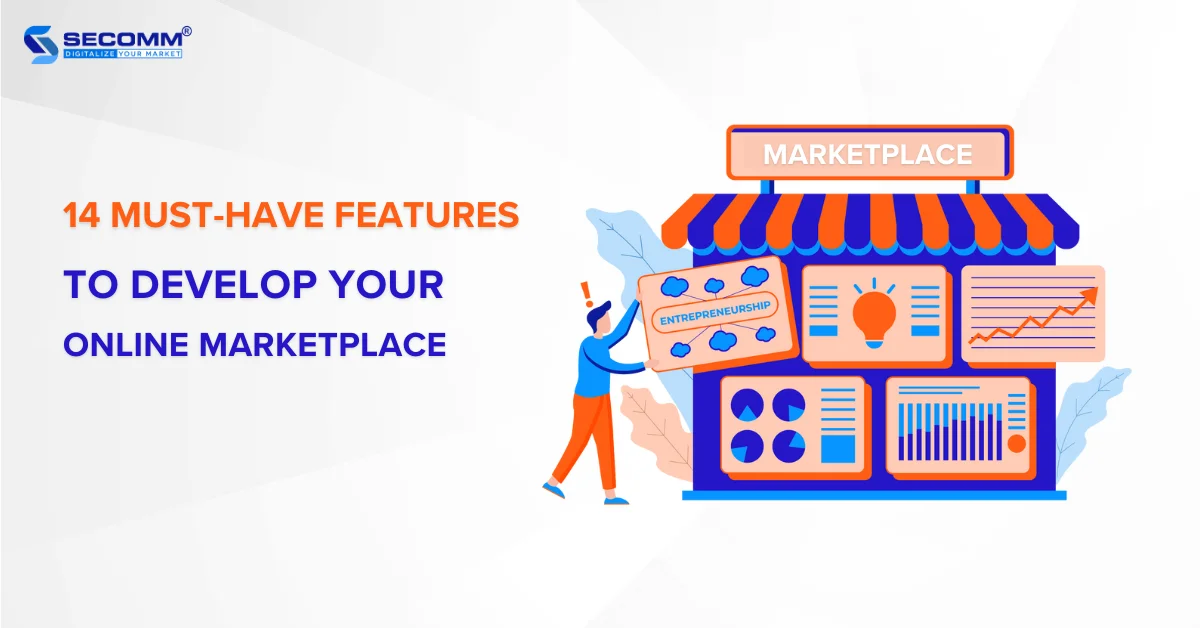
14 MUST-HAVE FEATURES TO DEVELOP YOUR ONLINE MARKETPLACE
The surge in demand for online shopping via eCommerce marketplaces over recent years has been remarkable. So, it comes as no surprise that numerous businesses are looking for ways to build their own marketplaces to diversify their product offerings and engage with a wide range of customer segments.
Operating an eCommerce marketplace differs significantly from managing an eCommerce website. The key is to ensure that the experience is user-friendly and efficient for all involved parties, including administrators, sellers, and buyers, during both the operational and transactional phases.
Depending on the strategy, scale, budget, market, and target audience, businesses will make suitable adjustments. However, the following online marketplace features continue to be crucial when implementing the majority of eCommerce marketplaces today.
Operator Features
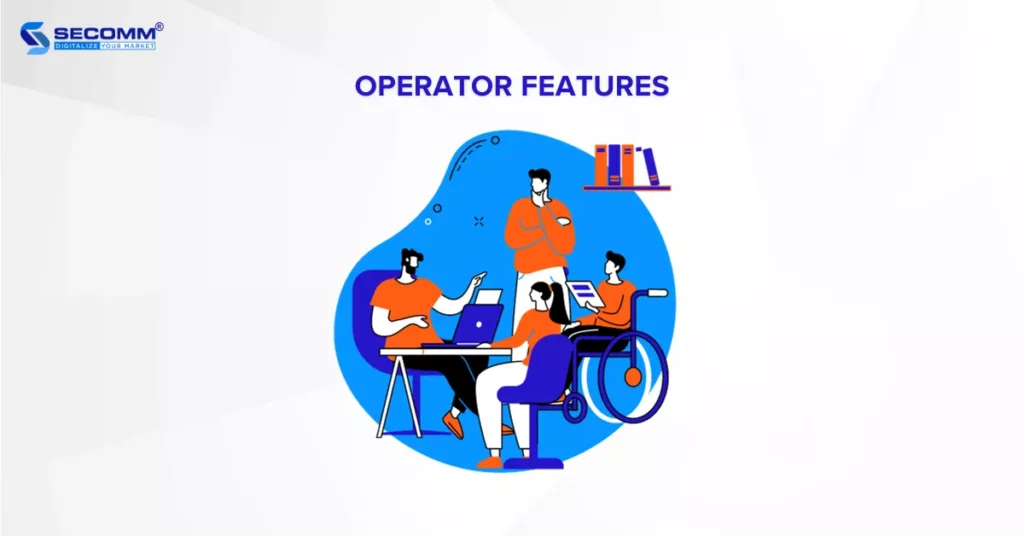
The operator, also known as an administrator or owner of the online marketplace, holds a pivotal role in managing and running the platform. They possess the authority to access and govern all data and carry the responsibility for the platform’s overall performance and growth.
As a result, essential features for operators include:
Seller Management
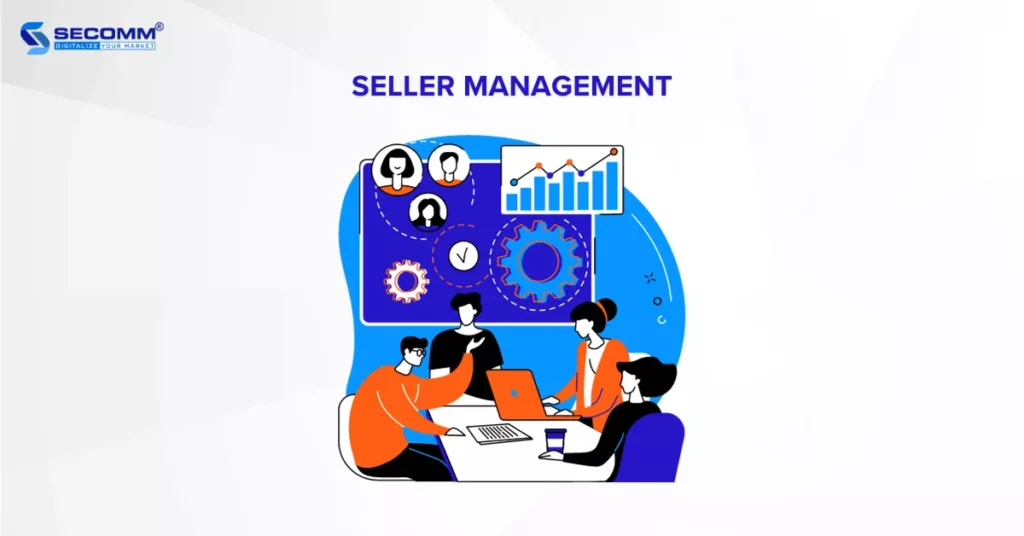
The operator’s role involves helping sellers register on the platform, gather their information, and grant access to tools that aid their business operations. Additionally, other aspects of ‘Managing Sellers’ that businesses should consider include:
- Communication and Support Channels: This entails providing customer service and addressing seller accounts and technical issues through channels like email or a hotline.
- Content Management: Ensuring that products, content, images, and videos uploaded by sellers comply with the eCommerce platform’s established standards and regulations.
- Monitoring Seller: Tracking and evaluating data related to seller activities, such as sales volumes, customer feedback, response times, and adherence to platform policies.
- Transaction Management: This covers policies regarding commissions, transaction fees, and payments. Businesses must ensure they furnish comprehensive documentation, accurately and promptly process payments, and offer support in resolving related concerns.
Marketing Management
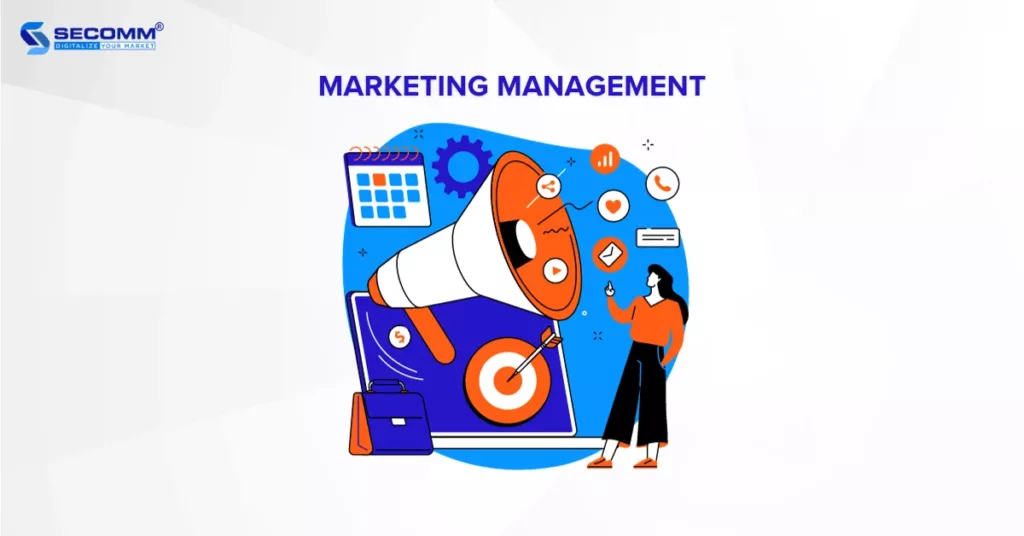
To expand the pool of registered sellers and draw more customers to shop on the online marketplace, operators continually rely on marketing efforts. Some methods include optimizing SEO, leveraging influencer marketing, running targeted advertisements, devising in-platform promotional initiatives, and more.
However, it’s crucial for businesses to possess a set of features and tools to proficiently craft and manage marketing campaigns across multiple channels. This aids in the effective promotion of their marketplaces, the attraction of additional sellers and customers, and the establishment of a distinctive presence within the competitive eCommerce landscape.
Supply Chain Management
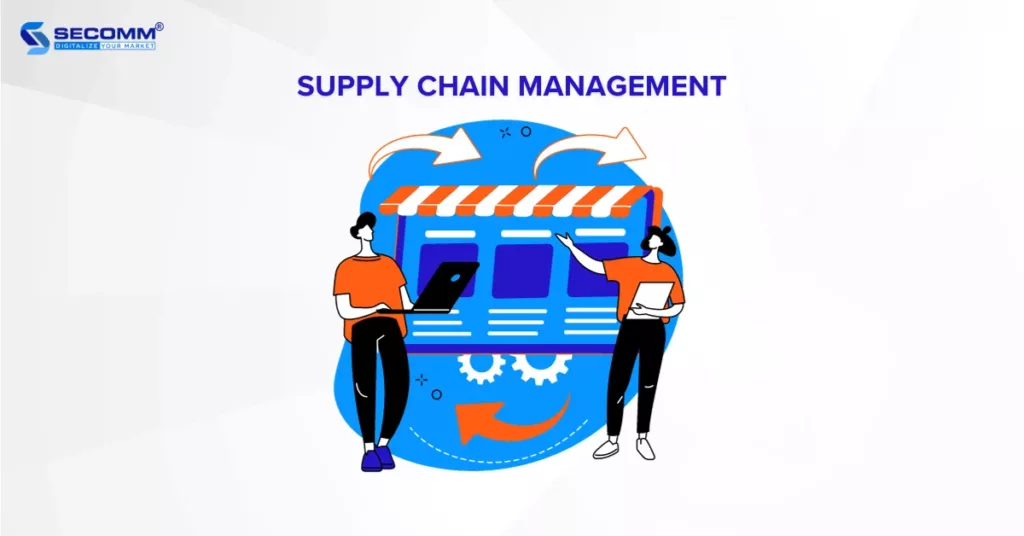
Given the substantial order volume, operators need features that offer them full control of order fulfillment. This includes inventory management, overseeing multiple warehouses, configuring automated workflows for handling and transporting orders between warehouses, and delivering them to end-users.
Plus, to optimize the delivery process, businesses can partner with third-party shipping providers to provide customers with various choices, such as standard, express, or expedited shipping methods.
Analysis & Reporting
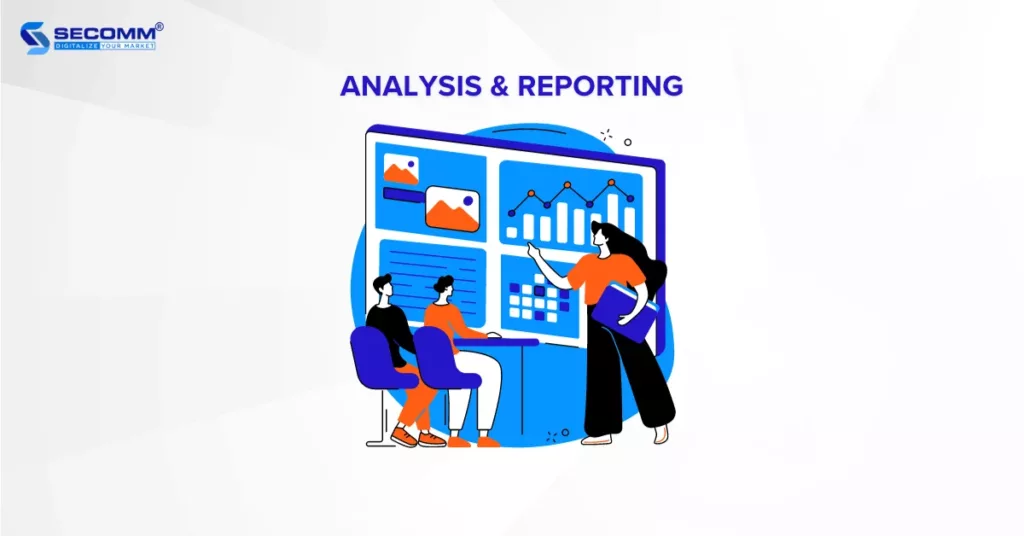
Through comprehensive data analysis and detailed reporting, businesses can gain insights into their overall operations and make informed adjustments. Key data points include:
- eCommerce Performance: This encompasses metrics related to sales, revenue, user engagement, and satisfaction levels to assess the current state of the platform and make strategic decisions.
- User Behavior: This includes data on new account registrations, conversion rates, browsing habits, and search trends on the platform. It helps identify lingering issues for improvement and provides a better user experience.
- Marketing Reports: Operators need in-depth marketing reports to assess the ROI of marketing campaigns, analyze customer acquisition channels, and evaluate the impact of various promotional programs and incentives.
Seller Features
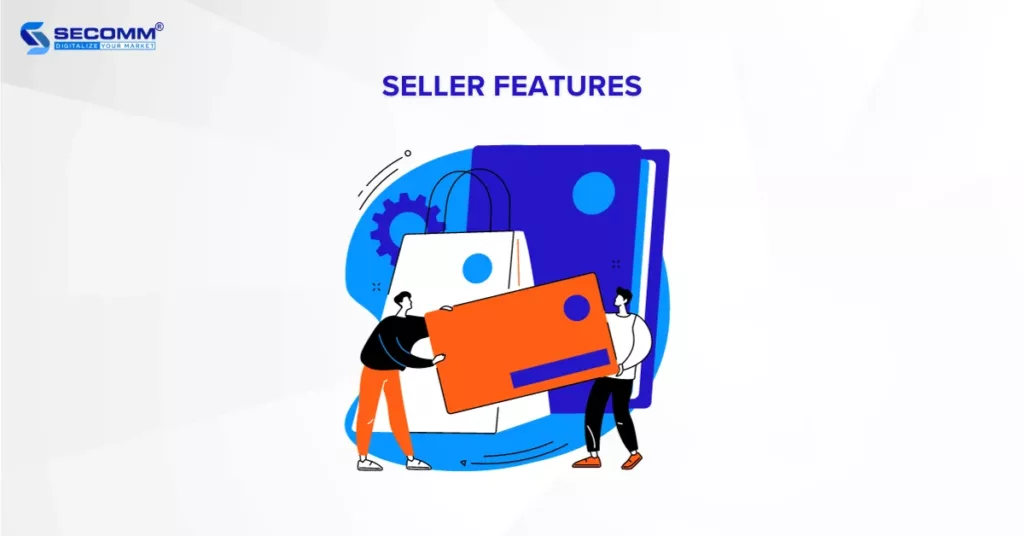
Sellers, also known as suppliers or merchants, are individuals or businesses that offer products or services on the online marketplace. Their responsibility is to manage their operations and optimize sales performance.
Therefore, eCommerce marketplace features for sellers to conduct efficient business operations include:
Easy Onboarding
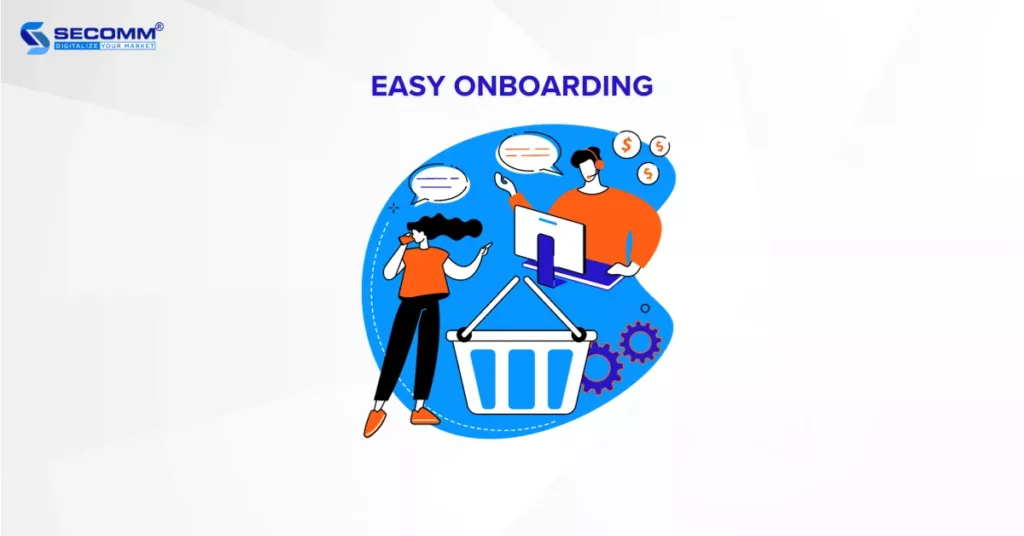
Sellers have many choices in the midst of multiple online marketplaces. So, offering a swift and uncomplicated registration and store setup process is an effective way to attract a wide pool of new sellers to open their stores.
Businesses can offer detailed step-by-step guidance to sellers, from creating an account and verifying their seller identity to decorating their store and listing products. Furthermore, businesses can provide instructional videos, FAQs, and blogs to guide them on optimizing their store, promoting products on the platform, as well as understanding the fees associated with the eCommerce marketplace’s sales policies.
Product Management
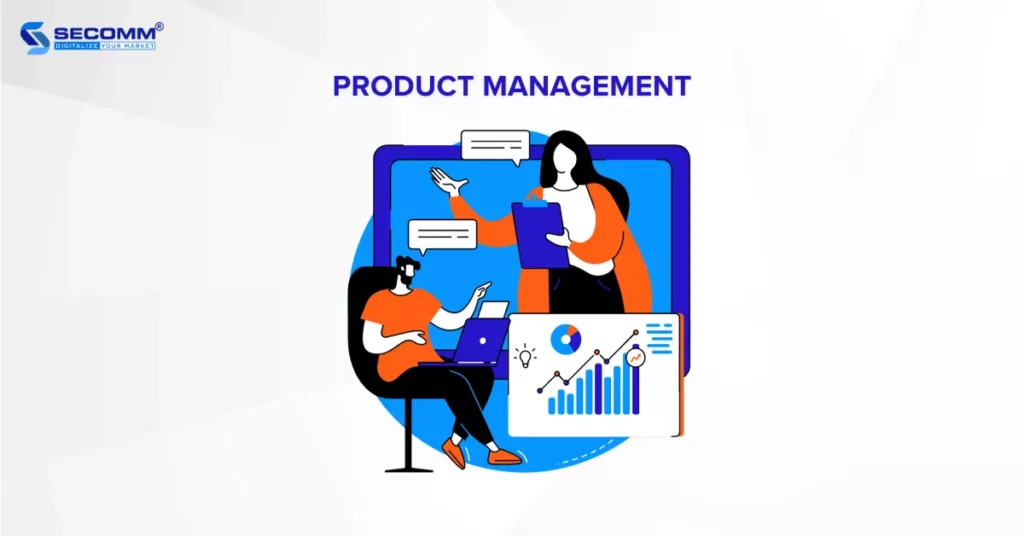
Beyond listing products, helping sellers manage their product catalog effectively on the marketplace is equally important.
This includes tasks like adding and removing products, maintaining high-quality product descriptions, images, and videos, handling product variations and attributes, updating inventory, setting product prices, applying discounts, prompting product reviews, and moderating and verifying reviews based on the platform’s standard.
Marketing Management
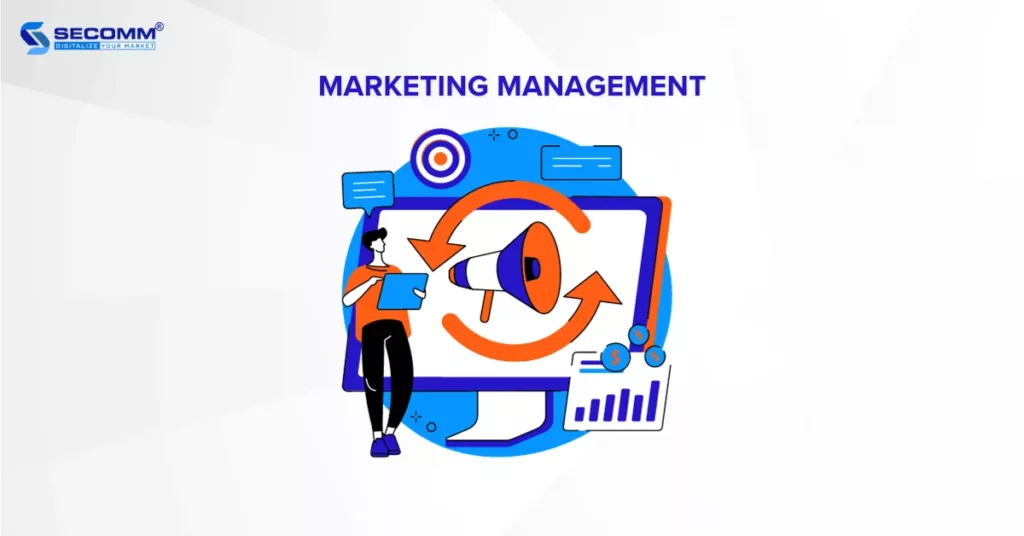
Sellers need tools and features for setting up marketing campaigns to promote their stores and products, driving increased sales. These commonly used marketing tools on online marketplaces include in-site and off-site advertising, promotional messaging, flash sales, bundled deals, shipping discounts or free shipping promotions, creating discount vouchers, live-streaming sales events, and participating in platform-wide promotional activities.
Order Management
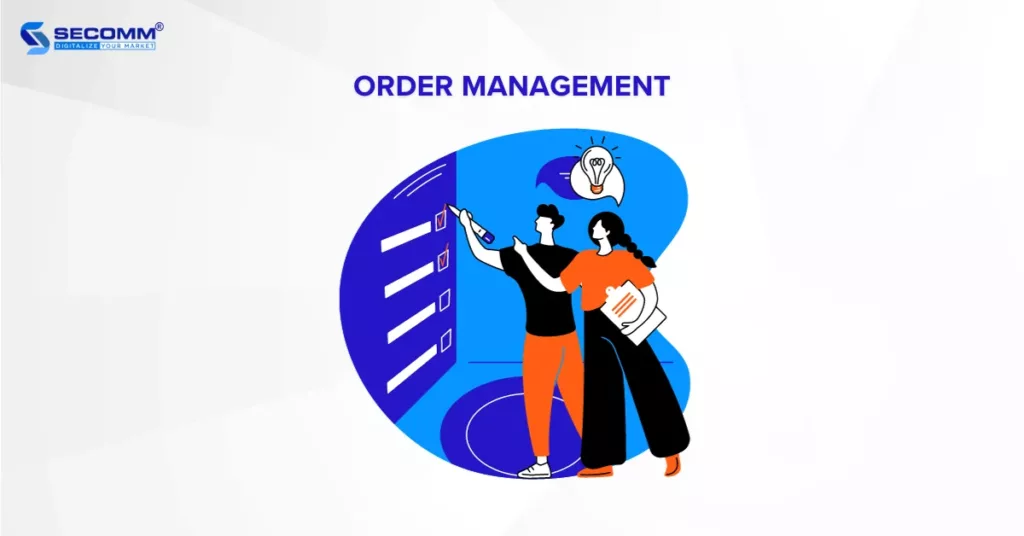
Providing sellers with effective order management capabilities also impacts the customer experience on the eCommerce marketplaces. This means offering sellers features to manage their order lists, track the status of orders, fulfill orders, handle returns, and efficiently address any issues that may arise.
Analysis & Reporting
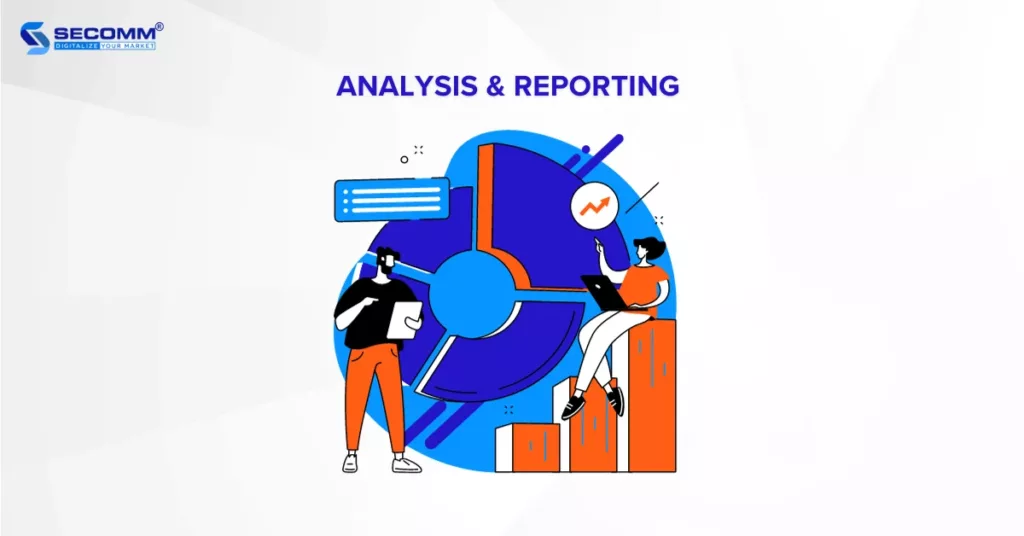
Sellers rely on data analysis and reports to track and manage their business performance on the online marketplace effectively. These reports provide valuable insights for making data-driven decisions and optimizing their operations.
- Sales Performance: Sellers have access to data including total sales, revenue, order volume, and average order value to evaluate the success of their products or services and make informed decisions.
- Inventory Reports: Data related to inventory levels, inventory turnover, best-selling products, and less popular products help optimize inventory by adding popular items or reducing/limiting the sale of low-demand products.
- User Behavior: This includes data on purchasing behavior, feedback, customer reviews, and ratings for products and services, allowing sellers to enhance the customer experience and service.
- Expense Reports: This covers financial aspects such as transaction fees, commissions, invoices, payment receipts, and taxes. Clear financial reporting helps sellers manage cash flow efficiently while adhering to the marketplace’s policies.
Buyer Features
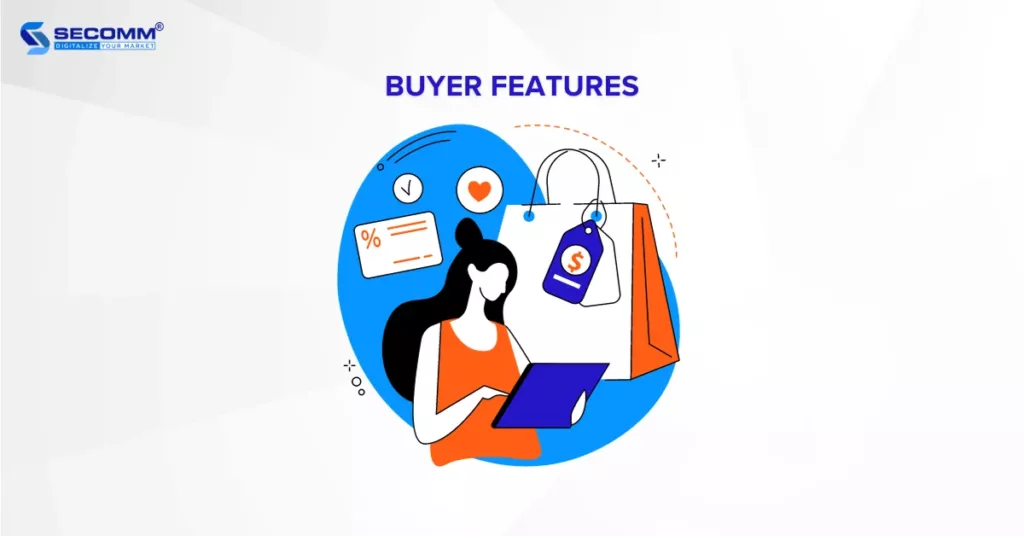
Buyers, also known as customers, refer to individuals or businesses that purchase goods or services from sellers on the eCommerce marketplace. Customers play a crucial role in driving the success of the marketplace. Therefore, feature development is focused on enriching the shopping experience.
Advanced Search
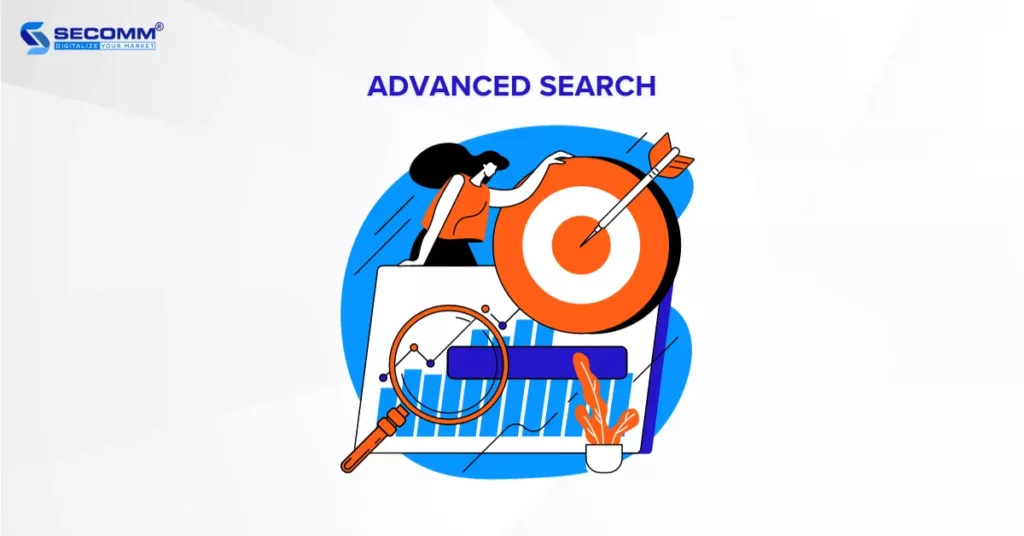
When accessing an eCommerce marketplace, the first thing most users do is use the search bar to find the information and products they desire. However, the product catalog on marketplaces is extensive and can be overwhelming for buyers.
Therefore, beyond maintaining well-structured and organized product categories, businesses should offer advanced search capabilities to simplify and enhance the customer’s product discovery experience process. Common advanced search options include filtering, image-based, or voice-based search (optimized for mobile devices).
Personalization
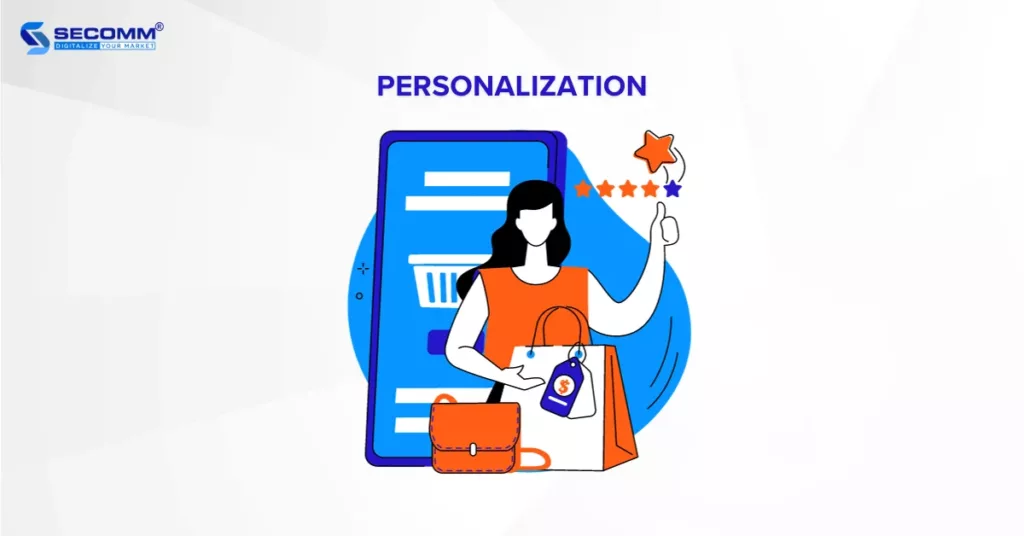
Features like product recommendations, push notifications, personalized content, and customer service tailored to individual shopping behavior and preferences are crucial for enhancing the eCommerce experience. Studies have revealed that 74% of customers feel frustrated when encountering non-personalized shopping experiences on websites.
By integrating advanced search capabilities with personalization, companies can offer a more enriching user experience, leading to greater satisfaction, higher levels of engagement, and increased customer retention. This transforms their marketplace into an ideal shopping destination for buyers.
Simple Checkout
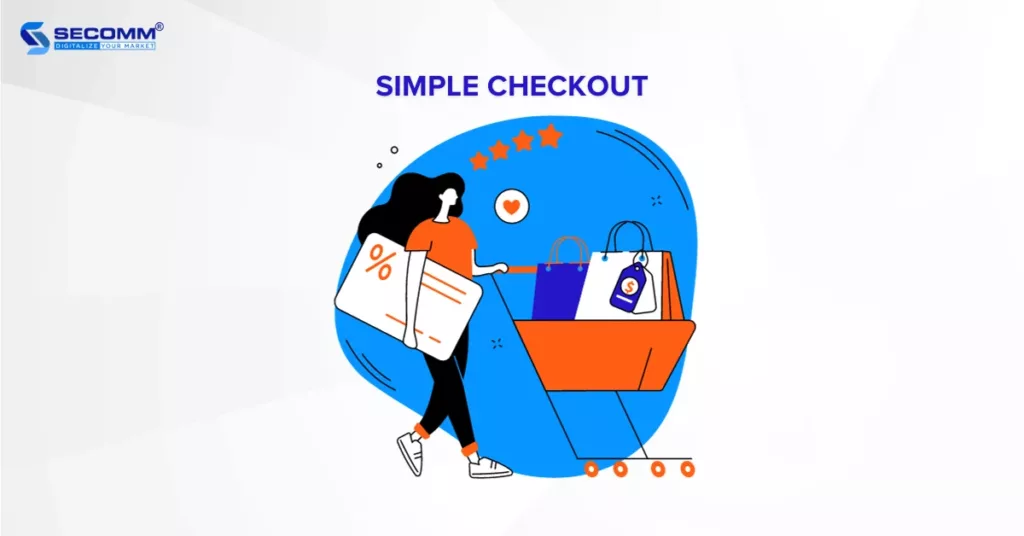
Out of the various reasons for cart abandonment, issues related to long and complicated checkout procedures make up 17%, according to Baymard. it is essential for businesses to streamline the payment experience for customers, removing unnecessary steps, offering a transparent payment process, or implementing a one-page checkout.
Moreover, businesses can diversify their payment methods to suit their target markets, including options such as Cash on Delivery (COD), credit card payments, eWallets, and buy now, pay later options.
Order Tracking
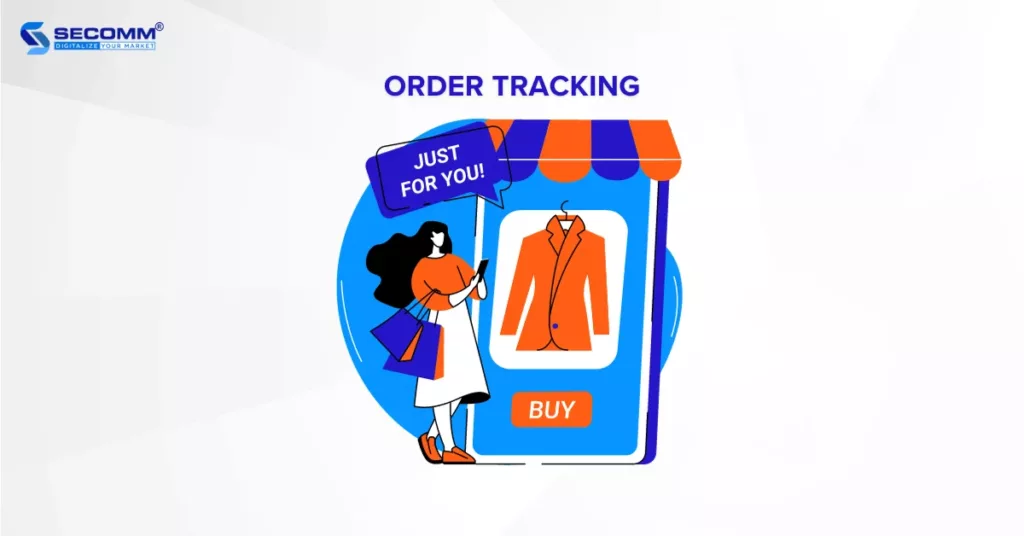
To boost the trust of buyers and sellers in the eCommerce platform, it is crucial for businesses to offer real-time order tracking and status-checking capabilities.
Buyers can track their orders through the marketplace’s mobile app or website by using their unique order IDs. This way, both the seller and the buyer can communicate promptly if any issues arise with the order.
Review & Rating
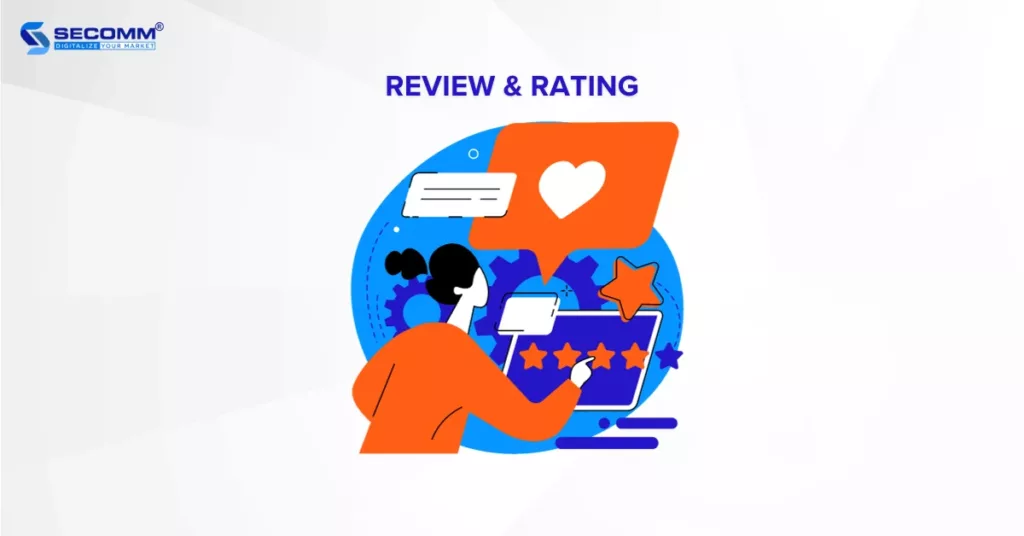
With a diverse range of product choices offered by different sellers, customers may find it challenging to make purchasing decisions when they lack trust in either the product or the seller. Hence, the review and rating feature is essential for building trust and expediting decisions.
The review feature allows buyers who have made purchases to leave comments, reviews, and ratings for a product, customer support, and product packaging, regardless of the seller.
Whether these reviews and ratings are positive or negative, they have a significant impact on a buyer’s decision-making process. Therefore, this serves as a motivation for sellers to enhance the quality of their products and services and for the eCommerce marketplace owner to provide an improved user experience.
Above are the 14 essential features for operators, sellers, and buyers that businesses should keep in mind when building an online marketplace. With many years of eCommerce implementation experience for numerous clients in various countries worldwide, SECOMM has gathered valuable insights to boost the development and operation of your business’s marketplace swiftly and effectively.
Contact or call SECOMM’s hotline (02871089908) today for a free consultation.
 2
2

 8,497
8,497

 0
0

 1
1
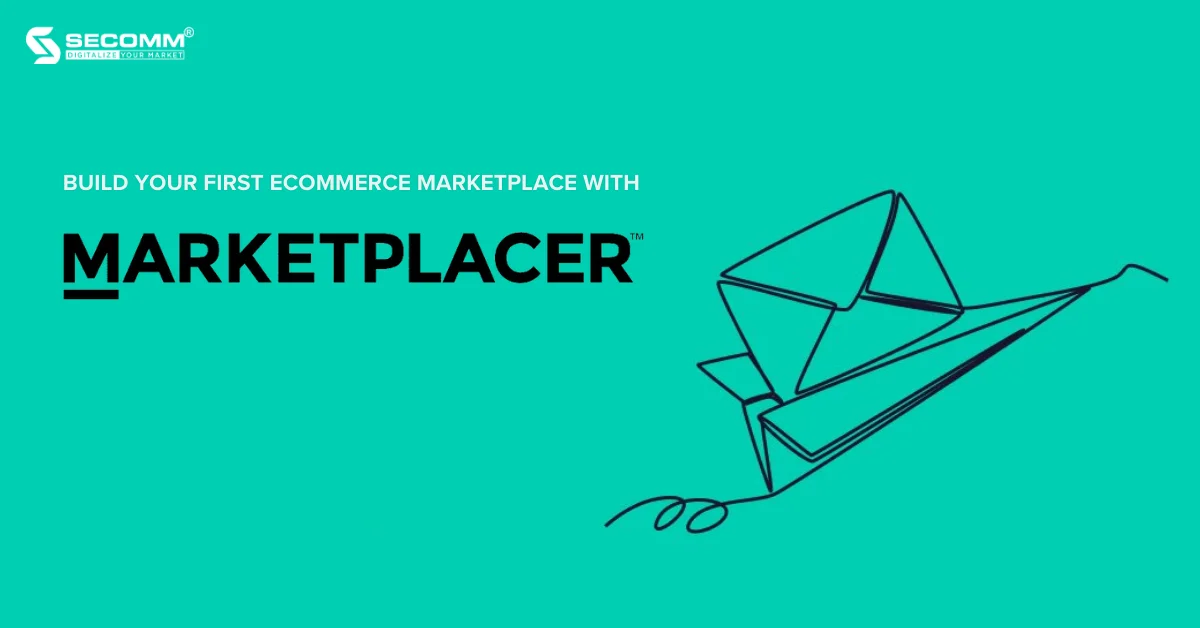
BUILD YOUR FIRST ECOMMERCE MARKETPLACE WITH MARKETPLACER
As reported by Digital Commerce 360, global consumers have collectively expended more than $3.25 trillion on famous eCommerce marketplaces such as Amazon, Ebay, and Alibaba. This indicates the increasing significance of online marketplaces in customer shopping experiences.
Therefore, many businesses have promptly devised strategies to enter the race for market share in eCommerce landscape. To achieve this goal, businesses must first develop their own marketplaces. The initial but crucial step in this process is selecting the ideal platform.
The following article focuses on introducing this platform as a recommendation for large businesses among countless optimal choices out there.
What is Marketplacer?
Marketplacer is a Software as a Service (SaaS) platform hosted on AWS, providing businesses with essential tools and features for building professional and highly adaptable eCommerce marketplaces capable of rapid scalability and swift page loading.
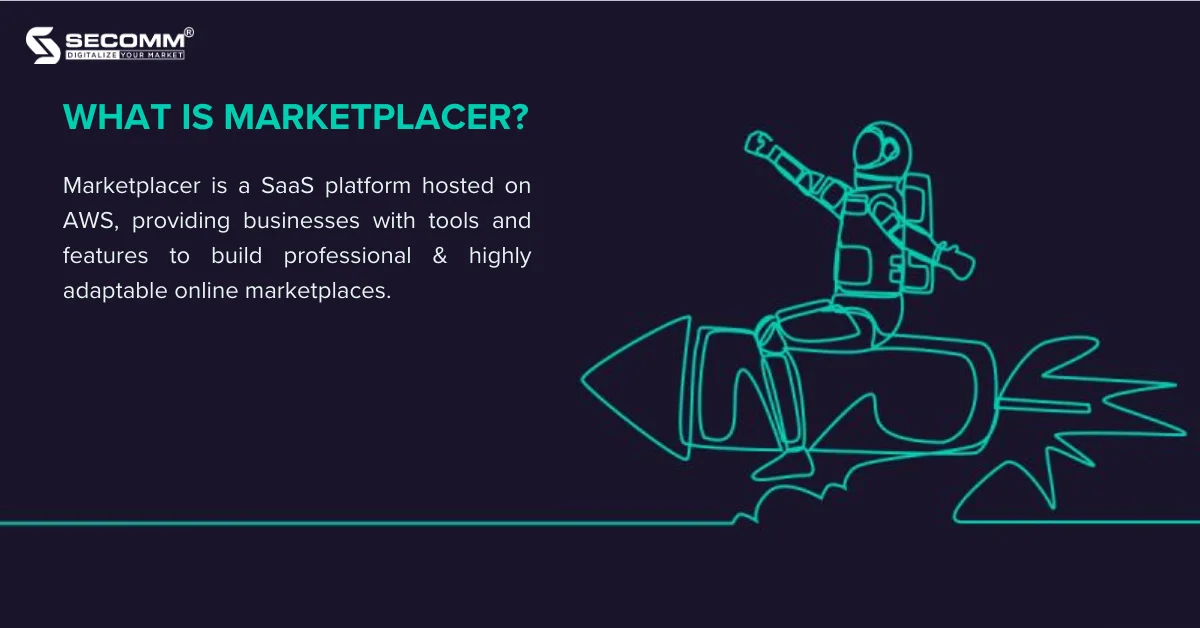
This platform streamlines the management and administration of eCommerce marketplaces. It simplifies tasks like order fulfillment, product category adjustments, third-party extension integration, cross-marketplace operational synchronization, and the implementation of strategies for revenue optimization.
To date, this platform has successfully established and expanded over 100 eCommerce marketplaces, forging connections with more than 13,000 sellers spanning the globe.
How Marketplacer works?
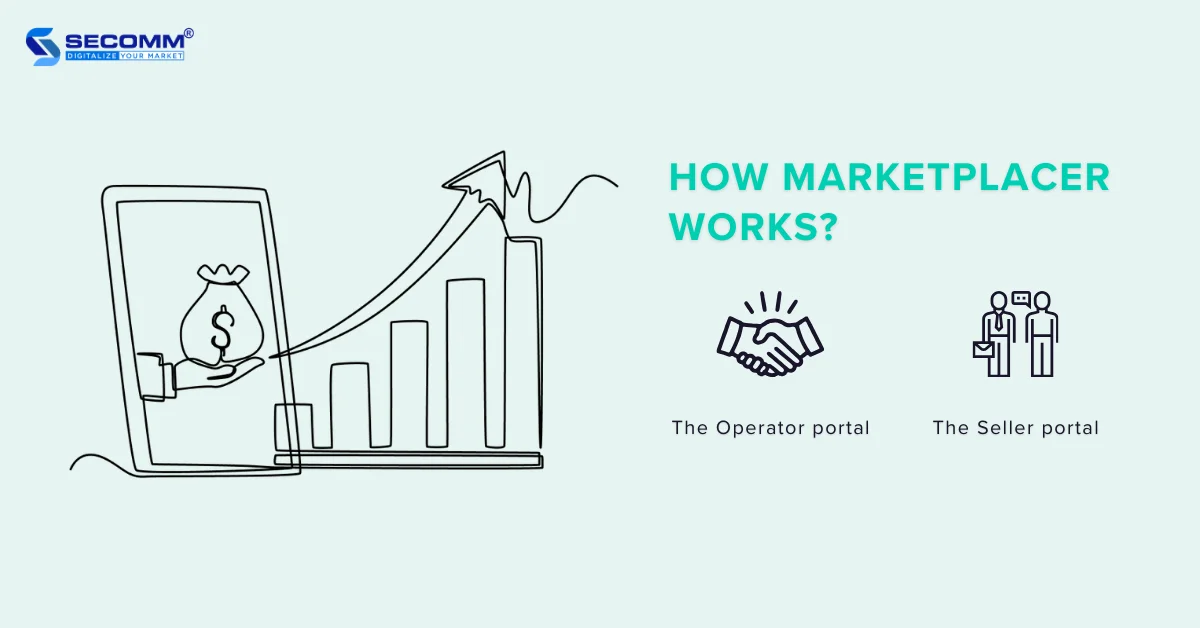
The Operator portal
This platform offers businesses a Marketplace-wide API based on GraphQL API, allowing them to:
- Build a headless frontend or seamless integration with existing eCommerce systems.
- Access and manage all data on the online marketplace via the Operator Portal, which includes:
- Manage Sellers
- Manage Seller payouts and billings
- Product category management
- Order management
- Delivery management
- Content management
- Custom reporting
Furthermore, Marketplacer provides businesses with access to Webhooks, enabling them to receive notifications from the Marketplacer platform for any changes or updates during their operations.
The Seller portal
This platform provides sellers on the marketplace with Seller API based on V2 (REST) API to
- Automate their sales processes on the marketplace
- Access and manage various aspects of their seller data through the Seller Portal, including:
- Product management
- Sales & Marketing management
- Order management
- Inventory management
- Analysis & reporting
Similar to how businesses operate their business on the marketplace, sellers also have access to webhooks for receiving notifications regarding changes throughout their selling journey.
Marketplacer implementation models
This platform offers two implementation models, allowing businesses to tailor the development of their online marketplace to align with their specific goals.
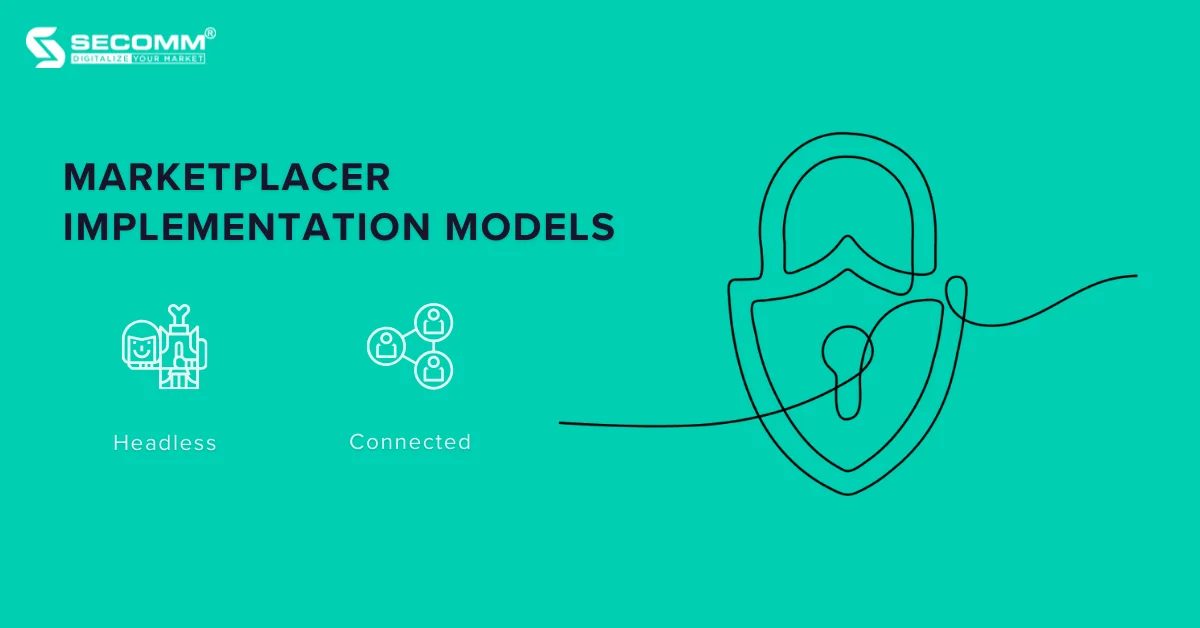
Headless
The Headless model empowers businesses to utilize their tailor-made frontend, commonly known as the “head,” which represents the user interface. This frontend is integrated with Marketplacer’s fundamental backend through APIs to execute the marketplace.
Therefore, opting for the Headless model is ideal for businesses seeking extensive control over the user experience while leveraging Marketplacer’s core technology to foster eCommerce growth.
Connected
In the Connected model, businesses can efficiently integrate a pre-built eCommerce system into Marketplacer’s backend, avoiding the need for an extensive time and financial resources to build from scratch. This integration allows businesses to maintain the full functionality of the pre-existing system while benefiting from this platform’s advanced infrastructure for seamless marketplace deployment.
It’s worth noting that Marketplacer currently offers pre-built connectors exclusively for three prominent platforms: Adobe Commerce, Salesforce Commerce Cloud, and commercetools. As a result, the Connected model is best suited for businesses utilizing one of these three platforms to facilitate their eCommerce.
Pros of Marketplacer
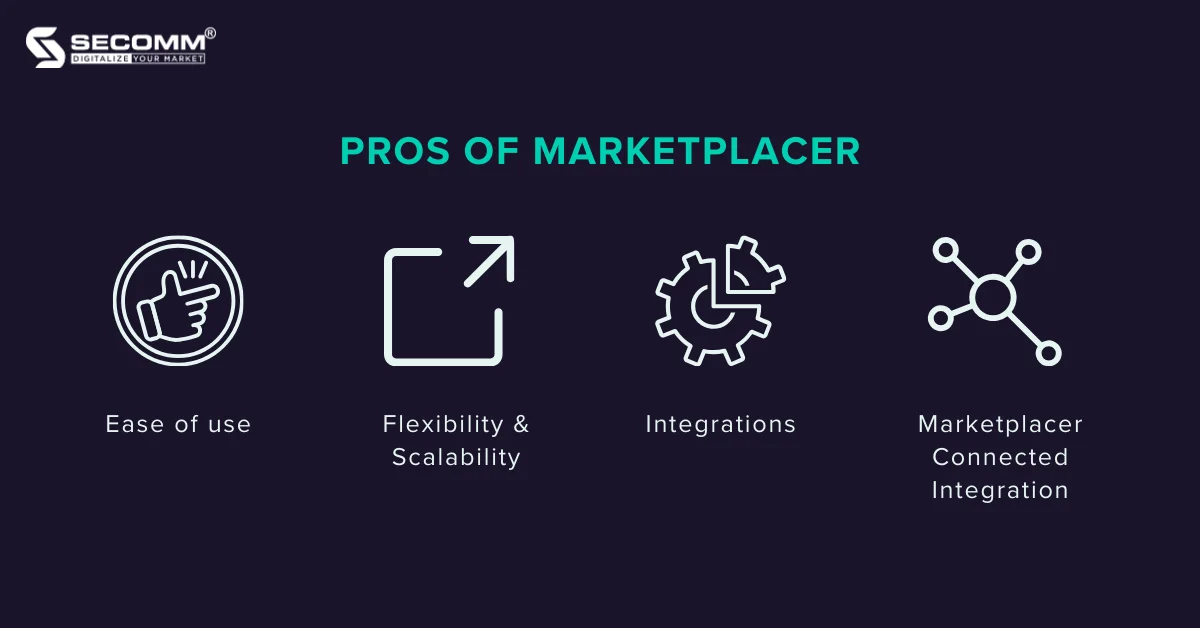
Ease of use
This platform offers a user-friendly interface and intuitive tools, making it simple for businesses to build and manage their online marketplace.
Flexibility & Scalability
This platform is tailored to suit online marketplaces of diverse sizes. The platform boasts excellent scalability and remarkable flexibility, empowering businesses to manage an ever-increasing volume of sellers, customers, and listing products. This facilitates seamless expansion of operations as needed.
Integrations
Businesses can easily discover well-known applications and extensions within Marketplacer’s growing collection of available integrations. Some noteworthy integrations include popular social media platforms like Facebook, Twitter, and LinkedIn, as well as payment gateways such as PayPal, Zooz, Yotpo, and advertising management tools like Fuze, Firstpage, and Citrus Ad.
Marketplacer Connected Integration
Marketplacer’s success is attributed to its ‘Connected’ technology, enabling businesses to deploy their marketplaces with two versatile options: crafting a tailored frontend or integrating seamlessly with existing systems.
Also, businesses can effortlessly blend third-party products into their current inventory, broadening their product range and portfolio with minimal investment and mitigating product lifecycle management tasks. This model is known as the Hybrid Marketplace and has been successfully adopted by enterprises like Amazon, Walmart, and others.
Cons of Marketplacer
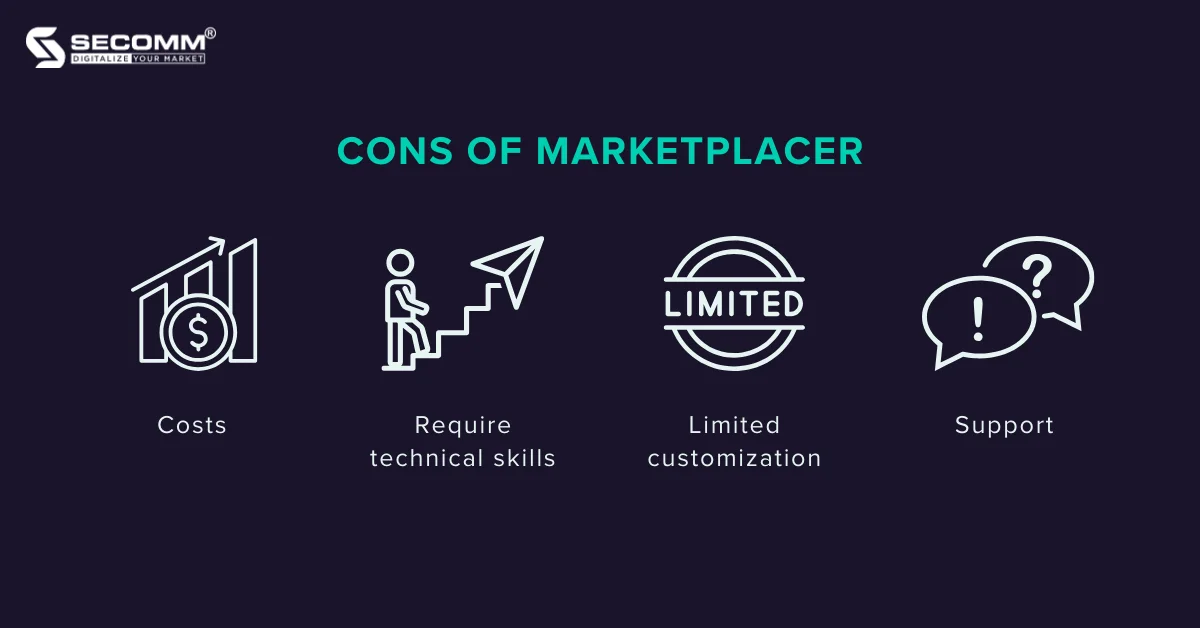
Costs
The license fee isn’t publicly available and businesses are required to reach out to the Marketplacer team for a personalized consultation and cost estimates. Furthermore, the platform doesn’t offer a trial version, which may pose challenges for businesses when planning their implementation budget.
Require technical skills
While this platform offers a user-friendly interface, it may pose challenges for users who are not familiar with building and operating an eCommerce marketplace. Therefore, the implementation process will require businesses to have technical expertise, or they can seek specialized assistance to efficiently build and optimize the platform.
Limited customization
Despite its flexibility and high degree of customization, Marketplacer’s ability to meet the highly complex deployment needs of large-scale eCommerce systems may pose challenges.
Support
This platform provides 24/7 support services and offers learning resources, but there is room for improvement in the quality and responsiveness of their support. Plus, as an Australian-based company primarily serving the Australian market, some of their terminology might be less clear to international customers.
To successfully build and operate a thriving eCommerce marketplace, the first thing businesses need to do is choose a platform. This platform is one of the standout platforms that businesses should consider.
Feel free to contact or call SECOMM’s hotline at (028) 7108 9908 for free consultations.
 2
2

 13,006
13,006

 0
0

 1
1
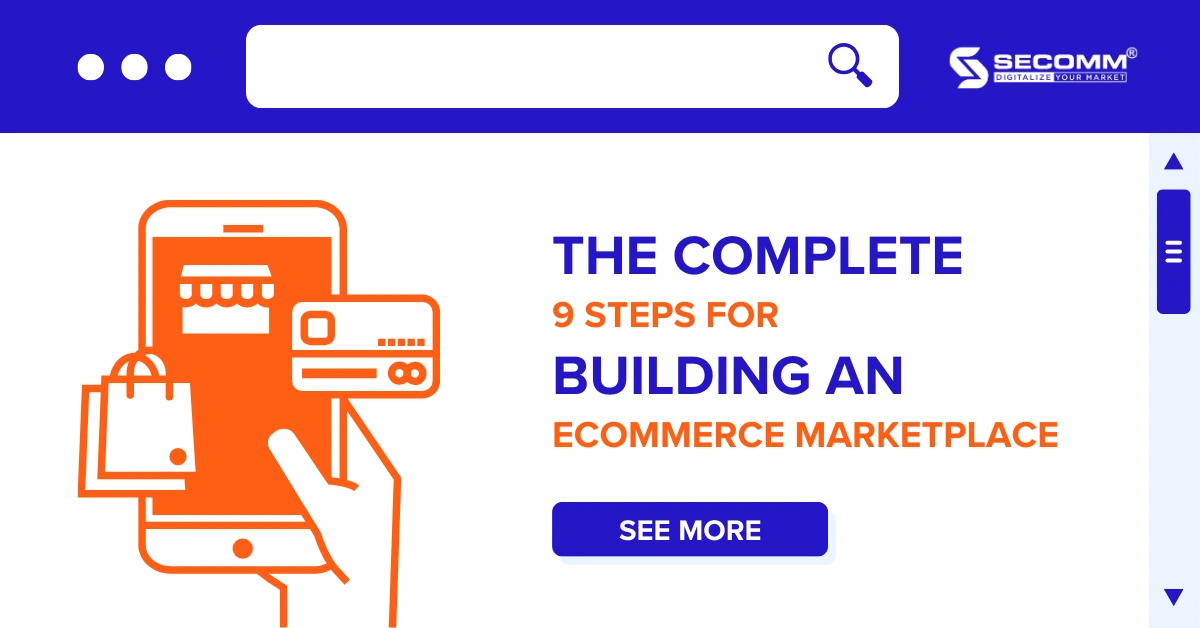
THE COMPLETE 9 STEPS FOR BUILDING AN ECOMMERCE MARKETPLACE
Unlike building eCommerce websites for simpler models like B2C or B2B, implementing an online marketplace requires a higher level of technical knowledge, programming skills, database management, system administration, and more.
In this article, SECOMM will share the essential steps for successfully developing an eCommerce marketplace, from market research and business planning to designing an appealing user interface, developing functional systems, and more.
Conduct market research and business planning
Market research and business planning are essential and indispensable initial steps in starting an eCommerce marketplace or any business operation.
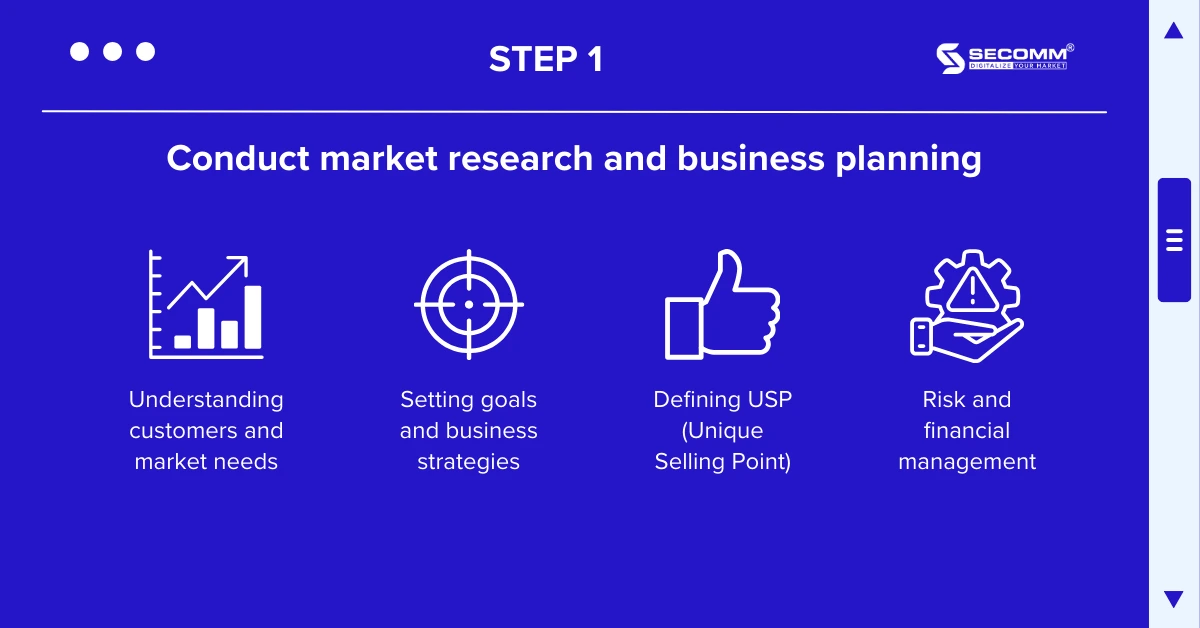
Here are some considerations for businesses when undertaking these activities:
- Understanding customers and market needs: Market research helps businesses gain a better understanding of their target customers, competitors, and industry-influencing factors. By exploring customer needs, preferences, and shopping behaviors, businesses can make strategic decisions to create the best online shopping experience and seize effective business opportunities.
- Setting goals and business strategies: Business planning helps companies identify specific objectives and devise strategies to achieve them. Companies need to define their core and secondary products/services, market access strategies, customer engagement approaches, and competitive value creation methods. A business plan helps create a detailed roadmap for how the business will build, develop, and operate its eCommerce marketplace.
- Defining USP (Unique Selling Point): Market research allows businesses to comprehend the strengths and weaknesses of their competitors. This helps businesses identify distinctive features and competitive value that their brand can provide to attract customers. Determining the USP enables businesses to leverage these elements in branding, marketing, and operational strategies to gain a competitive advantage in the eCommerce marketplace.
- Risk and financial management: Creating a financial plan and managing risks before embarking on the online marketplace development process is crucial. Businesses need to evaluate the financial resources and requirements for project implementation and establish long-term financial plans to ensure the sustainability of the business.
Select eCommerce platform
The eCommerce platform is a crucial element in the process of building an online marketplace. If the right choice is not made from the beginning, businesses may find themselves entangled in the whirlpool of technology when implementing their marketplace.
Typically, there are two types of eCommerce platforms for businesses to choose from: SaaS and Open Source.
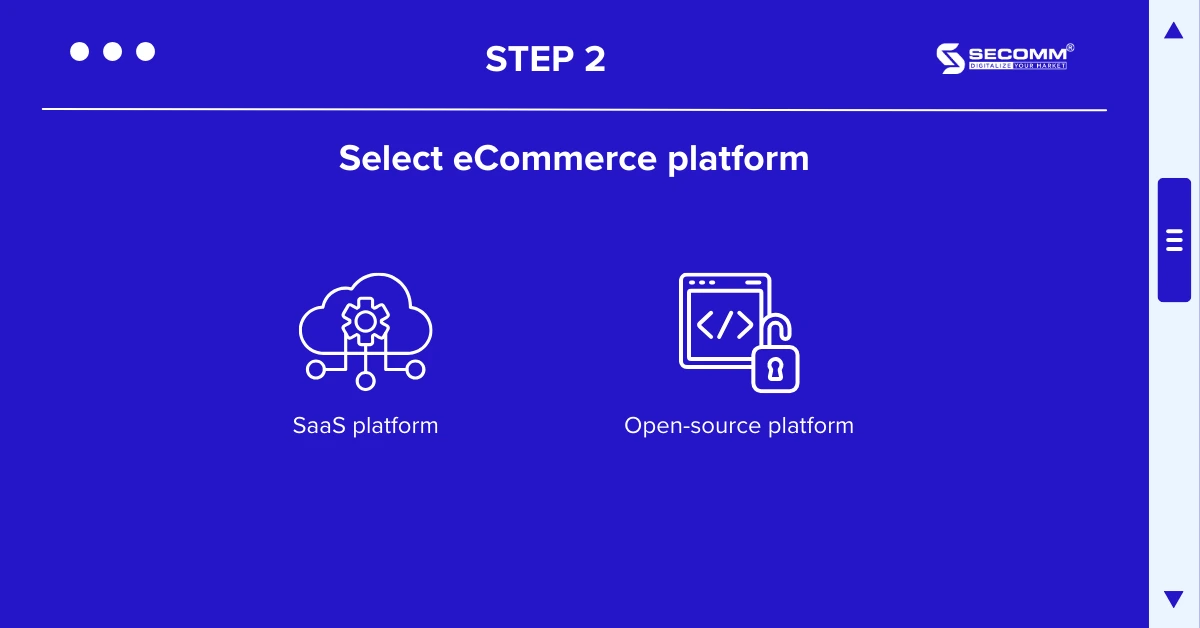
SaaS platform
SaaS (Software as a Service) eCommerce platforms are a software distribution model for building websites.
In this model, data is stored on the provider’s server, and the platform is responsible for handling technical aspects for businesses. Some popular SaaS platforms today include Haravan, Shopify, BigCommerce, and more.
- Pros: User-friendly, quick development time, high security, 24/7 customer support.
- Cons: Increasing development costs over time, limited customization, functionality, and scalability, and businesses may not own the source code and data.
Open-source platform
An Open Source platform, or open-source software, is software with publicly available source code that anyone can use for free. Open-source platforms are an optimal choice for businesses looking to develop complex eCommerce systems, especially tailored to the specific needs of an online marketplace.
Prominent examples of Open Source online marketplaces include Magento, WooCommerce (a plugin for WordPress), OpenCart, and more.
- Pros: These platforms offer high levels of customization and scalability, a wide range of additional features and utilities, and businesses have ownership of the source code and data.
- Cons: They are not very user-friendly, involve high development costs, and require extended deployment times.
Each platform type has its own set of advantages and disadvantages. Therefore, businesses should either have an in-house team or collaborate with an experienced and highly skilled eCommerce marketplace development agency to effectively advise on the selection, development, and operation of the chosen platform.
Outsource or build an in-house team
The initial decision regarding resource allocation for starting an eCommerce marketplace system has a profound impact on a company’s early business direction. Companies can choose to either collaborate with specialised development firms or establish their own in-house teams.
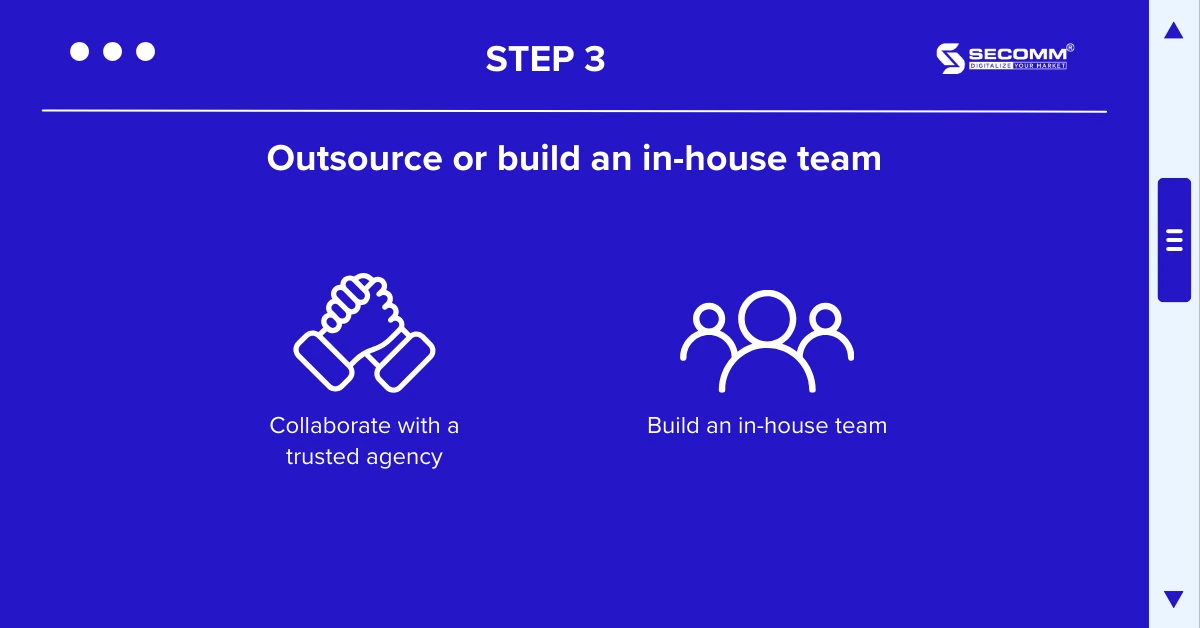
Opting for an in-house team entails investing time and budget into the recruitment and training of staff. However, it provides effective resource management, enabling businesses to adapt and develop the online marketplace system in alignment with their original vision.
Alternatively, when companies decide to seek external partners, they need to collaborate with various firms to identify the most reputable one. However, upon finding a partner with extensive practical experience in marketplaces across multiple platforms, businesses benefit from consultations and a multitude of solutions from diverse perspectives even before system development begins.
Moreover, these firms possess a wealth of experience in promptly addressing emerging issues during system development and operation. This not only ensures that the requirements are met as anticipated but also facilitates valuable knowledge and experience exchange among all parties involved.
Design UI/UX
The User Interface (UI) and User Experience (UX) are often considered two inseparable aspects in the process of designing the interface for an eCommerce marketplace.
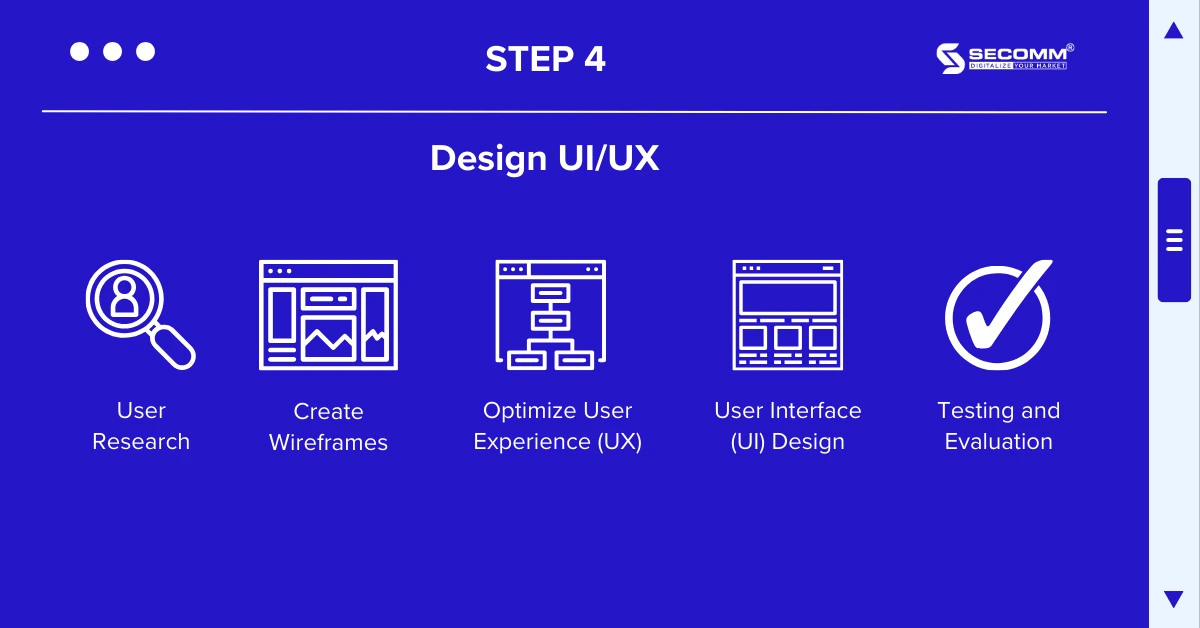
Here are the key steps in the UI/UX design process:
- User Research: Research and gain a deep understanding of the target user audience, including demographic information, behaviour, needs, and expectations. This helps the business identify important elements to focus on and design accordingly.
- Create Wireframes: Wireframes are simplified outlines of the website’s structure and layout, helping the business determine the placement of interface elements such as menus, buttons, images, and content containers. Wireframes provide an overview of the interface and assist in building the basic layout for the marketplace.
- Optimize User Experience (UX): Ensure the website is user-friendly, easy to navigate, and meets user needs, such as enhancing interactivity, mobile-friendliness, optimizing page loading speed, and more.
- User Interface (UI) Design: Create UI components such as buttons, menus, forms, images, and graphics that align with the brand. Make sure to use appropriate colors, fonts, and images to create a professional interface with a touch of the brand’s identity.
- Testing and Evaluation: After completing the UI/UX design, conduct testing with a user group or use testing tools to assess the effectiveness of the interface.
Design architecture and database
Starting from business requirements, the technical team will build the system architecture for the eCommerce marketplace based on the appropriate technology framework or platform. Various architectures can be used, such as three-tier architecture, microservices architecture, hybrid architecture, headless architecture, etc. Each type of architecture has its own advantages and limitations, so businesses need to carefully consider and work with experts on the team or partners to choose the most suitable system architecture for each stage.
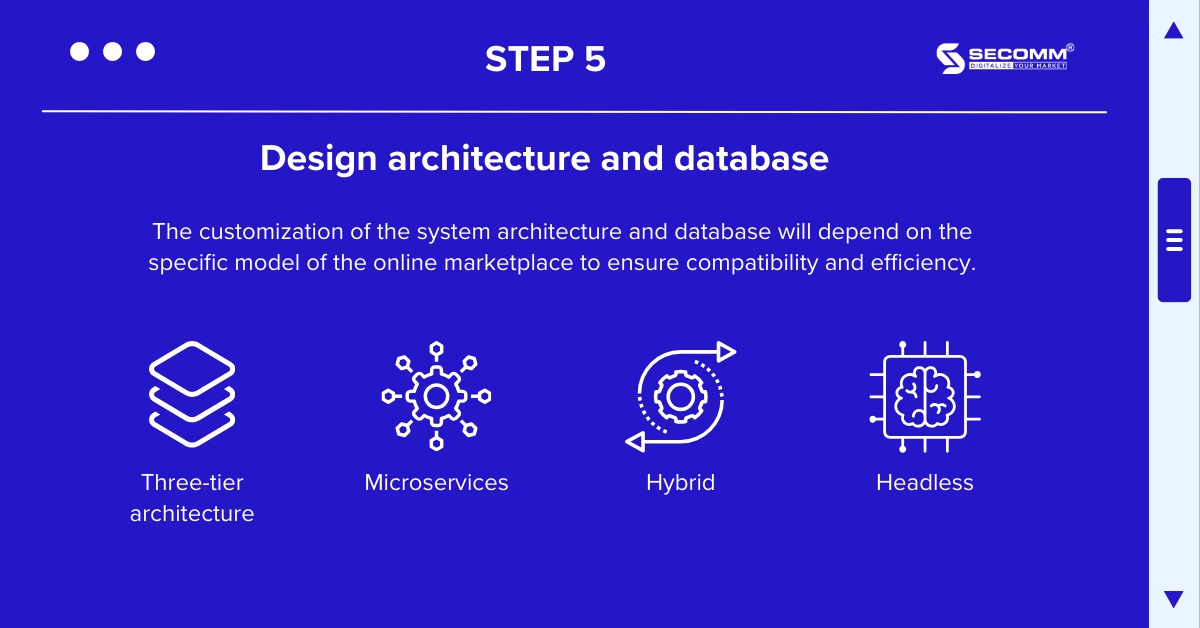
Another equally important next step is to establish security and data management. Businesses need to define security measures to protect user data, payment information, and other critical data. Ensure that data is encrypted and transmitted securely via an SSL connection. Implement data protection measures such as access control, user authentication, data encryption, and data integrity checks.
Depending on the operating model of the marketplace, system and database design may need to be customized to be suitable and effective.
Develop functional system
After completing the essential functional systems, businesses should continue to develop specific features for their online marketplace, such as:
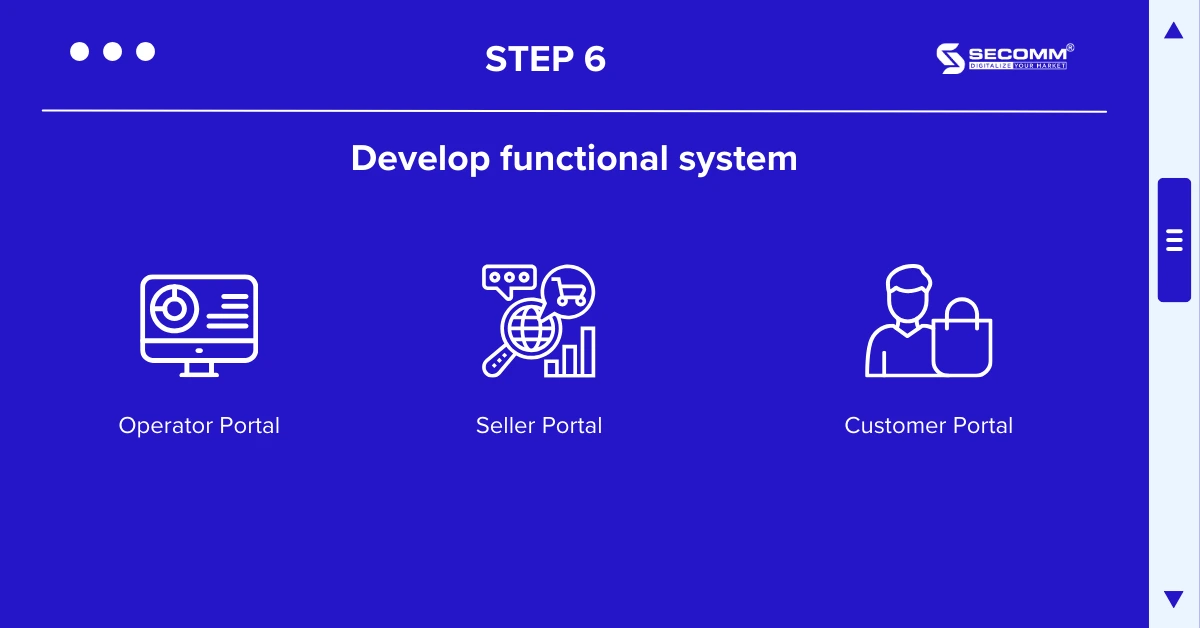
Operator Portal: Full control of platform information, including seller management, product categorization, customer segments, supply chain management, ad content control, and more.
- User Groups and Administrative Levels: Categorizing users into various groups and granting different permissions to different users.
- Supply Chain Management: Warehouse and inventory management, assisting sellers in order fulfilment by routing orders, and more.
- Marketing Tools: A range of tools support marketing strategies, including search advertising, live streaming, gamification, and more.
- User Experience Personalization: The ability to display personalized products such as favorites, similar products, past purchases, and facilitate order communication with sellers.
- Analysis and Reporting: Analyzing and measuring the performance of the online marketplace to develop future business strategies.
- Integration with Other Systems: Seamless integration with external systems.
Seller Portal: Sellers self-manage their presence in the marketplace, including product listings, orders, and activities, etc
- Category and Product Management: Add, edit, delete product categories and products within categories; manage product attributes and variations (color, size, etc.); manage inventory quantities.
- Content Management: Create and optimize content, including text, images, videos, banners, widgets, templates, branding, messaging, and more.
- Order Management: View order lists and their statuses. Track shipments and deliveries. Update order status (processing, delivered, canceled, etc.).
- Advertising and Promotions: Display advertisements, banners, promotions on the website. Manage discount codes, promotional programs, and more.
- Payment Integration and Transaction Processing: Integrate payment gateways for online payment processing. Confirm and track payment transactions.
Customer Portal: Allow users to perform and manage basic information such as phone numbers, email addresses, delivery addresses, adjust payment options, request quotes, manage shopping lists, check order status, etc.
- Account Registration and Management: Register new user accounts (buyers and sellers), log in, and manage personal information, delivery addresses, payment methods, etc.
- Product Search and Viewing: Search for products by keywords, categories, brands, etc. View detailed product information, including images, descriptions, prices, ratings, and more.
- Cart and Checkout: Add products to the cart; edit product quantities, remove products from the cart, calculate and display the total amount in the cart; select payment methods; enter payment information and delivery address; confirm and place orders.
- Reviews and Comments: Rate and write reviews about products; view reviews and comments from other users.
- Customer Support: Provide contact channels for customers to ask questions, request assistance; offer real-time support through direct chat, email, phone, and more.
Q/C Testing
Whether you’re building an in-house team or enlisting the services of external development agencies, the quality testing phase of a project holds immense significance. This critical stage is where businesses validate that the system functions as expected and complies with the initial requirements.
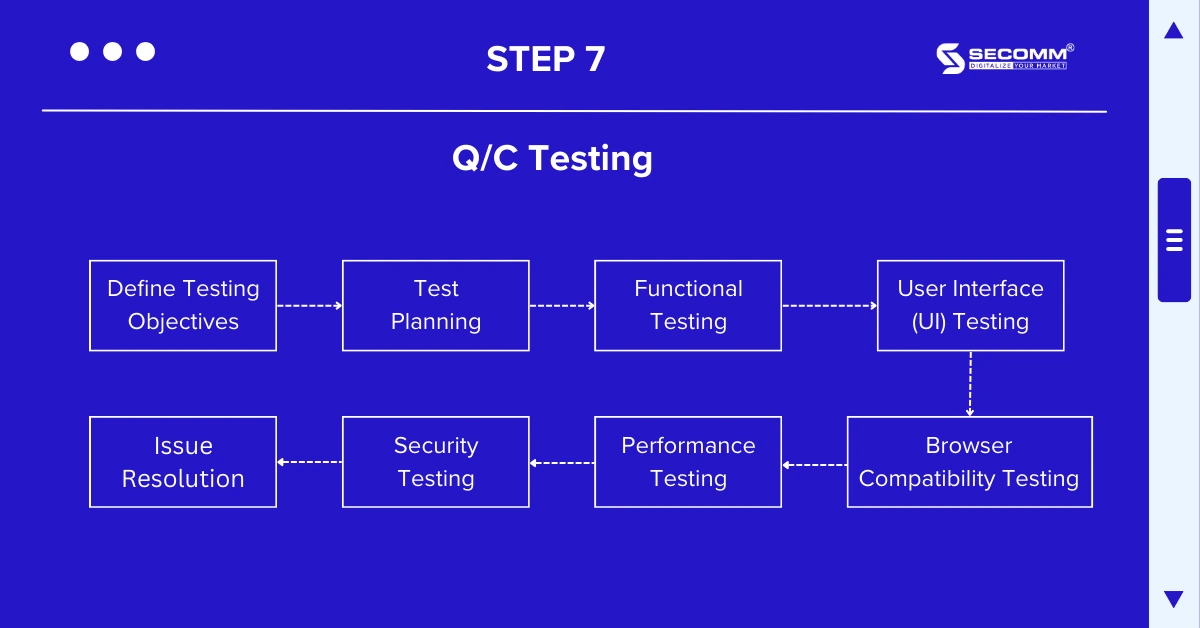
Step 1: Define Testing Objectives
Identify the objectives and scope of the testing process. Set specific criteria and requirements that the business wants to verify to ensure the platform operates accurately and meets the specified requirements.
Step 2: Test Planning
Determine a detailed test plan, including test cases, scenarios, and data. Identify the resources, timeline, and scope of the testing phases.
Step 3: Functional Testing
Verify all website functions to ensure they are working correctly as expected. If the business’s website supports multiple languages and regions, it should also verify compatibility and display of each feature in different geographical areas.
Step 4: User Interface (UI) Testing
Ensure the interface is designed beautifully and user-friendly. Evaluate information display, buttons, links, and user experience on various devices, including mobile and tablet.
Step 5: Browser Compatibility Testing
Test the website on popular browsers such as Google Chrome, Mozilla Firefox, Safari, and Microsoft Edge to ensure compatibility and correct display on all platforms.
Step 6: Performance Testing
Assess website performance, including page load speed, concurrent processing, and scalability. Ensure the website operates smoothly and can handle the expected traffic load.
Step 7: Security Testing
Examine the platform’s security by testing intrusion potential, data security, and user authentication. Verify security methods such as SSL, data encryption, and security certificates.
Step 8: Issue Resolution
Document and track any errors and issues that arise during testing. Identify the root causes, rectify the errors, and retest until the testing process is approved, and the entire system is ready for go-live and operation.
Golive
Go-live is the final stage in the process of starting an eCommerce marketplace when the system is officially launched and becomes operational.
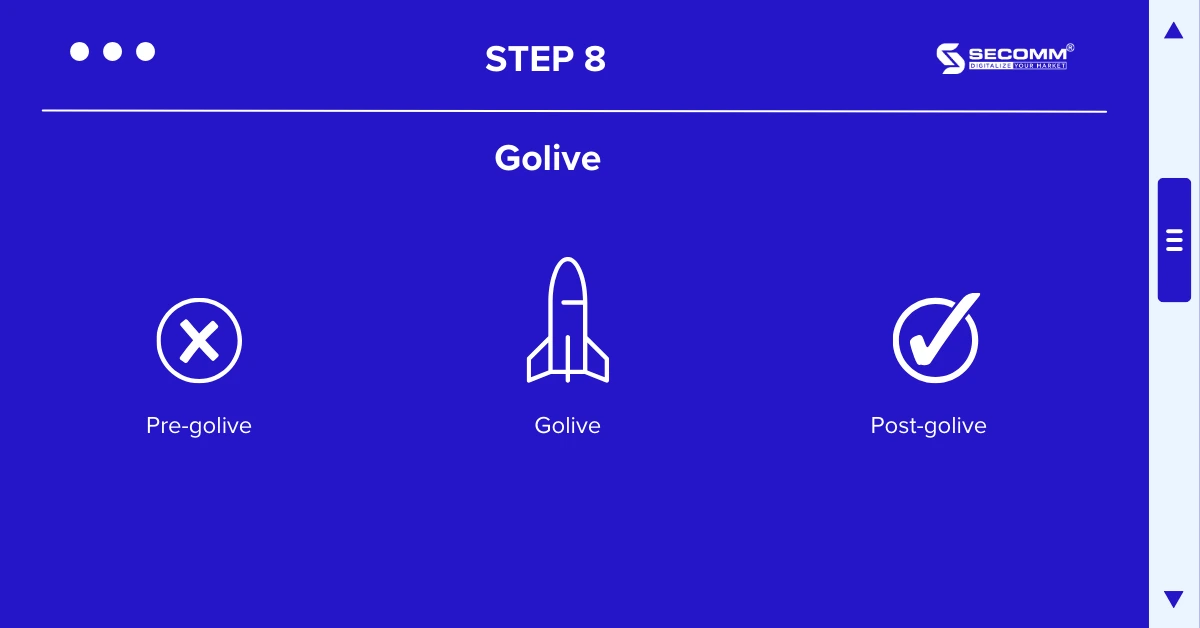
To ensure a successful go-live process, businesses should prepare a checklist known as the Go-live checklist. This is a list of tasks that the deployment team needs to perform to prepare the system for go-live. The checklist includes task items, responsible individuals, status, and how they affect the system.
Pre-golive
- Prepare the Production environment and configure the domain.
- Ensure that the entire source code of the go-live preparation system is the final version of the quality testing process.
- Data migration: Execute the data migration process from the old system to the new system using the established method. Then, verify the data after migration to ensure the integrity and accuracy of data in the new system.
- Content update: Review website content, including text, images, videos, and other materials. Ensure that the content is displayed accurately without spelling or formatting error
- Backup all website data to ensure safety and data recovery capabilities when needed
- Identify and prepare customer guide and support materials
Finally Golive
- Implement the transition process from the development environment to the actual production environment.
- Monitor website traffic and activities immediately after golive.
- Ensure system stability and performance throughout the go-live process.
Post-golive
- Monitor and analyze user feedback
- Address issues and problems that arise post-go-live
- Ensure the system’s stability and performance over an extended period after golive
- Ensure compatibility of integrations with external systems
- Train employees and managers to use and maintain the system effectively
Continuously update & develop features
Regularly updating the system is important for businesses to adapt to the ever-changing customer needs, improve customer experience, stay abreast of emerging technology trends, enhance competitiveness, and more. Moreover, continuous bug fixes and security patch updates enhance the brand’s credibility, safeguard users from internet threats, and so on.
Moreover, the development of new features empowers businesses to capitalize on market opportunities and scale their operations more professionally. For example, after a period of operation and accumulating a specific customer base, businesses can introduce features tailored to loyal customers.
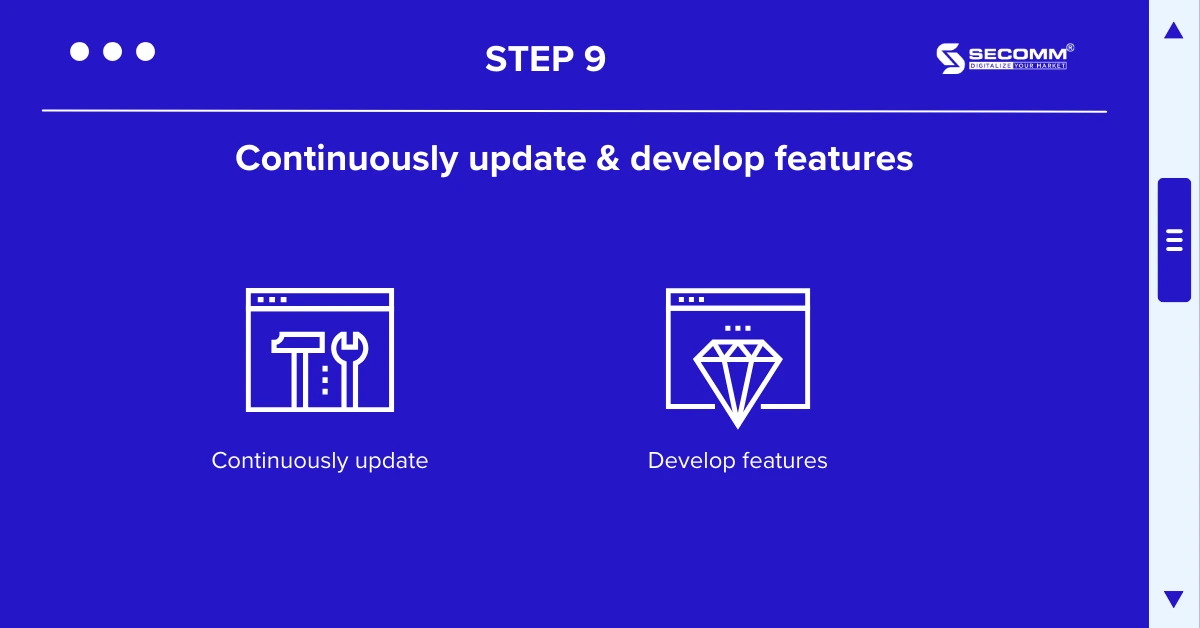
Running a thriving marketplace involves a multitude of factors, such as the business model, financial capabilities, and building strategic partnerships with diverse brands. However, a well-functioning eCommerce platform with high performance plays a vital role in the path to success. The journey of marketplace development is anything but straightforward. It requires substantial investments of time and resources for thorough research and the seamless alignment of solutions with each development phase.
Recognizing the challenges and hurdles that businesses face during the process of starting their eCommerce marketplace, feel free to contact or call SECOMM directly at (02871089908) for a free consultation.
 2
2

 13,285
13,285

 0
0

 1
1
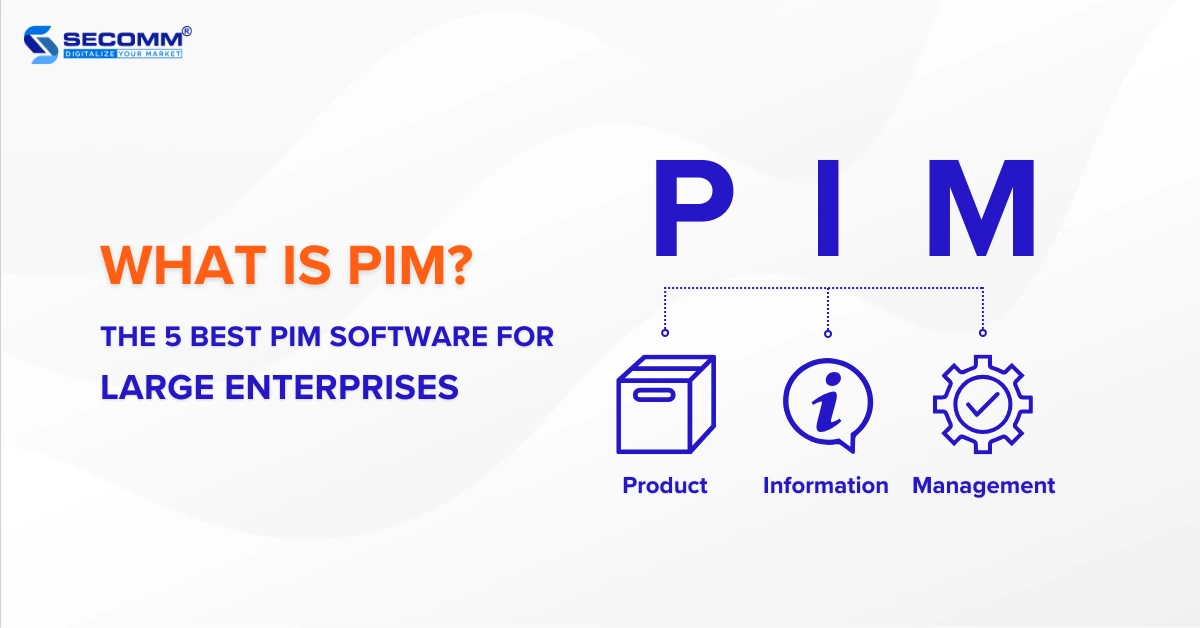
WHAT IS PIM? THE 5 BEST PIM SOFTWARE FOR LARGE ENTERPRISES
PIM is an essential management system that helps synchronize product information across various systems like ERP, POS, CRM, SCM, etc., and a brand’s global sales channels. It’s considered the powerful ‘right hand’ of large corporations for comprehensive information management.
What is PIM?
PIM or Product Information Management is a system or platform used to collect, organize and manage detailed product information for businesses. PIM includes information such as product descriptions, images, prices, product attributes, customer ratings and reviews.
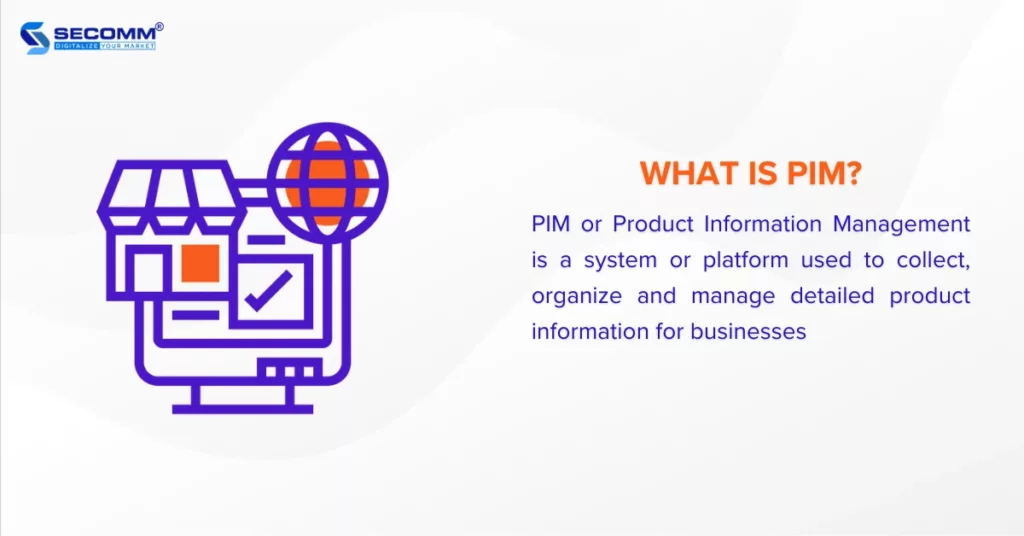
PIM systems often integrate data from ERP, CRM, POS, and other business management systems related to a company’s products. Once integrated, shared data.
Related article: What is POS? Why your eCommerce business need it?
Benefits of using PIM software
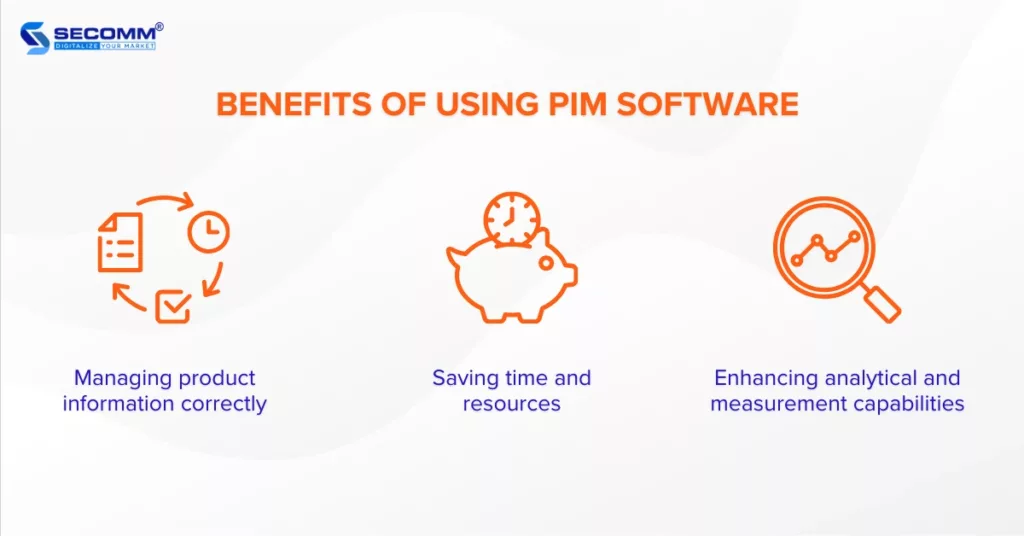
Managing product information correctly
PIM software allows businesses to accurately and consistently collect, organize, and manage product information. This ensures that product information is updated correctly and comprehensively across all sales channels, from eCommerce websites, mobile apps, and social media to marketplaces like Shopee, Lazada, Tiki, Sendo, Amazon, and more. When accurate product information is provided to customers, businesses can enhance trust and reputation for their brand.
Saving time and resources
A PIM system automates the processes of data entry, processing, and product information distribution. This saves time and effort for employees while reducing the risk of errors compared to manual data entry. With more efficient workflows in place, PIM allows employees to focus on other, more critical tasks.
Enhancing analytical and measurement capabilities
PIM software enables efficient analysis and measurement of product information. By monitoring, evaluation, and data analysis of product details, businesses can gain insights into the performance of marketing campaigns, consumer trends, customer behaviors, and more. Therefore, this empowers them to make more informed and effective business decisions for the future.
Top 5 PIM software for Vietnamese businesses
Akeneo
Akeneo is a widely embraced PIM platform known for its broad range of services, including open-source PIM and cloud-based PIM systems, etc.
Currently, Akeneo offers three primary PIM solution packages:
- Community Edition: Free of charge – Designed for small and medium-sized enterprises looking to efficiently manage and distribute product information at a minimal cost.
- Growth Edition: Starting at $25,000 per year – Tailored for mid-sized companies aiming to unlock the potential of product information management.
- Enterprise Edition: Pricing upon request – Catered to large corporations in need of a specialized PIM system.
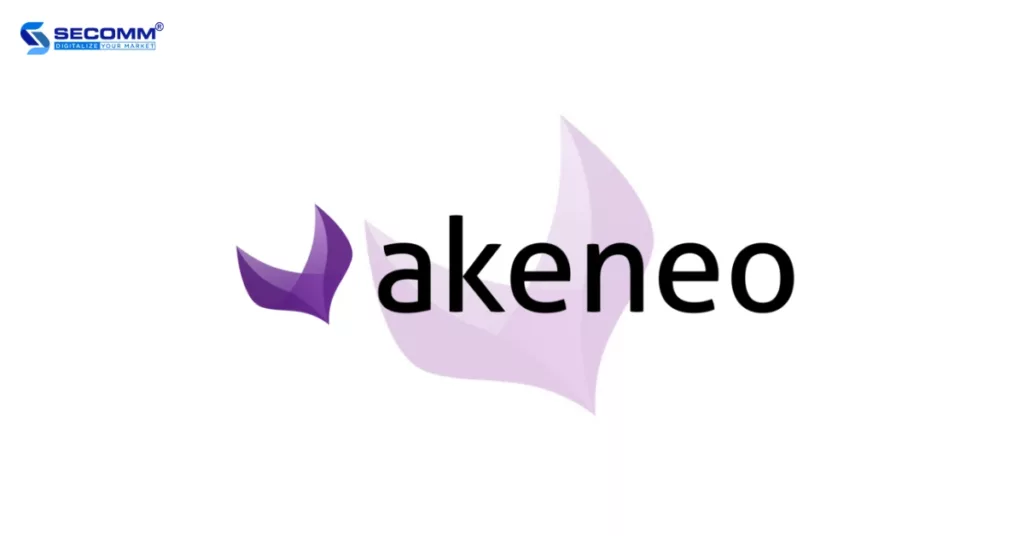
Pros:
- Effective product information management: Akeneo enables businesses to easily manage product information, from data input to classification and organization, creating a precise and consistent source of product data.
- High integration: Akeneo seamlessly integrates with other systems such as ERP, CRM, POS, and eCommerce platforms (Magento, Shopify, WooCommerce, etc).
- Scalability: Akeneo provides APIs and an open development framework, allowing businesses to expand and customize the PIM platform based on their specific needs.
Cons:
- High costs: The cost of using Akeneo is relatively high compared to other PIM systems.
- Complexity: Akeneo has some highly complex features that require time and expertise to effectively implement. Moreover, training employees and managing the Akeneo PIM system may demand a certain investment.
- Customer support: Some users find that Akeneo’s customer support can only address general knowledge and may not be able to resolve technical issues or address industry-specific concerns for each brand.
1WorldSync
1WorldSync is a company that specializes in providing solutions for managing product information and synchronizing product data for large enterprises. Their platform is built on a global network for product data synchronization, connecting suppliers, retailers, distributors, and various stakeholders worldwide.
1WorldSync currently offers four customizable solutions tailored to the needs of large enterprises:
- Base: Geared towards businesses looking for quick and efficient global product content management.
- Plus: Leverages product content to boost marketing strategies and sales initiatives, and ensures compliance with transparent information policies.
- Pro: Delivers a visual data solution along with premium support services for setting up and managing high-quality product portfolios.
- Premier: Enhances brand visibility in the eCommerce market through carefully curated. high-quality content.
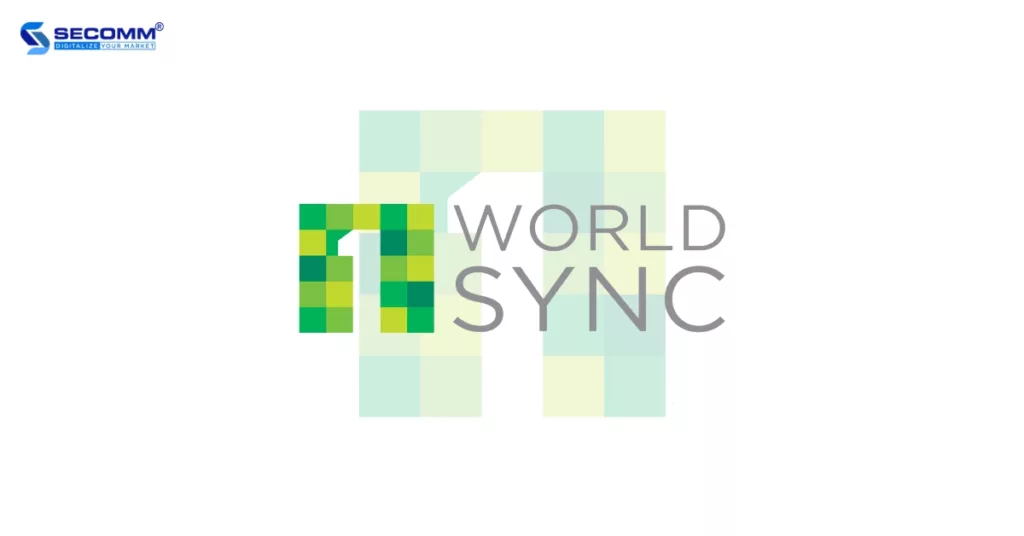
Pros:
- Comprehensive product information management: 1WorldSync offers a robust platform for managing product information, including images, descriptions, technical attributes, barcodes, and other details. This helps businesses efficiently maintain and update product information.
- Global product data synchronization: 1WorldSync establishes a global network for product data synchronization, enabling businesses to connect and share product information with partners and customers worldwide. This network ensures the consistency of product information across various sales channels.
- Enhancing customer experience: By providing detailed, accurate, and consistent product information across sales channels, 1WorldSync improves the shopping experience and product evaluations for customers.
Cons:
- High costs: Since 1WorldSync is a PIM system designed for each business, the cost of using 1WorldSync can be relatively high
- Complex regulations and standards: Businesses must ensure that managing and sharing product information on 1WorldSync complies with legal regulations and standards, such as privacy rights, data protection, and industry standards.
- Complex and user-unfiendly: The interface and workflow on 1WorldSync can be relatively complex and challenging to understand for new users. It requires time and resources to train employees and adapt to the new system.
Sales Layer
Sales Layer is a PIM platform tailored for efficient product data management across medium and large businesses on a global scale. This PIM solution is designed with customization in mind, and its pricing varies depending on specific business needs, with a starting cost of $1,000 per month.
Sales Layer currently offers several solution packages, including:
- Premium: An ideal choice for businesses seeking a swift and sustainable PIM system implementation.
- Enterprise: A comprehensive solution providing all the essential features for elevating a medium-sized business into a global enterprise.
- Enterprise Plus: A specialized PIM solution adept at effortlessly handling intricate data challenges within businesses.
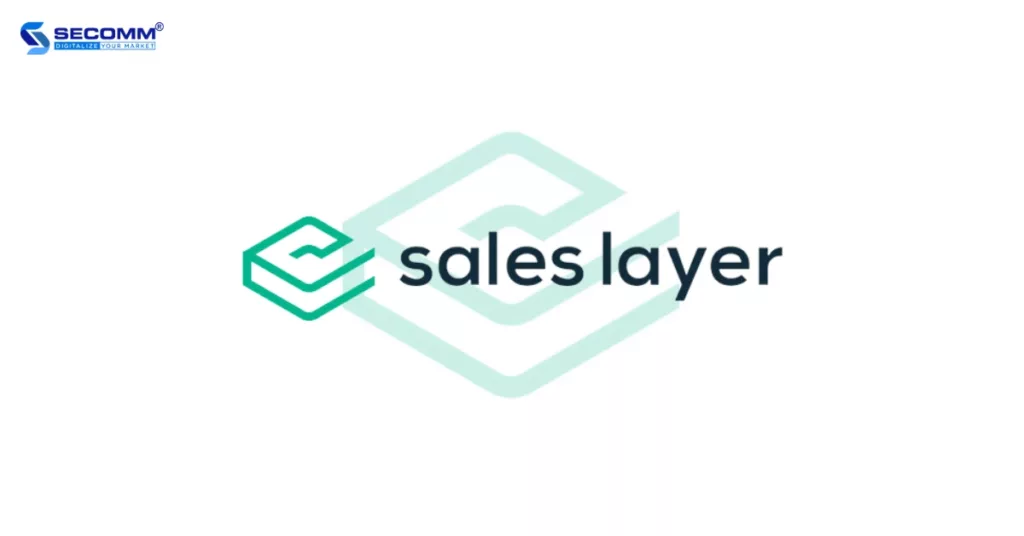
Pros:
- Centralized product information management: The Sales Layer provides a centralized platform for managing product information, ensuring data consistency.
- Workflow and process control: Sales Layer offers tools for managing workflows and work processes to organize and manage product information updates and approvals, guaranteeing data quality.
- Rapid information retrieval and search: The Sales Layer incorporates algorithms that enable swift retrieval and searching of information to meet specific user demands.
Cons:
- Complex implementation process: One of the drawbacks of the Sales Layer is its relatively intricate deployment and initial configuration, especially for businesses with existing and large-scale systems.
- Specialized training requirements: Sales Layer may necessitate a certain amount of training time to become familiar with the interface and functionalities of this PIM system. Training employees and ensuring proficiency in using the Sales Layer can be time-consuming and resource-intensive.
- Limited technical support: In the event of issues or technical problems, support from the Sales Layer may not fully meet expectations or provide a quick resolution.
Salsify
Salsify is a cloud-based product information management (PIM) platform that offers businesses a solution to efficiently manage and distribute product information across various sales channels. Salsify functions as a software a service (SaaS) application, with usage costs tailored to each business, typically ranging from $2,000 to $5,000 per month.
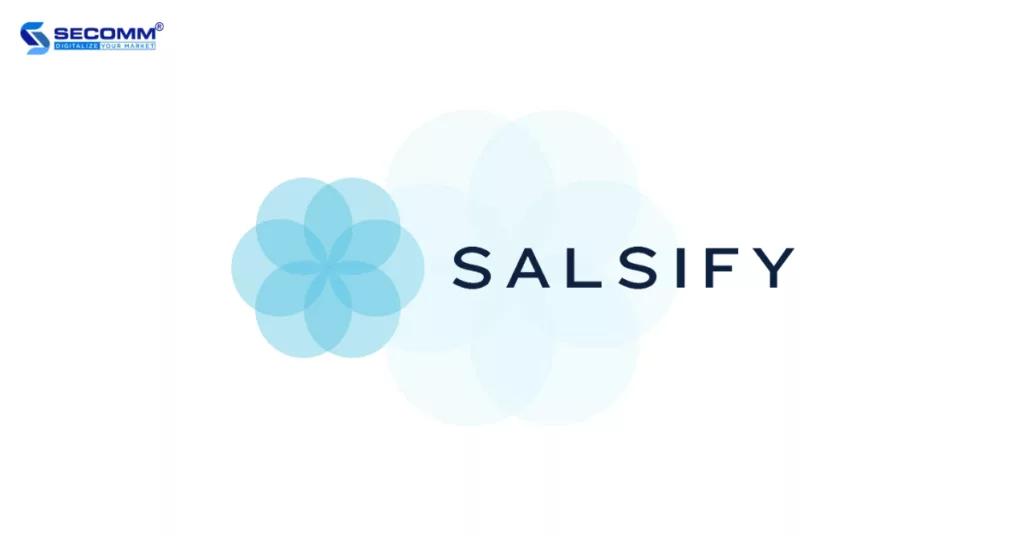
Pros:
- Comprehensive workflow management: Salsify offers the capacity to manage workflow procedures, permitting the adaptation, monitoring, and endorsement of alterations in product data, guaranteeing accuracy and proficient control of work processes.
- Multilingual and multiregional compatibility: Salsify backs the management of product data in several languages and geographic regions, facilitating effective expansion into international markets.
- Seamless integration with various systems: Salsify permits integration with diverse business management systems and tools like ERP, CRM, SCM, POS, and more, streamlining business processes.
Cons:
- High deployment and maintenance costs: The initial deployment and ongoing maintenance expenses for a PIM system on Salsify can be relatively high compared to other PIM systems. This might impact a business’s long-term financial resources.
- Initial data input challenges: Importing initial product data and information into Salsify can be challenging and time-consuming, particularly when dealing with a large volume of product details from various sources. This process requires meticulous attention to ensure accuracy.
- Complexity in usage: Salsify offers a wide array of features and product management capabilities, but it also comes with a corresponding level of of complexity. Learning how to use Salsify effectively may necessitate time spent delving into guides and documentation.
inRiver
inRiver is a PIM system developed to efficiently manage and distribute product information across various sales channels and different eCommerce platforms such as Adobe Commerce, Shopify, WooCommerce, BigCommerce, etc. The cost of using inRiver is approximately $1,000 per month.
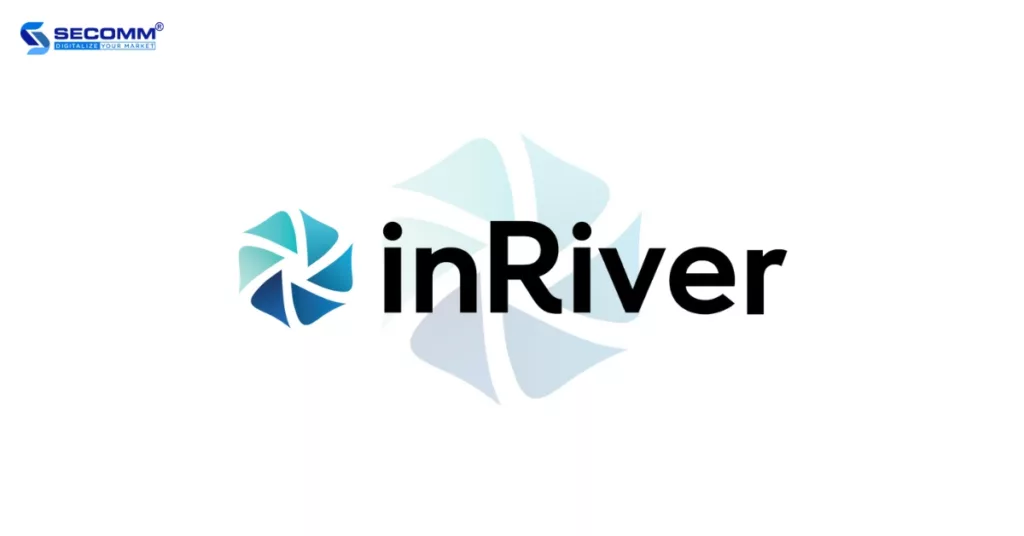
Pros:
- Product variations management: inRiver supports the management of information regarding product variations, including color options, sizes, styles, and other details. inRiver enables comprehensive and diverse product information display, effectively meeting customer needs.
- Integration with DAM support: inRiver supports integration with Digital Asset Management (DAM) systems, allowing the management and linkage of digital assets such as images, videos, and product-related documents. This enhances the management and distribution of multimedia content related to products.
- High scalability: inRiver is designed to expand its capabilities according to a business’s specific requirements, catering to diverse business needs and objectives.
Cons:
- Complex user interface: Some users may find it challenging to navigate River’s user interface due to its relatively complex nature, requiring training to become familiar with and use effectively.
- Resource-intensive PIM system implementation: Implementing and maintaining inRiver demands a highly skilled workforce.
- Complex customization capabilities: Customizing and integrating inRiver with existing systems and workflows can be intricate and require technical expertise. This can result in difficulties and increased costs associated with system integration and customization.
Above is a summary of the top 5 PIM software options tailored for large-scale businesses, each with its own unique set of advantages and disadvantages. Depending on the requirements for PIM system development and budget considerations, companies can explore and select the most appropriate PIM solution.
Get in touch with SECOMM for more information!
 2
2

 15,008
15,008

 0
0

 1
1
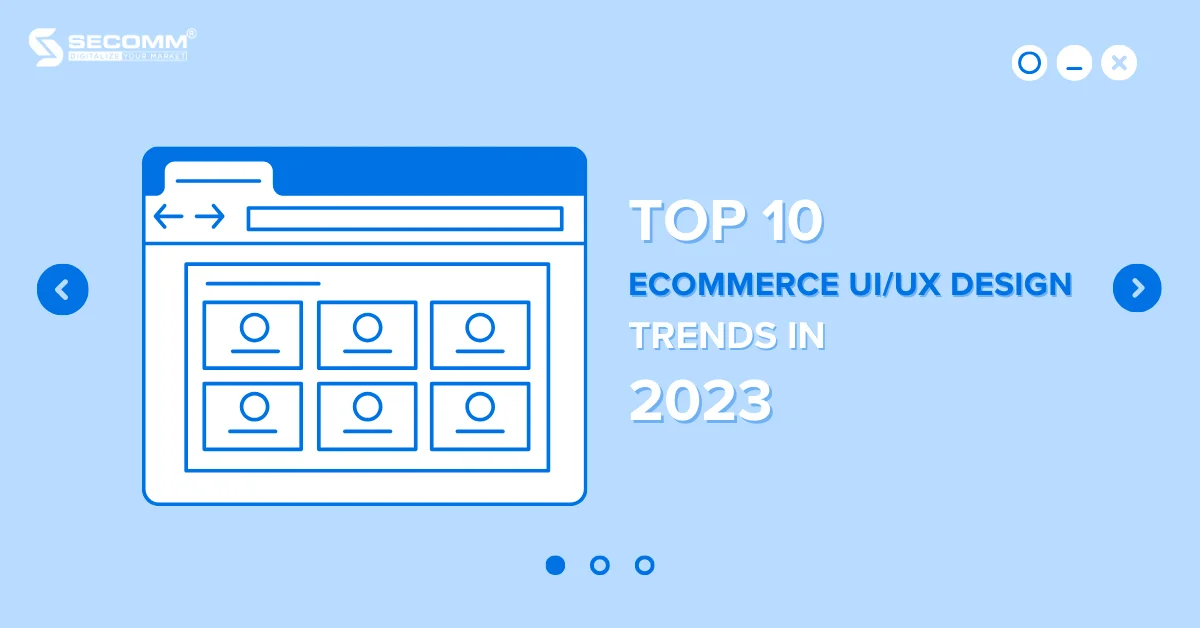
TOP 10 ECOMMERCE UI/UX DESIGN TRENDS IN 2024 AND BEYOND
As new UI/UX design trends emerge, designers must stay up-to-date to create the most engaging and user-friendly interfaces for businesses. UI/UX design plays a vital role in crafting excellent user experiences and improving online business efficiency.
In this article, SECOMM will discuss the latest UI/UX design trends for the year 2024 and beyond
What is UI/UX design?
User Interface (UI) and User Experience (UX) are often regarded as two interrelated aspects when it comes to designing interfaces for any online product or service, especially in the case of eCommerce websites.
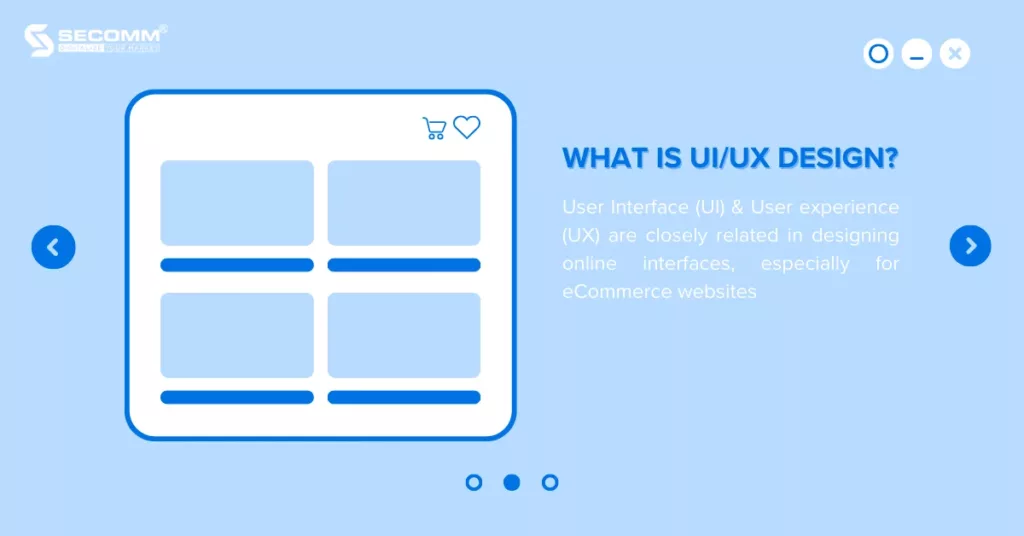
UI design encompasses the creation of various elements like call-to-action buttons, navigation bars, charts, and images, all based on choices of colors, layouts, fonts, and more, to craft an intuitive, appealing, and visually engaging user interface. In design, UI serves as a means to convey messages from businesses and brands to their users.
On the other hand, User Experience (UX) involves the process of shaping the overall experience for users during their interaction with a product or service. This encompasses meeting user requirements for ease of use and functionality, strategizing and structuring information, designing interaction workflows, and assessing effectiveness through research on user habits and behaviors within eCommerce websites.
The role of UI/UX design in eCommerce
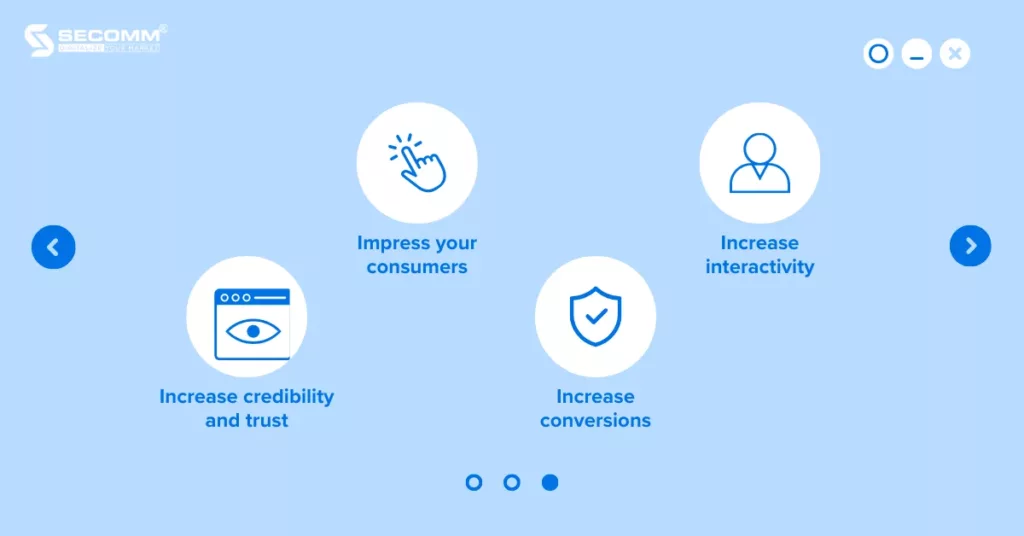
Impress your consumers
Expertly crafted UI/UX design can leave a lasting impact on users when they visit your eCommerce website. In the highly competitive eCommerce landscape, a remarkable UI/UX design can set your business apart and create a distinctive identity among market rivals.
Increase interactivity
Effective UI/UX design can help you enhance your interaction capabilities with consumers. For example, creating social media sharing buttons, user reviews, and intuitive search tools can streamline the customer’s journey to products and more.
Increase credibility and trust
A professional UI/UX design helps you establish trust with customers and cultivate a positive brand image. By offering clear security information, SSL certificates, and secure payment procedures, you can instill confidence in customers while mitigating the risks of personal data breaches and financial fraud.
Increase conversions
Starting with an investment in UI/UX design helps convert potential customers into actual customers. Through data analysis and user feedback, businesses can gain a deeper understanding of customer behavior and make interface adjustments to improve the user experience and overall business performance.
Related article: The 10 biggest eCommerce trends set to dominate in 2023
Top 10 UI/UX design trends
Dark Mode
Although the Dark Mode design trend isn’t new to website developers, it continues to be popular in 2023. The option to switch between light and dark modes offers users more flexibility when visiting an eCommerce website. Dark Mode enhances the browsing experience, especially for users who spend extended hours in front of screens. Furthermore, it can contribute to saving battery life on mobile devices or screens equipped with OLED displays.
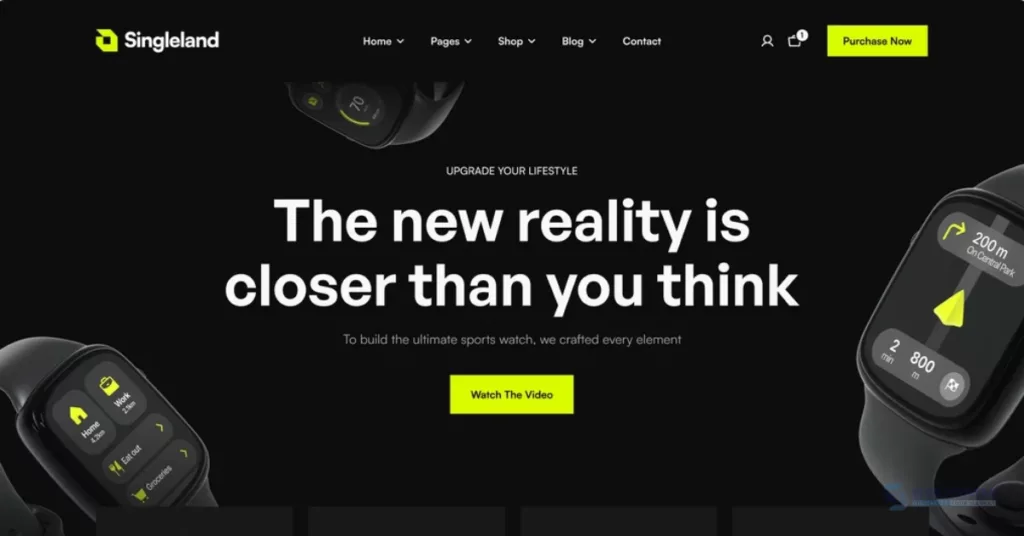
3D Design
The 3D design trend is gaining more popularity in UI/UX design. 3D elements bring depth and realism to website interfaces, making them visually appealing and improving user interaction. UI/UX designers frequently utilize 3D elements for website components like CTA buttons, icons, banners, and backgrounds, or employ 3D animations for feedback and transition effects, creating a more engaging user experience that fosters a visual connection with users.
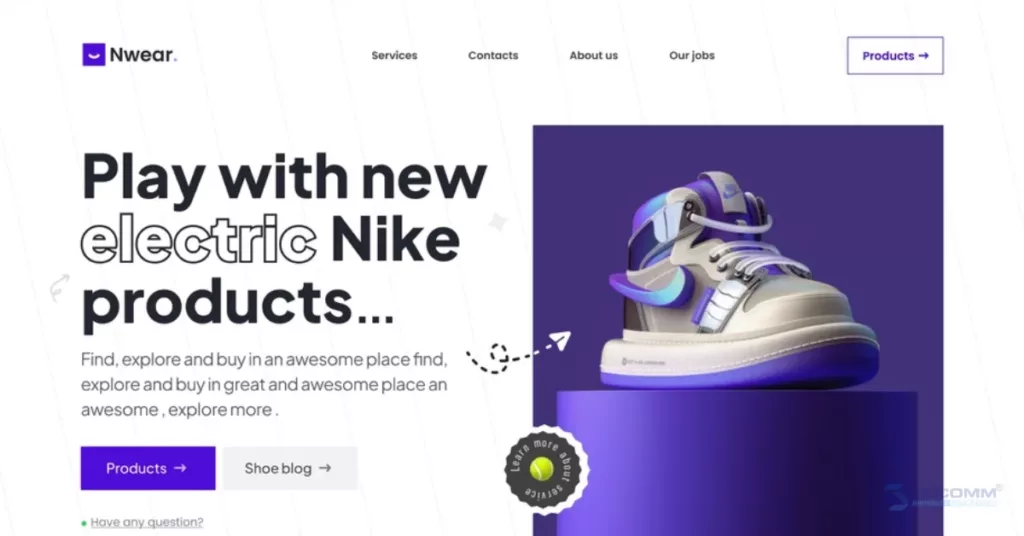
Neomorphism
Neumorphism is a design trend that blends aspects of both skeuomorphism and flat design. It creates a 3D effect by using shadow and highlight effects to achieve a sleek, modern look for websites. However, UI/UX designers must be cautious not to overuse neumorphism, as it can result in a cluttered, confusing interface or create effects contrary to what a business intends to convey.

Modern Minimalism
Modern Minimalism represents a UI/UX design trend that centers on crafting straightforward, user-friendly interfaces by removing extraneous elements and highlighting vital content. This style combines simplicity with modernity, providing users with a refined and user-friendly experience. The main challenge in implementing Modern Minimalism is finding the balance between simplicity and aesthetics, ensuring that the design remains both visually appealing and easy for users to navigate.
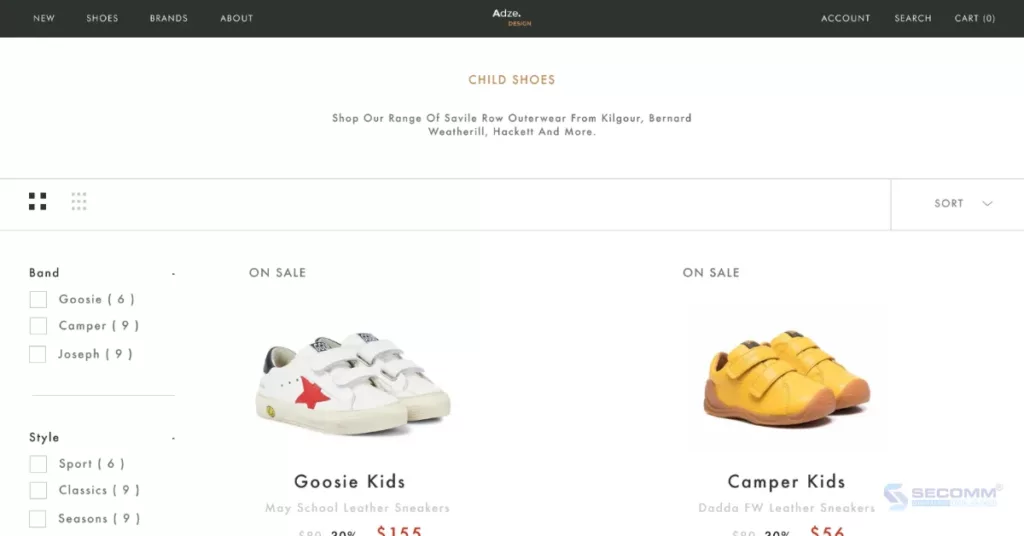
Dynamic Gradient
Dynamic Gradient is a design trend that produces color gradient effects that adapt according to user interactions or the time of day. It can offer users a more personalized and sophisticated experience. However, when implementing Dynamic Gradient in UI/UX design, it’s crucial for designers to strike a balance so that color intensity doesn’t become overpowering and doesn’t compromise readability.

Voice Interface
Voice Interface represents a UI/UX design trend where users can interact with an eCommerce website system using voice commands rather than traditional input methods such as keyboards, mice, or touchscreens. Voice Interface employs voice recognition technology to comprehend and respond to user commands, requests, or queries. In UI/UX design, Voice Interface introduces a fresh and user-friendly mode of interaction, thereby unlocking a plethora of opportunities for tailoring the user experience and delivering personalized services.

Micro-interactions
Micro-interactions are a design style that incorporates small elements, including subtle animations, specific sound effects, image responses to user actions or voice commands, and more, to create an engaging experience and enhance interaction on a website. Micro-interactions can also help guide users through the website interface effortlessly. When applying Micro-interactions, UI/UX designers need to ensure they won’t distract or annoy users.

Augmented reality (AR)
Augmented reality (AR) is becoming increasingly popular in the UI/UX design community, especially in eCommerce websites related to technology, interior design, cosmetics, gaming, and more. AR allows users to interact with products/services as if they were in the real world, bridging the gap between online and offline shopping. However, due to its advanced technology, AR can sometimes pose challenges for older or less tech-savvy customers. Therefore, when designing the UI/UX, businesses must ensure that AR elements are intuitive and user-friendly.

Asymmetric Layouts
Asymmetric Layouts is a UI/UX design trend where elements and components aren’t arranged in the traditional symmetrical structure. Instead, elements are placed asymmetrically and inconsistently, creating a sense of balance and noticeable uniqueness in the design.
The strength of Asymmetric Layouts lies in their ability to capture users’ attention and create a distinctive experience through images and emphasis on essential content. However, when using Asymmetric Layouts, it’s essential to consider ensuring that the eCommerce website interface remains user-friendly, easy to navigate and maintains its aesthetic appeal.

Data Visualization
Data Visualization is a design trend that involves presenting complex data in a clear and visual manner using graphs, charts, and images. In UI/UX design, Data Visualization is used to transform intricate information into engaging visuals, simplifying data comprehension and interaction for users.
Therefore, when incorporating Data Visualization into UI/UX design, it’s essential to carefully choose appropriate data representation methods, utilize colors and graphical elements effectively, and ensure information is conveyed clearly and attractively.
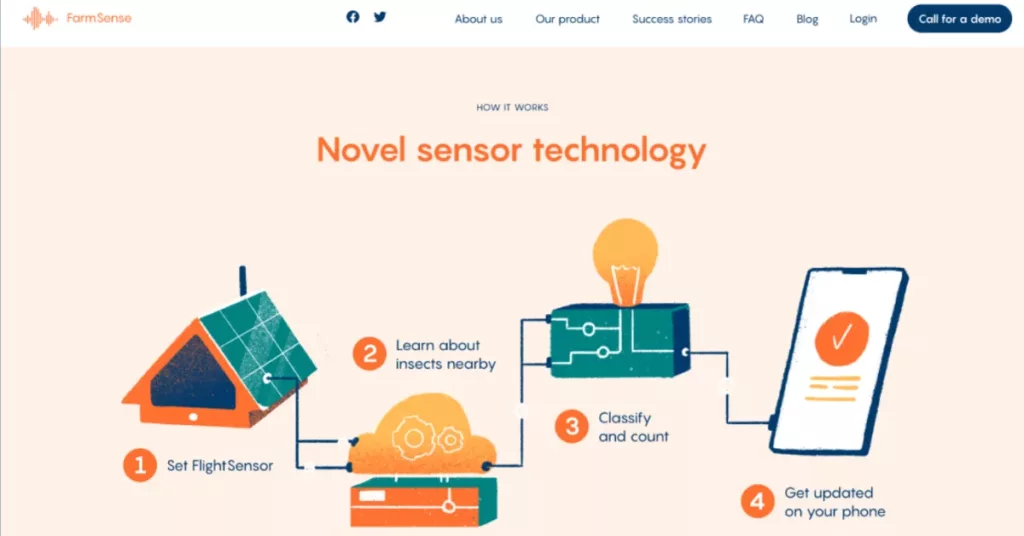
Those are the top 10 UI/UX design trends for eCommerce website in 2023. We hope that the valuable information in this blog will help you choose your best-fit style that conveys your brand’s essence.
Contact us now or call directly to the SECOMM hotline at (028) 7108 9908 for eCommerce consulting and implementation.
 2
2

 10,167
10,167

 0
0

 1
1
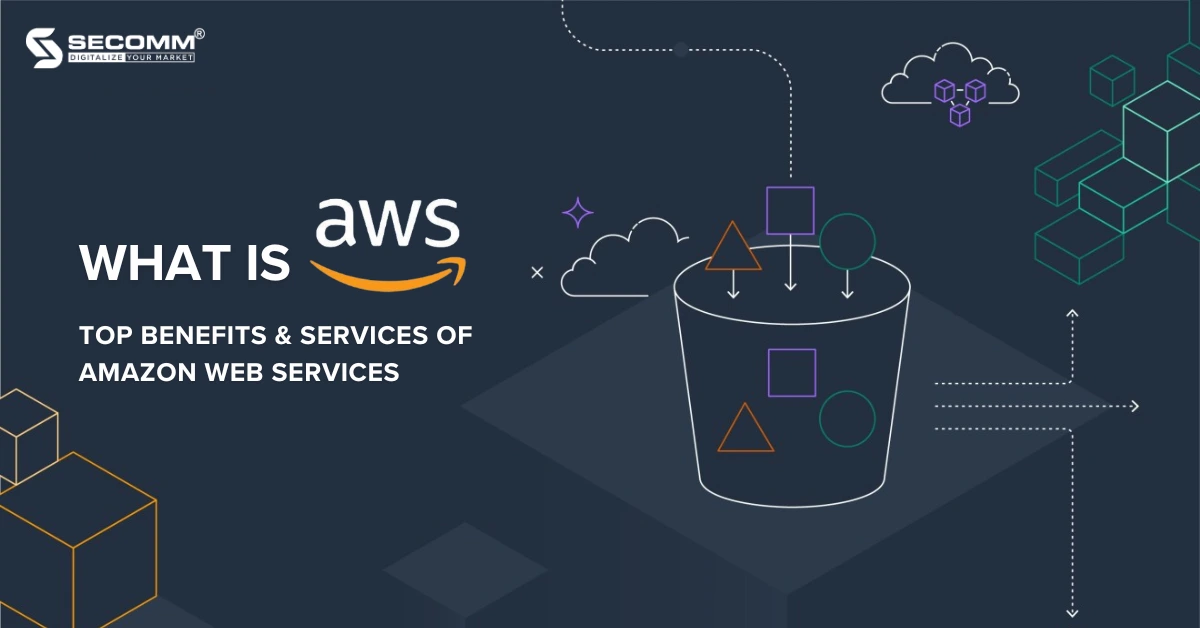
WHAT IS AWS? TOP BENEFITS & SERVICES OF AMAZON WEB SERVICES
In the cloud infrastructure service market, there are many large enterprises, but the first name that comes to mind for large enterprises is AWS.
What is AWS?
AWS (Amazon Web Services) is a cloud solution developed by the “giant” Amazon, trusted by millions of businesses, including fast-growing startups, colossal corporations and top-tier government agencies.
At present, AWS provides a comprehensive array of over 200 fully-featured services, accessible from data centers scattered across the globe. These services encompass blockchain, cloud computing, DevOps, storage, backup, recovery, and more.
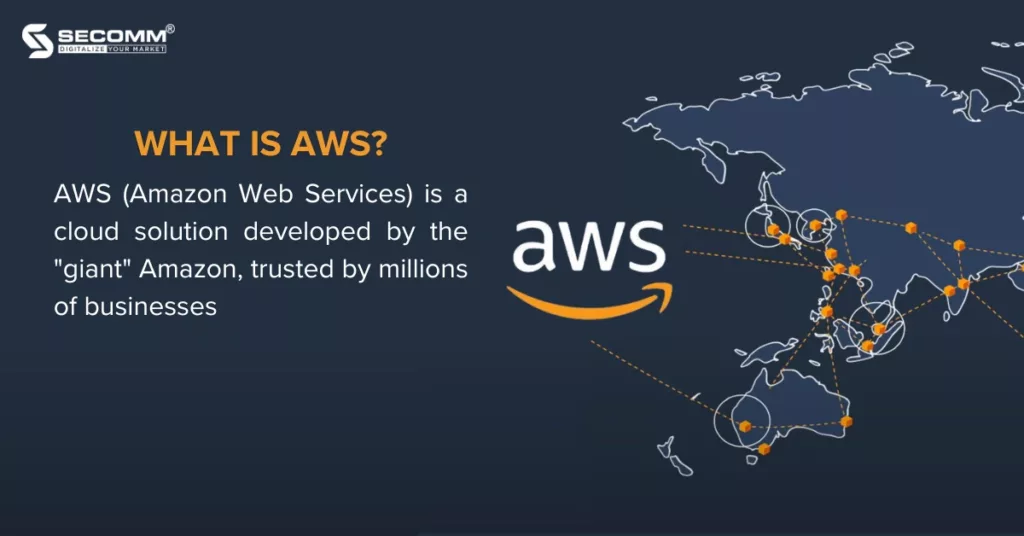
According to estimates published by the Synergy Research Group, Amazon’s market share surged to 32% during the initial quarter of 2023, maintaining its lead in the global cloud infrastructure market and surpassing all other tech titans, including Microsoft Azure, Google Cloud, Alibaba Cloud, IBM Cloud, Salesforce, Oracle, and Tencent Cloud
Benefits of deploying AWS
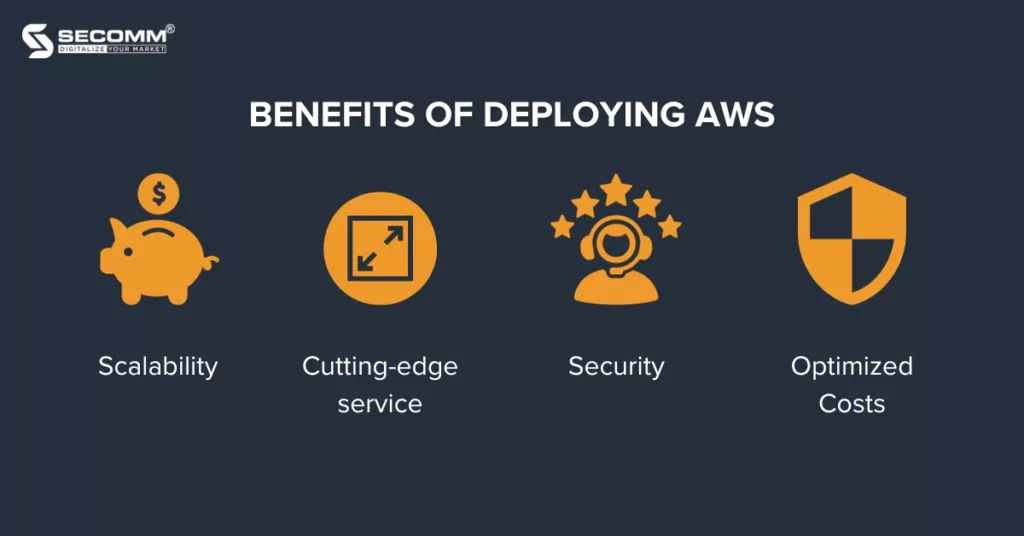
Scalability
AWS provides flexible scalability, enabling businesses to adjust resources according to their needs, whether it involves scaling up to handle high traffic or accommodating growth, all without the need for investments in physical infrastructure.
Moreover, AWS offers effortless integration with various services and technologies through APIs and management tools. This allows AWS to seamlessly integrate its applications with third-party services and incorporate new technologies into the existing system.
Cutting-edge service
With AWS, businesses can leverage cutting-edge technologies to experiment and innovate more swiftly. Since its inception, AWS has consistently introduced novel technologies that businesses can utilize for their digital transformation.
For example:
Back in 2014, AWS led the way in serverless computing with the introduction of AWS Lambda, enabling developers to execute code without the need to provision or manage servers.
In 2017, AWS launched Amazon SageMaker, a managed machine learning service that empowers both developers and data scientists, regardless of their prior experience.
Security
AWS employs an end-to-end approach to secure and fortify its infrastructure, encompassing physical systems, operational systems, and software. AWS adheres to international security standards, offering compliance checks for rules and regulations such as:
- ISO/IEC 27001: The foremost international standard for information security management.
- ISO 9001: A quality management system standard developed and issued by the International Organization for Standardization.
- PCI DSS: A mandatory information security standard for businesses involved in storing, transmitting, and processing payment card data, overseen by five international payment organizations, including Visa, MasterCard, American Express, Discover, and JCB.
Furthermore, AWS extends support to various other security standards and compliance certifications such as CSA, ISO 27017, ISO 27018, SOC 1, SOC 2, SOC 3, and more.
Optimized Costs
AWS employs a pay-as-you-go payment model, allowing businesses to use resources as needed without overspending their budgets.
Furthermore, AWS has earned the trust of many large enterprises due to its optimized costs. For instance, when businesses commit to using an AWS service or a bundle of services up to a specific monetary threshold (measured in USD per hour) over a 1 or 3-year duration, AWS offers more cost-effective solutions than the On-Demand pricing.
Furthermore, businesses can receive volume-based discounts based on the amount of services and resources they utilize within AWS. For example, in the case of Amazon S3, pricing is tiered, meaning the more a business uses, the less it pays per GB.
AWS key services
AWS offers a range of cloud services, below are some key AWS services:
Amazon EC2
Amazon EC2 (Amazon Elastic Compute Cloud) is a flexible cloud computing service that provides virtual servers for running applications. It allows businesses to rent and manage virtual machines to meet their specific needs.
Use cases for Amazon EC2:
- Running cloud-based and on-premises applications: Amazon EC2 provides secure, reliable, high-performance, and cost-effective computing infrastructure to meet business needs.
- Scaling for High-Performance Computing (HPC) applications: Access infrastructure and compute power on-demand to run HPC applications faster and cost-effectively.
- Developing Apple platforms: Build, test, and validate macOS workloads on-demand. Access environments in minutes, dynamically adjust capacity as needed, and benefit from AWS’s pay-as-you-go pricing model.
- Training and deploying Machine Learning (ML) applications: Amazon EC2 offers a collection of computing services, network connectivity (up to 400 Gbps), and specialized storage to optimize price performance for ML projects.

Amazon Simple Storage Service (S3)
Amazon Simple Storage Service (S3) is a cloud storage service that enables businesses to easily store and access data with durability and high reliability.
Use cases for Amazon S3:
- Building a data lake: Run big data analytics, artificial intelligence, machine learning, and high-performance computing applications to unlock deep insights from your data.
- Backup and recovery of critical data: Meet Recovery Time Objectives (RTOs), Recovery Point Objectives (RPOs), and compliance requirements with S3’s robust replication features.
- Cost-effective data storage: Transition data storage to Amazon S3 Glacier storage classes to minimize costs, eliminate operational complexity, and gain new deep insights.
- Running cloud-native applications: Build rapidly deployable, highly mobile, and web-based cloud-native applications that can automatically scale to meet high-demand configurations.

Amazon Aurora
Amazon Aurora is a high-performance managed relational database service built with compatibility for MySQL and PostgreSQL, outperforming other relational database management systems.
Use cases for Amazon Aurora:
- Modernize enterprise applications: Operate enterprise applications like Customer Relationship Management (CRM), Enterprise Resource Planning (ERP), supply chain, and payments with high availability and performance.
- Build SaaS applications: Support reliable, high-performance Software as a Service (SaaS) applications with the ability to scale version and storage capacity flexibly.
- Deploy globally distributed applications: Develop large-scale internet applications, such as mobile games, social networking apps, and online services, requiring scalability and recovery in multiple regions.
- Serverless technology applications: No need to manage capacity manually and only pay for the capacity used, with instant and detailed scalability to save up to 90% on costs.
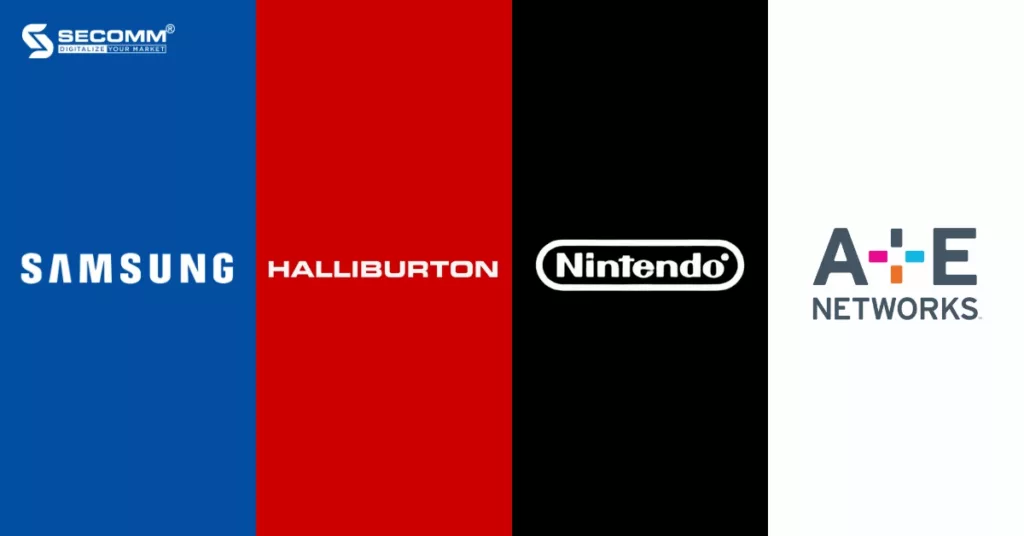
Amazon DynamoDB
DynamoDB is a NoSQL database designed to handle high scalability and low-latency response time applications. Amazon DynamoDB is fully managed, serverless, and designed to run high-performance applications at any scale.
Additionally, DynamoDB provides integrated security features, continuous backups, automatic multi-region replication, in-memory caching, and data loading and exporting tools.
Use cases for Amazon DynamoDB:
- Software application development: Build large-scale internet applications supporting super content user data and caching requirements with high synchronization and connectivity needs for millions of users and millions of requests per second.
- Create a media super data warehouse: Scale throughput and concurrency for media and entertainment workloads such as real-time live video streaming, and interactive content, while delivering lower latency with multi-region replication across AWS regions.
- Provide a seamless retail experience: Use design templates to deploy shopping carts, workflow tools, inventory tracking, and customer profiles. DynamoDB supports high-access events at a massive scale and can handle millions of requests per second.
- Scale gaming platforms: Focus on innovation without operational overhead. Build your gaming platform with player data, session history, and leaderboards for millions of users simultaneously.

Amazon RDS
Amazon RDS (Amazon Relational Database Service) is a managed relational database service for MySQL, PostgreSQL, Oracle, SQL Server, and MariaDB, designed to set up, operate, and scale relational databases in the cloud with just a few clicks.
Use cases for Amazon RDS:
- Build mobile and web applications: Support developing applications with high availability, throughput, and scalable storage capacity. Take advantage of flexible usage-based pricing policies to suit various types of application usage.
- Migrate to a managed database: Innovate and develop new applications with Amazon RDS instead of worrying about managing your own database, which can be time-consuming, complex, and costly.
- Escape from legacy databases: Free yourself from expensive commercial databases by migrating to Amazon Aurora. When you move to Aurora, you can scale, perform, and make your commercial database highly available at 1/10th the cost.
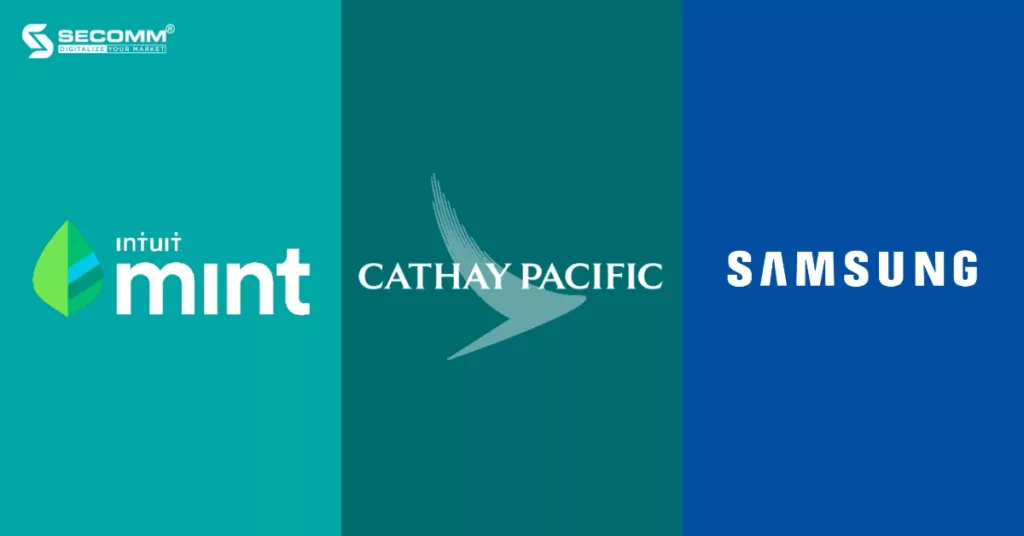
AWS Lambda
AWS Lambda is a serverless computing service that allows businesses to run code without the need to manage servers. AWS Lambda enables businesses to execute code when events occur, optimizing resource usage and reducing costs.
Use cases for AWS Lambda:
- Processing data at scale: Execute code at the capacity you need exactly when it’s required. Scale automatically to match your data volume and trigger custom events.
- Running interactive web and mobile backends: Combine AWS Lambda with other AWS services to create secure, stable, and scalable online experiences.
- Supporting powerful ML insights: Preprocess data before feeding it into your machine learning models. With access to the Amazon Elastic File System, AWS Lambda manages the scaling process and provides infrastructure to simplify scaling adjustments.
- Creating event-driven applications: Build event-driven functions to allow isolated devices to communicate easily with each other. Reduce costs by running applications at maximum demand without incidents or over-provisioning resources.
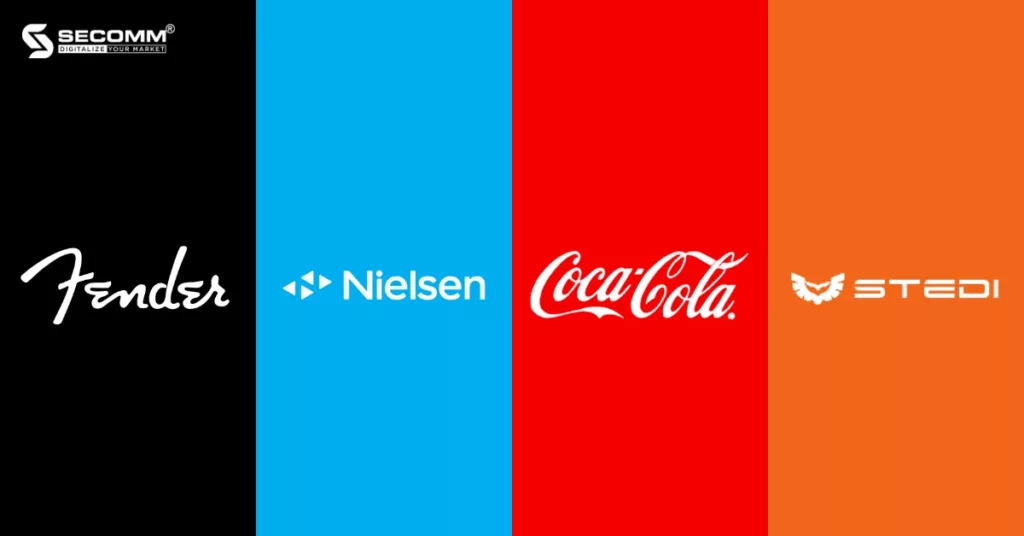
Amazon VPC
Amazon Virtual Private Cloud (Amazon VPC) allows businesses to define and launch AWS resources in a logically isolated virtual network, providing full control over the virtual network environment, including resource placement, connectivity, and security.
Use cases for Amazon VPC:
- Launching a simple website or blog: Enhance the security of your web application by enforcing rules for incoming and outgoing connections.
- Hosting multi-tier web applications: Define connectivity and network constraints between your web servers, application servers, and databases.
- Creating hybrid connections: Build and manage VPC networking compatible with AWS services and your on-premises resources.
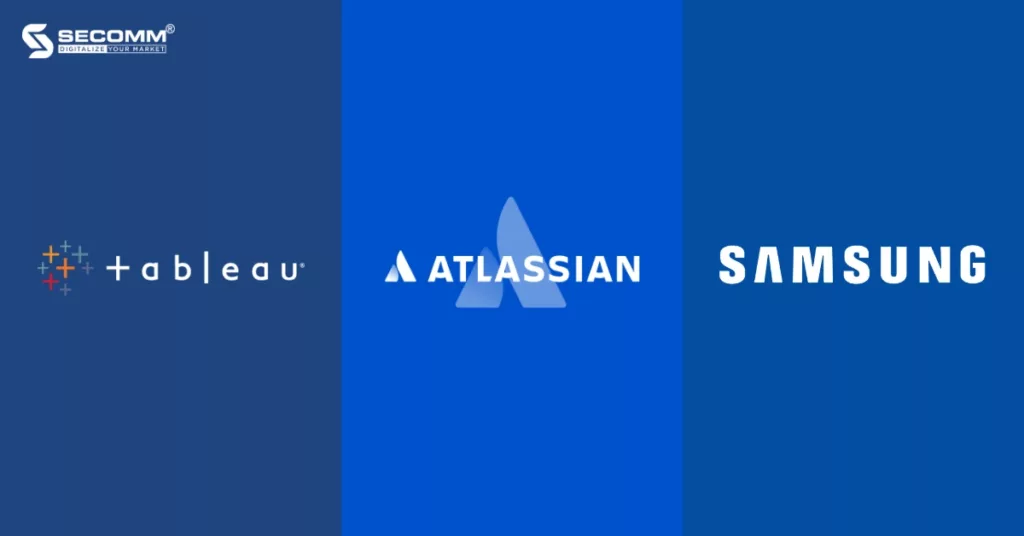
Amazon Lightsail
Amazon Lightsail is an AWS service designed to simplify the deployment and management of applications and websites in the cloud environment. It offers an easy-to-use virtual private server with pre-configured containers, storage capacity, databases, snapshots, and more, all at an affordable monthly price.
Use cases for Amazon Lightsail:
- Launching a simple web application: Use pre-configured development stacks like LAMP, Nginx, MEAN, and Node.js to quickly and easily get your content online.
- Creating custom websites: Build and personalize your personal, e-commerce, or blog website in just a few clicks with pre-configured applications like WordPress, Magento, Prestashop, and Joomla.
- Building applications for small businesses: Kickstart your business software, such as file storage and sharing, backups, financial and accounting software, and more.
- Setting up a testing environment: Easily create, delete, and test development sandboxes and testing environments to experiment with new ideas without risk.
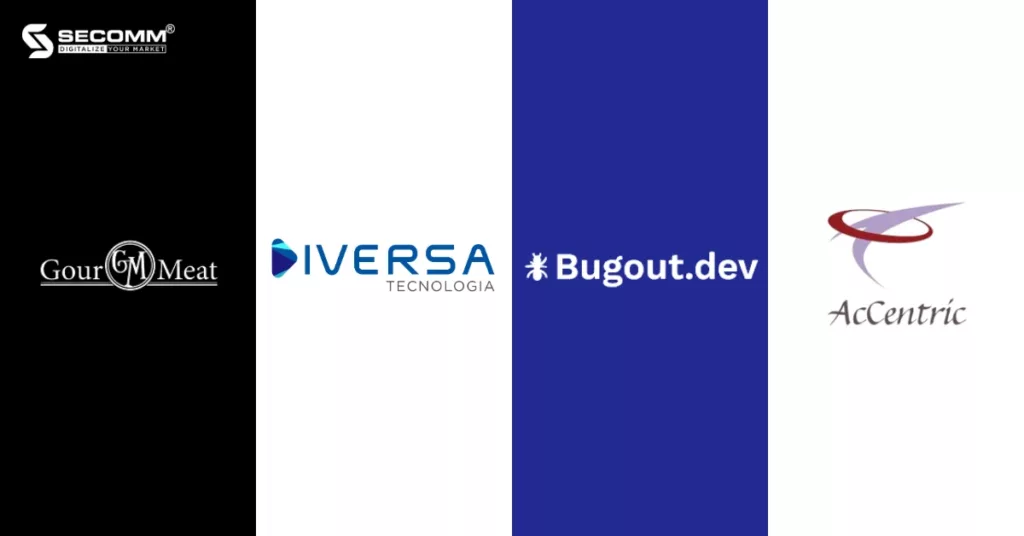
Amazon SageMaker
Amazon SageMaker is a service for building, training, and deploying machine learning models for any use case with fully managed infrastructure, tools, and workflows.
The primary application of Amazon SageMaker is the development of practical machine learning applications, including product recommendations, personalization, smart shopping, robots, and voice-enabled devices.
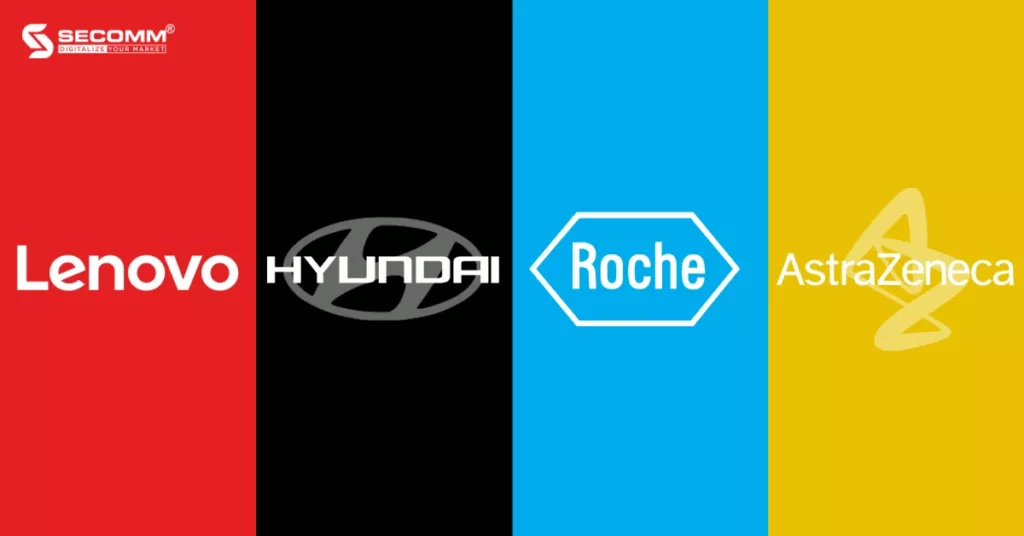
In over 16 years since its establishment to date, AWS has provided cloud services to millions of customers worldwide with a global-scale operational experience. In the near future, AWS may continue to maintain its leading position in this over 60 billion USD market with a market share range of 32-34%.
To learn more about AWS and how to deploy AWS for your business, contact SECOMM or call the Hotline at (02871089908) for a free consultation.
 2
2

 13,330
13,330

 0
0

 1
1
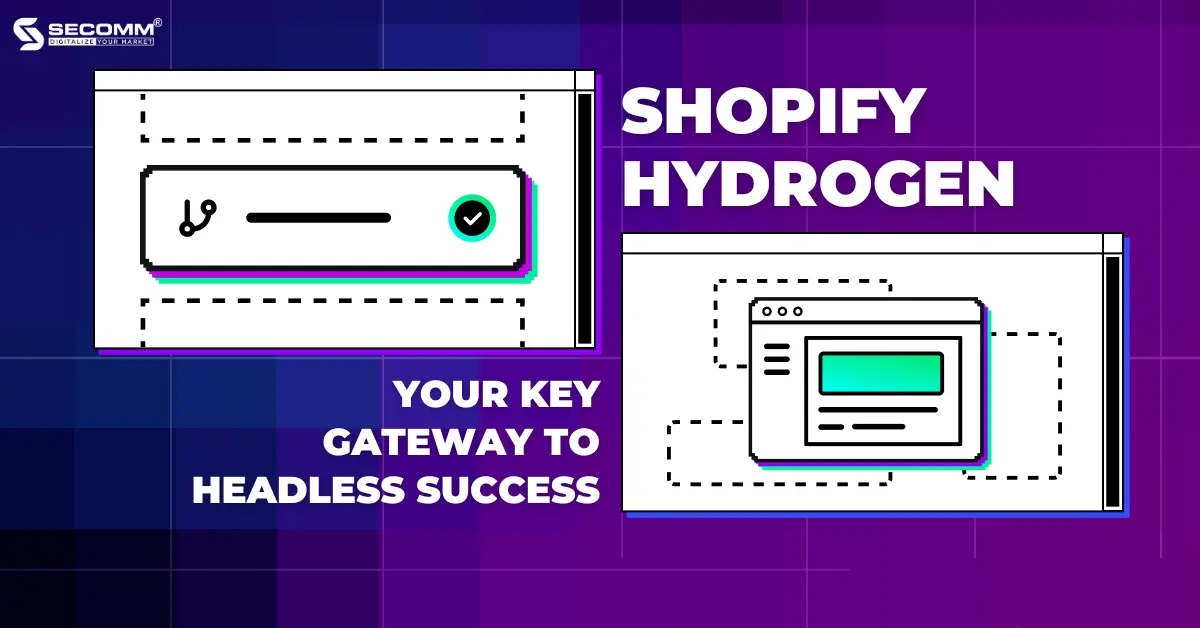
SHOPIFY HYDROGEN: YOUR KEY GATEWAY TO HEADLESS SUCCESS
Today’s eCommerce consumers are no longer confined to a single channel or device for their shopping needs. They have a ton of options, including mobile apps and social media platforms. As a result, businesses are striving to establish a robust multi-channel presence to swiftly engage with their customers. One highly effective approach to achieving this goal is through the implementation of Headless Commerce.
In recent years, investors have shown a significant interest in Headless Commerce platforms and associated solutions, recognizing their pivotal role in shaping the future of online commerce.
Forbes reports that between 2020 and 2021 alone, more than $1.65 billion in funding was directed toward Headless technologies. In response to this evolving landscape, Shopify unveiled the Hydrogen solution in June 2021, designed to facilitate the development of headless Commerce storefronts.
The following article aims to provide a comprehensive understanding of Shopify Hydrogen, shedding light on both its pros and cons.
Overview
Shopify offers businesses the Hydrogen framework solution, originally based on React but now being developed with Remix, in conjunction with the global hosting solution known as Oxygen.
What is Shopify Hydrogen?
In the past, Shopify website developers utilized the platform’s templating language known as Liquid, which often faced performance limitations. Consequently, to ensure top-notch website performance for headless commerce, Shopify businesses require a specialized solution.
Typically, businesses implementing headless projects on Shopify Plus opt for the React framework over Liquid due to its superior technical aspects. Moreover, headless stores on Shopify Plus offer heightened flexibility, customization, and scalability compared to standard headless stores on Shopify.
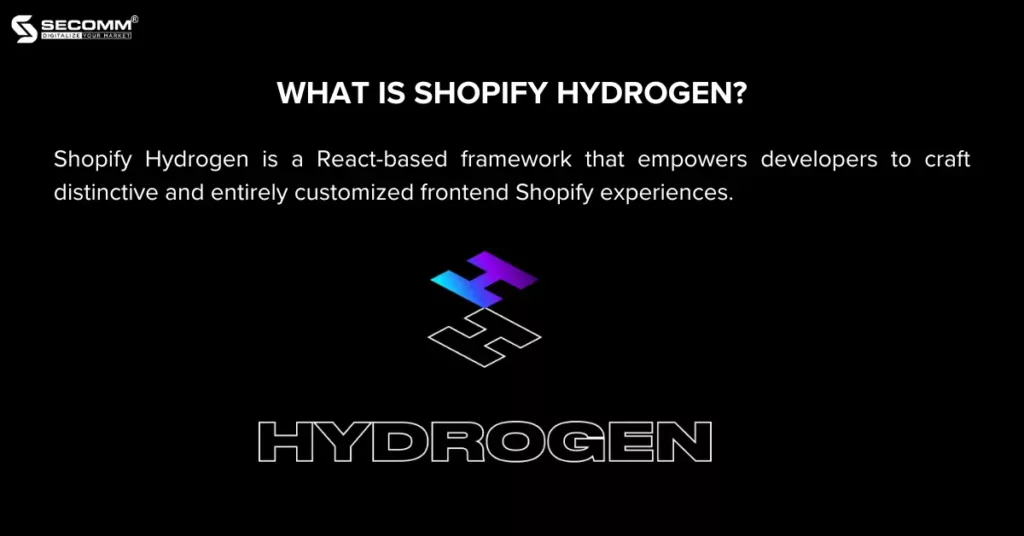
Therefore, Shopify has introduced a solution that allows both Shopify Plus and standard Shopify businesses to build and advance the most optimized headless eCommerce websites possible. This led to the creation of the Hydrogen framework solution and Oxygen hosting.
Shopify Hydrogen is a React-based framework that empowers developers to craft distinctive and entirely customized frontend Shopify experiences. This framework encompasses all the essential structures, components, and pre-built tools necessary for developers to swiftly create headless stores and deliver personalized user experiences.
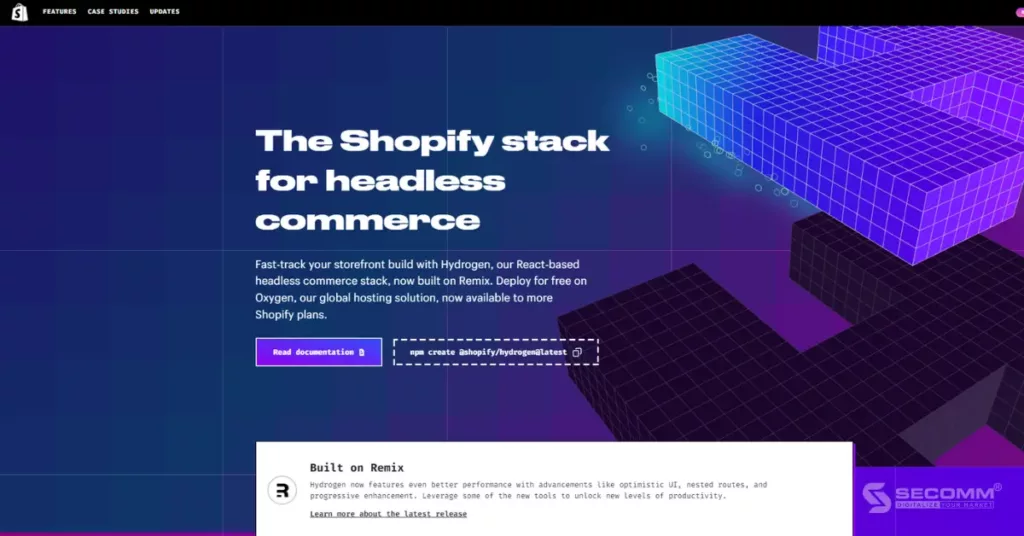
What is Shopify Oxygen?
Shopify Oxygen is a worldwide hosting solution designed to store custom content, like Hydrogen stores, directly within the Shopify platform. Previously, Shopify businesses seeking to develop Headless Commerce had to depend on third-party hosting providers (e.g., Netlify).
In contrast, Oxygen is supported by Shopify’s extensive global infrastructure, featuring over 100 server locations worldwide. Thanks to this, Hydrogen stores can seamlessly and directly integrate with Oxygen hosting through the Storefront API, eliminating the need for reliance on third-party providers.
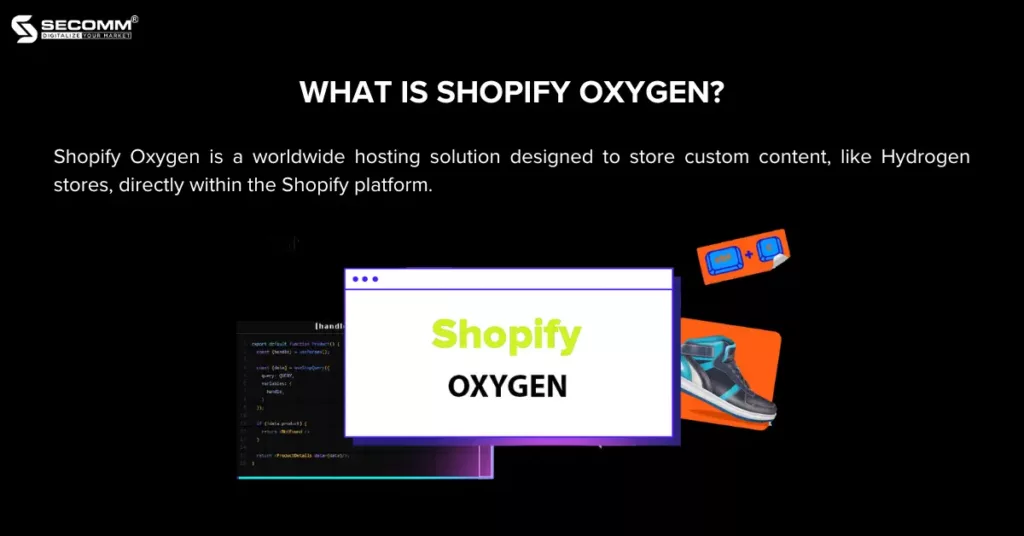
Remix – The New Highlight of Shopify Hydrogen
In the first quarter of 2023, Shopify unveiled Hydrogen v2, highlighting the web development tool called Remix. This tool has earned recognition from developers as one of the top React frameworks, trailing only behind Next.js. Consequently, Shopify acquired Remix and designated it as the cornerstone of the Shopify Hydrogen solution.

The reason for this lies in the fact that Hydrogen v1 faced performance-related criticisms after some time in operation. The acquisition of Remix is a part of Shopify’s efforts to rectify these issues, leading to the emergence of Hydrogen v2.
While developers tend to favor Next.js over Remix due to its open structure, allowing for greater customization and offering a more favorable developer experience, it doesn’t guarantee output quality and website performance.
Conversely, Remix employs a closed structure that mandates developers to adhere to the framework’s template. This approach closely aligns with Shopify’s SaaS model, providing a web development framework and enforcing developers to follow specific principles during deployment.
This adherence ensures website performance and significantly enhances conversion rates. Therefore, Remix is the ideal solution chosen by Shopify to address the existing performance gaps in Hydrogen stores and enhance the eCommerce experience for customers.
Pros of Shopify Hydrogen
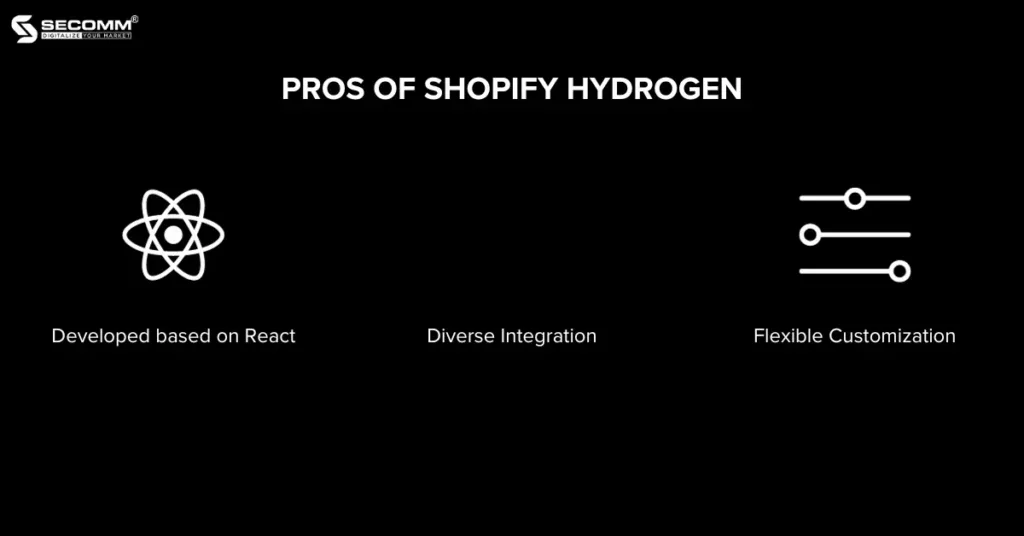
Developed based on React
Hydrogen represents Shopify’s investment in the development of Headless eCommerce. Therefore, it’s fair to classify any Shopify store using the Hydrogen framework and Oxygen hosting as a Headless Shopify store.
The Headless architecture has consistently garnered praise from industry experts, who anticipate its continuous evolution. Shopify’s decision to incorporate React – the JavaScript library for frontend interface development – as the cornerstone of the Hydrogen solution underscores this platform’s forward-looking perspective on the future of eCommerce, firmly rooted in the Headless trend.
Diverse Integration
The launch of Shopify Hydrogen aims to assist businesses in building professional Headless eCommerce websites and providing customers with a seamless multi-channel experience.
Therefore, Shopify extends the capability to seamlessly integrate Hydrogen stores with various third-party applications and platforms like Klaviyo, Gorgias, and Rebuy (to enhance the customer experience), as well as Sanity, Contentful, and Builder.io (for Headless CMS implementation).
Learn more about Headless CMS:
- What is Headless CMS?
- 10 Enterprise Headless CMS Platforms (Pt.1)
- 10 Enterprise Headless CMS Platforms (Pt.2)
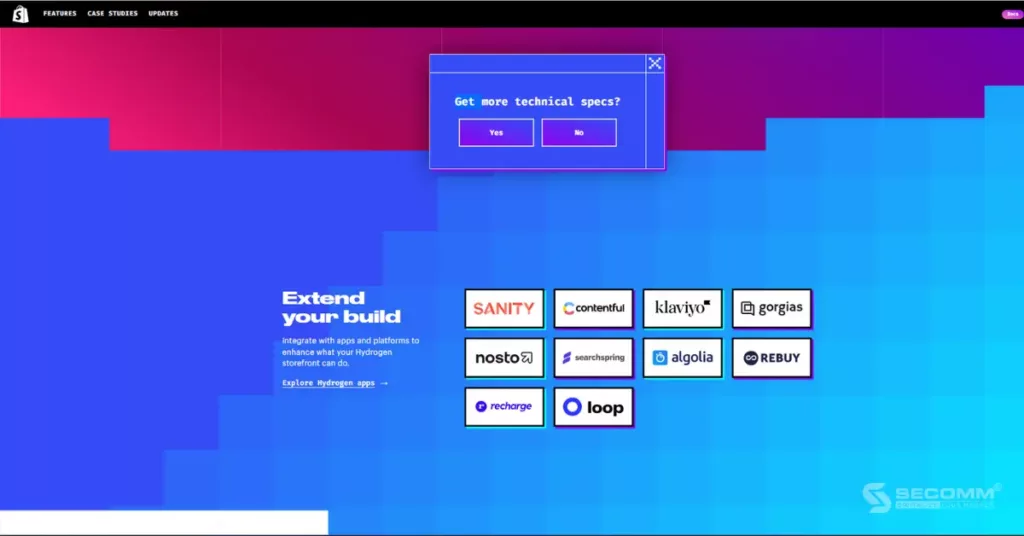
Flexible Customization
Numerous enterprises choose to implement Headless eCommerce because it grants them full control over the development of the frontend interface, free from the limitations of specific platforms. Shopify Hydrogen also empowers businesses to construct entirely personalized headless website interfaces and integrate essential features for expansion.
Cons of Shopify Hydrogen
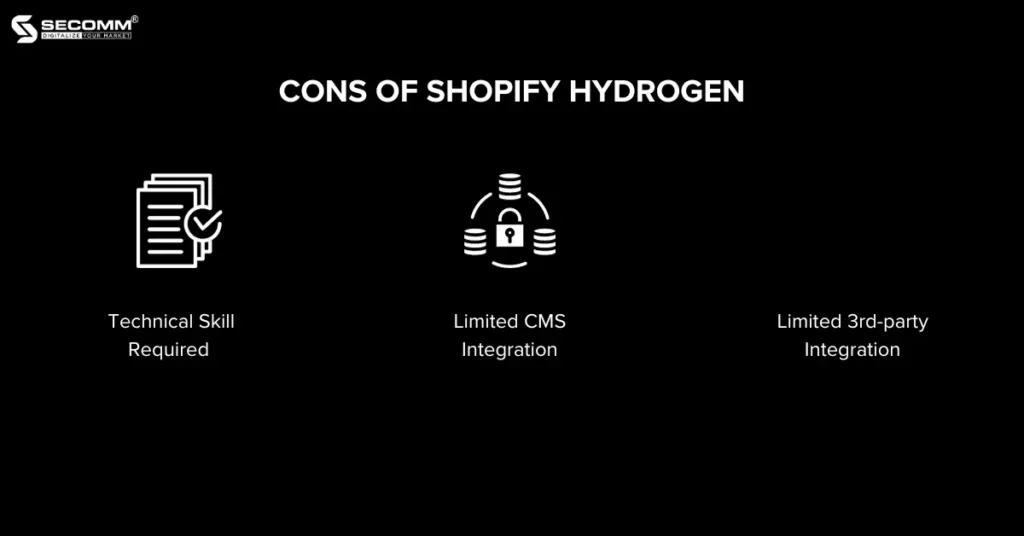
Technical Skill Required
Hydrogen solution empowers businesses to leverage the potential of Headless eCommerce, but it’s predominantly a technically-driven endeavor without a user-friendly drag-and-drop interface for non-technical users to easily access and modify.
Hence, the development process necessitates the engagement of highly proficient developers with programming expertise and a specific comprehension of Hydrogen and Oxygen. In this scenario, businesses have two choices: establish an in-house team of developers or partner with an external specialized entity for swift deployment.
Limited CMS Integration.
Because it relies on the React framework, Hydrogen can assist developers in creating custom frontends, but the backend CMS functionality must be connected to enable the headless eCommerce website’s operation.
However, as of now, Hydrogen is limited to integrating with specific CMS platforms like Sanity, Contentful, and Builder.io, leaving businesses responsible for connecting with others independently.
Limited 3rd-party Integration
Much like CMS platforms, Hydrogen supports businesses in integrating with third-party provider applications, but it has rather limited options. Currently, there are only 13 available applications that businesses can incorporate into their Hydrogen store.
In the many years of implementing Headless eCommerce for numerous clients across various countries, SECOMM has noticed an increasing demand for creating Headless websites using the Shopify platform. Now, businesses have a choice: they can either leverage Shopify’s tech stack (Hydrogen and Oxygen) or build a custom stack tailored to their unique requirements.
This further solidifies Shopify as one of the most flexible eCommerce platforms today, leading the way towards the next generation of eCommerce experiences.
Contact us or call SECOMM’s hotline (02871089908) for a free consultation.
 2
2

 10,457
10,457

 0
0

 1
1





